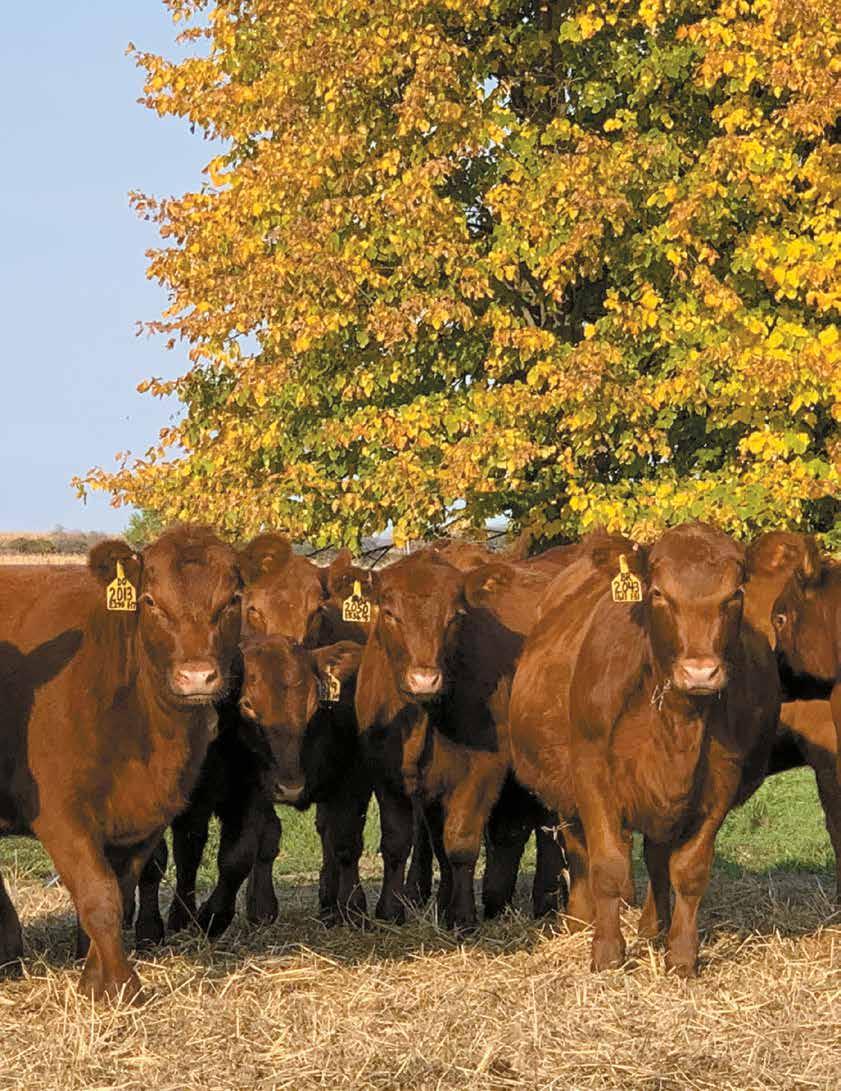

Beckton Red Angus
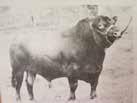



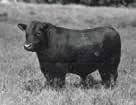


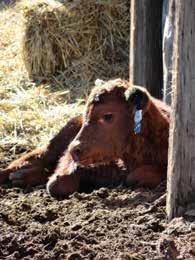
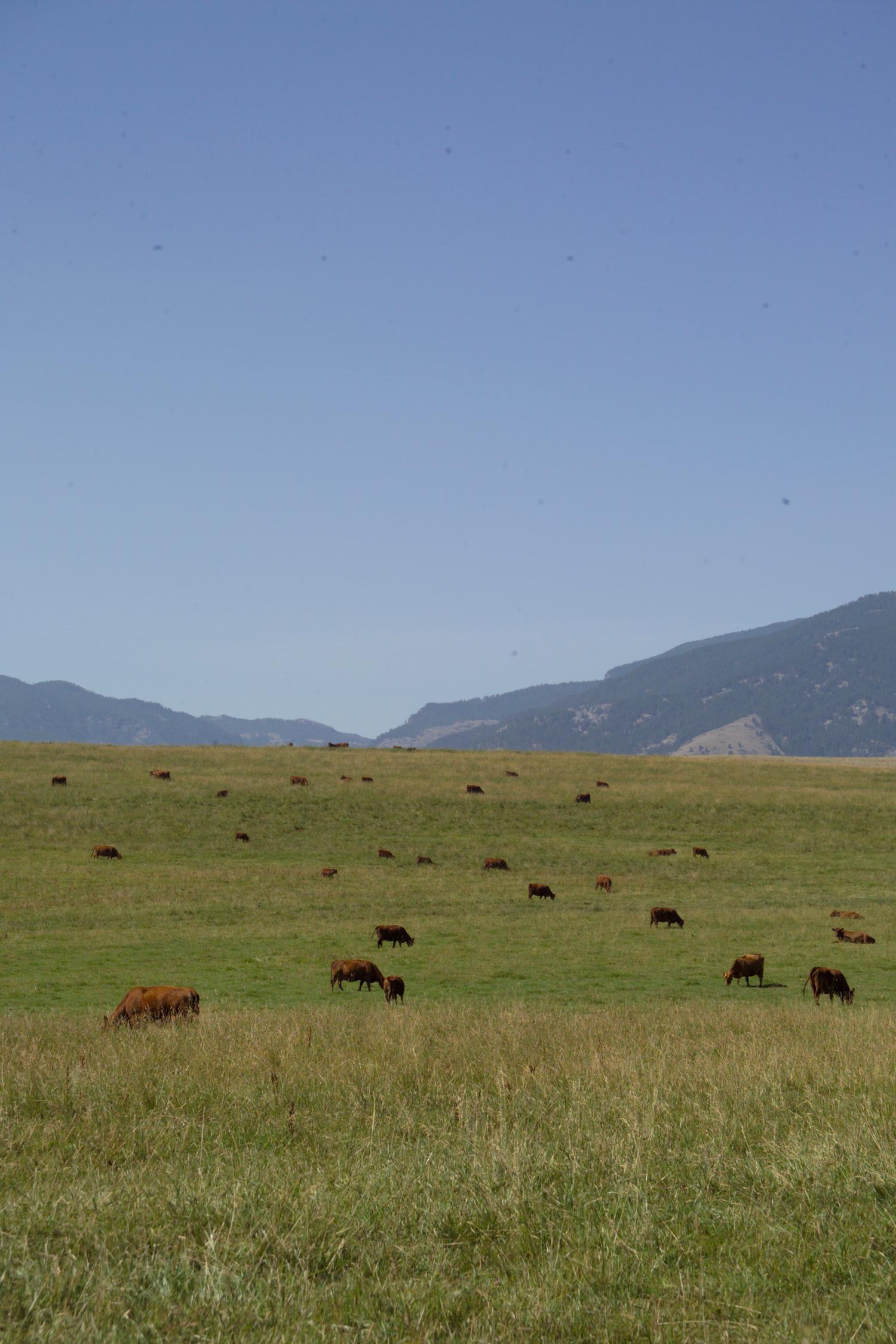
Beckton Julian GG B571 1992
Beckton Nebula P P707 2004
Beckton Larkabelang S2 1954
Beckton Stormalong 105 1962
Beckton Larkabeau O 1954
Beckton Accent W180 C2 2009

Magazine
Official Publication of the Red Angus Association of America Volume 61, Number 8
18335 E 103rd Avenue, Suite 202 Commerce City, CO 80022
940-387-3502 • Fax 888-829-6069 RedAngus.org
Publisher/Advertising Director Tracey Koester 701-391-5440 • tracey@redangus.org
Editor Maclaine Shults-Mauney 785-448-0239 • maclaine@redangus.org
Subscriptions and Circulation Jaeden Schneider 940-387-3502, Ext. 7 • email: membership@redangus.org

Affiliated with National Cattlemen’s Beef Association Beef Improvement Federation U.S. Beef Breed’s Council National Pedigreed Livestock Council
GENERAL INFORMATION
Published 10 times annually by the Red Angus Association of America at the national headquarters (18335 E. 103rd Ave., Suite 202, Commerce City, CO 80022). A non-political magazine dedicated to the promotion and improvement of breeding, feeding and marketing Red Angus cattle. Subscription rate: U.S., 1 year - $30; 2 years - $55. Canada and Mexico, 1 year - $44, 2 years - $82 (Payable in U.S. Funds Only). International Air Mail, 1 year - $55; 2 years - $100 (Payable in U.S. Funds Only). These rates are based on Third Class Bulk mailed from Jefferson City, Missouri. Add $20 per year for First Class.
EDITORIAL AND ADVERTISING POLICY
Advertising and editorial content are not limited to any particular class of product or subject matter. However, we reserve the right to refuse publication of any material not within the bounds of high agricultural ethics. While we devote the utmost care to the preparation of each advertisement, we cannot be held responsible for ads received after the ad deadline. Furthermore, the accuracy and content of copy received over the telephone is entirely the responsibility of the advertiser. No adjustment for incorrect ad copy will be considered for ads that are received after the ad deadline or that are placed over the telephone.
All unused reserved advertising space that is not canceled by the advertising deadline will be billed to the advertiser.
ADVERTISING RATES
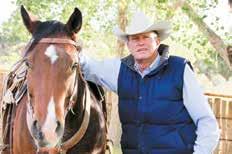
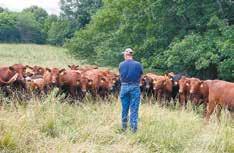
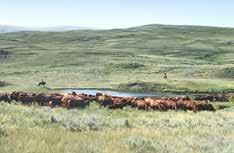
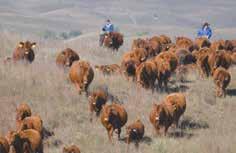



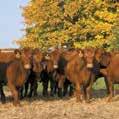
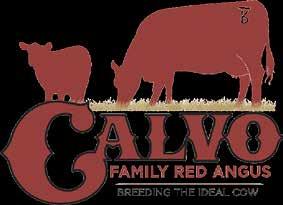

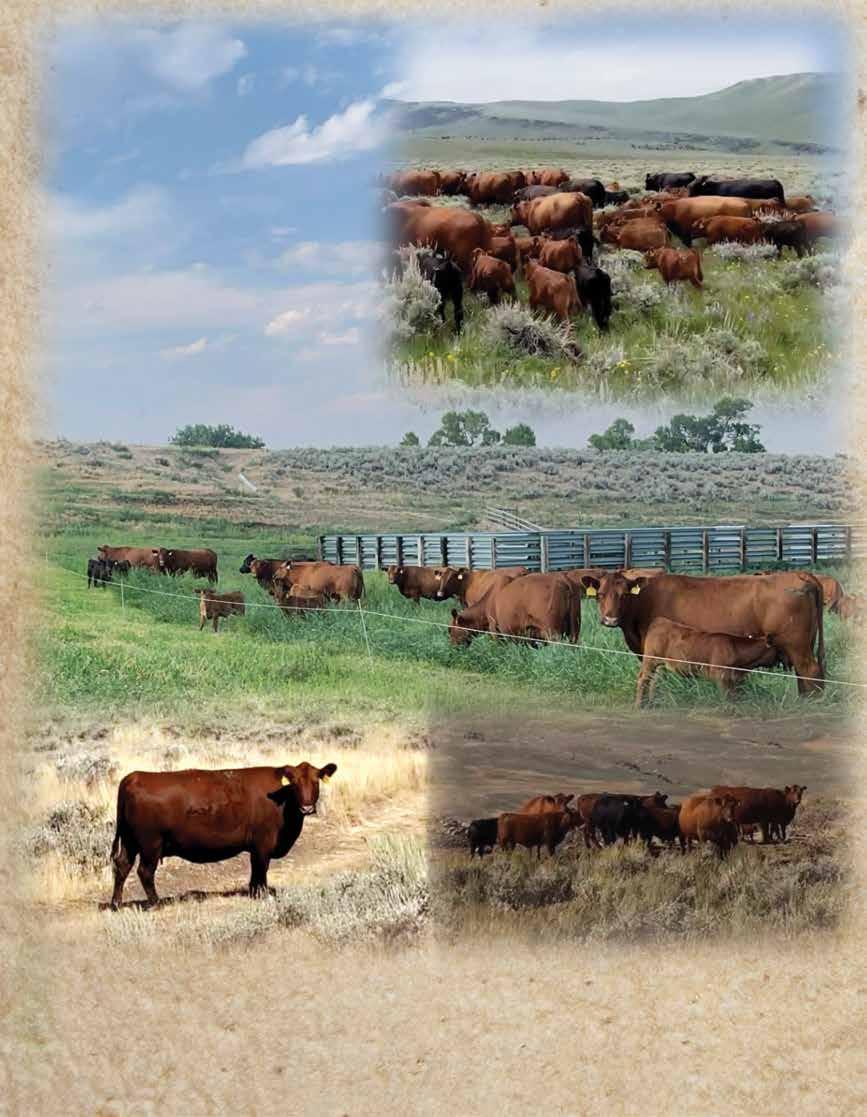
RAAA Board of Directors
PRESIDENT
Kyley DeVoe | Justin, Texas kyley@3klandandcattle.com
FIRST VICE PRESIDENT
AREA 4 DIRECTOR - SOUTHWEST
Tony Ballinger | Morgan Mill, Texas anthony.ballinger@adm.com
SECOND VICE PRESIDENT
AREA 7 DIRECTOR - NORTHEAST
Rob Hess | Hershey, Pennsylvania hessfarm@verizon.net
TREASURER
REGION C DIRECTOR
Jeff Pettit | Sebree, Kentucky jeff@diamondpcattle.com
AREA 2 DIRECTOR - MONTANA BOARD SECRETARY
Kay Klompien | Manhattan, Montana klmpnra@gmail.com
REGION A DIRECTOR
Keith Hickle | Auburn, Washington keith.a.hickle@gmail.com
REGION B DIRECTOR
Craig Bieber | Leola, South Dakota craig@bieberredangus.com
AREA 1 DIRECTOR - WEST
George Murdock | Pendleton, Oregon murdockcattle@gmail.com
AREA 3 DIRECTOR - ROCKY MOUNTAIN
Aaron Kravig | Karval, Colorado akravig@kravigredangus.com
AREA 5 DIRECTOR - NORTHERN PLAINS
Stephanie Jung | Mina, South Dakota lazyjbarranch@yahoo.com
AREA 6 DIRECTOR - GREAT PLAINS
Jason Anderson | Oberlin, Kansas jasonea9@hotmail.com
AREA 8 DIRECTOR - SOUTHEAST
Jim Yance | Columbia, Alabama jim@jyjredangus.com
AREA 9 DIRECTOR - MIDWEST
Will Andras | Manchester, Illinois andras@irtc.net
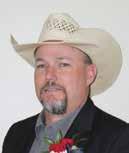
Board Commentary
Change With Purpose, Progress With Vision
by Tony Ballinger, Area 4 Director, Southwest, First Vice President
When is the right time for change? I’ve pondered that question often over the past several months. Change is never easy, but it is a constant in business, especially during the past 28 years of my “big boy” life.
The consolidation of all facets of the agriculture community has undergone massive transformation in the last 30 years. From pharmaceutical companies to feed companies and a whole host of entities in between, the big get bigger while the small often struggle to stay relevant, until they’re either bought out or forced to give up.
One thing we can always count on is that things will change. Those who leverage the opportunities that come with change not only survive but many thrive and take their businesses to the next level.
RAAA has the opportunity to do just that – today. As many of you have seen, our 30-year-old PVP, which was ahead of its time in 1995 and remains just as relevant today, has received a facelift. We are transitioning the FCCP “yellow tag” program to Angus Access, a name that, in my opinion, better describes what we’ve been striving to achieve for the last three decades.
This has been a monumental task, and I couldn’t be prouder of our staff and the industry partners who worked alongside us to get the new messaging right and in front of the right audience. We’re just getting started, and the future is exciting!
Building on Angus Access, we’ve also launched a new collaboration with Breedr and Ian Wheal. Breedr is a cattle management platform that digitally tracks animals from ranch to rail, giving producers access to real-time data and supply chain tools.
The addition of Breedr helps RAAA commercial bull buyers connect their high-quality Angus cattle with the right markets, ultimately bolstering customer profitability. This collaboration also strengthens market access, improves traceability and helps Red Angus genetics integrate more seamlessly into branded beef programs, creating added value for producers.
With all of this in motion, it’s difficult not to have a good day marketing calves right now. Tight feeder cattle supplies and a 70-year-low-cow inventory have created an unprecedented market for all classes of cattle. We all know that will change, and the market will correct itself eventually.
While we enjoy the highs, I challenge each of you to prepare for the shift we know is coming. Consider enrolling in Angus Access and leveraging the value of Breedr to strengthen your herd and help commercial customers capture more value from their Angus-sired calves – because now is the right time.
If RAAA, its members and our commercial producers work together, we can elevate the Red Angus breed to an entirely new level of profitability. When that happens, every one of us will benefit. By seizing this moment and embracing the tools before us, we can ensure Red Angus not only thrives today but leads the industry into the future. //
Bieber Fever
From pasture to packer — BieBer red angus gives you genetics that deliver.
BieBer Fever in the southeAst
octoBer 16 • semiemA FArms in swAinsBoro, gA
oFFering 50 Age-AdvAntAged red Angus Bulls
BieBer Fever FAll sAle
novemBer 13 • At the rAnch neAr leolA, sd
oFFering registered Bred heiFers, registered Bred cows, commerciAl Bred heiFers, And Age-AdvAntAged Bulls
Age-AdvAntAged Bulls sired By jumpstArt j137, pAycheck 0728, exActly 1144j, checkmAte k126, Asset 1276, And more!


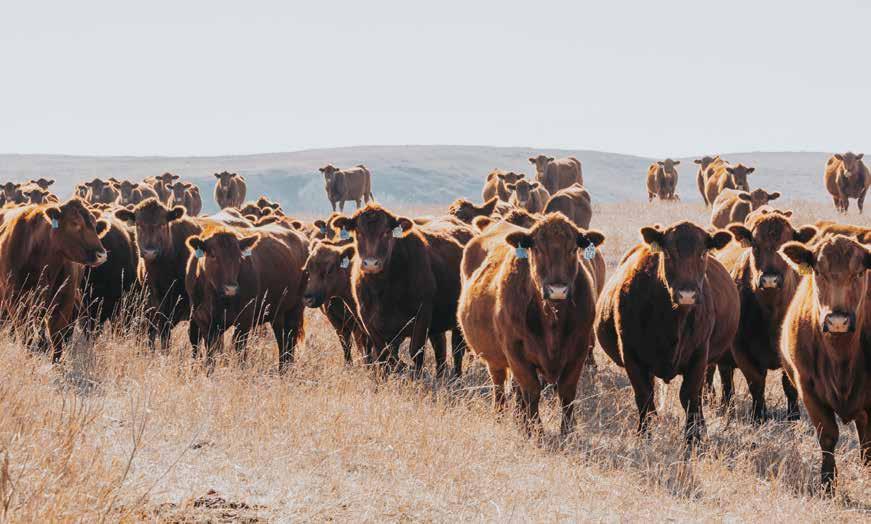
RAAA National Office
18335 E. 103rd Ave., Suite 202
Commerce City, CO 80022
940-387-3502 | FAX 888-829-6069 info@redangus.org | RedAngus.org
RAAA National Staff
EXECUTIVE DIRECTOR OF OPERATIONS
Halla Ramsey Ext. 10 | halla@redangus.org
DIRECTOR OF BREED IMPROVEMENT
A.J. Knowles Ext. 39 | AJ@redangus.org
REDSPRO & REGISTRY TEAM LEAD
Kaitlyn Fulmer Ext. 6 | kaitlyn@redangus.org
MEMBER SERVICES SPECIALIST
Stephanie Essegian Ext. 26 | stephanie@redangus.org
DNA PROGRAMS MANAGER
Ariana Maxey Ext. 24 | ariana@redangus.org
DNA CUSTOMER SERVICE SPECIALIST
Julia Sanderson Ext. 14 | julia@redangus.org
DNA CUSTOMER SERVICE SPECIALIST
Andi Inmon Ext. 5 | andi@redangus.org
DATABASE AND REGISTRATION CONSULTANT
Kenda Ponder Ext. 15 | kenda@redangus.org
PUBLISHER & ADVERTISING DIRECTOR
Tracey Koester 701-391-5440 | tracey@redangus.org
DIGITAL MEDIA SPECIALIST
Trisha Klement Glassinger 580-775-5090 | trisha@redangus.org
EDITOR & WRITTEN CONTENT SPECIALIST
Maclaine Shults-Mauney 970-234-9685 | maclaine@redangus.org
SHOW SPECIALIST
Erin Dorsey 970-396-5420 | erin@redangus.org
ACCOUNTING DIRECTOR
Janet Russell Ext. 11 | janet@redangus.org
MEMBERSHIP & ACCOUNTS RECEIVABLE
Jaeden Schneider Ext. 7 | jaeden@redangus.org
JUNIOR PROGRAM COORDINATOR
Taylor Dorsey 970-397-0356 | taylordorsey@redangus.org
RECEPTIONIST
Tabitha Romero Ext. 3 | receptionist@redangus.org

Association Commentary
Called to Serve
by Halla Pfeiff Ramsey, Executive Director of Operations
FFA and 4-H have always been close to my heart, as I know they are for many of our readers, reminding me where my own journey of service began. From a young age, we’re taught to serve – our Lord, our land and our communities. That foundation naturally extends to serving the Red Angus family.
Service requires balance with the duties, chores and activities that pull at us, but at its core it must be personal and heartfelt.
Each of us is called to serve for different reasons:
• To influence and inspire
• To drive innovation
• To share passion
• To leave a legacy
• To lead with purpose
• To advocate for Red Angus and agriculture
At the heart of agriculture lies commitment to future generations. Our work is not just about today but about leaving a legacy of leadership, sustainability and opportunity. Agriculture is more than a career – it’s a calling to serve by producing food, fiber and fuel for the world.
To all who have served RAAA – past presidents, board and committee members –we extend a heartfelt thank you. Your dedication and vision have propelled this organization forward.
I specifically honor those who recently completed full board terms: Kay Klompien, Aaron Kravig, Jim Yance, Jeff Petitt and Kyley DeVoe. Your contributions left a lasting mark. At the same time, we welcome newly elected board members and the fresh perspectives you bring.
As we move forward, our president will lead efforts to evaluate and strengthen committees to ensure maximum impact. Committees remain the best avenue for members to serve, connect and lead. If you have not yet considered involvement, I encourage you to reach out to your board representative or to me directly.
Our board and committees serve, but so do our staff, continuously supporting members with passion and countless hours beyond the typical workday. Time and again, I hear from both stakeholders and staff that their “why” is the people of this breed – a powerful statement that never goes unheard.
Service is at the heart of our strategic plan, reflected in our values action statement: Relationship Driven – to build, nurture and serve our community of stakeholders. Together, through open-hearted service, we will continue building a legacy of leadership and boldly drive the Red Angus breed onward.
As Scripture reminds us:
Commercial Marketing Team and Value-Added Programs staff is on page 12
“Each of you should use whatever gift you have received to serve others, as faithful stewards of God’s grace in its various forms.” – 1 Peter 4:10. //

Elite Genetics to Elevate Your Program:





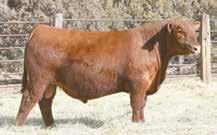









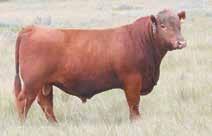



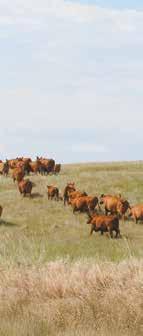

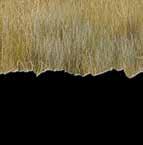







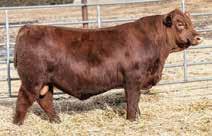



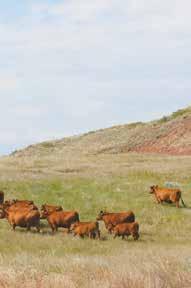












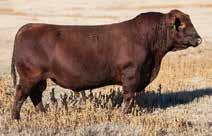



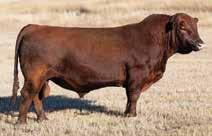

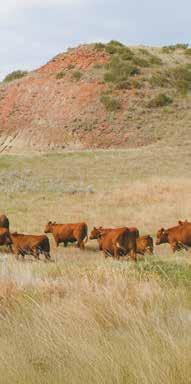




Fall Female Sale
Online - October 18th 2025
-6 Lots of Embryo Packages -12 Lots of Pregnant Embryo Recip Cows -5 Lots of Top Donor Cows -4 Lots of Elite Bred Heifers
-25 Lots of Heifers Bred to our Next Generation Herd Bulls -20 Lots of Cows Bred to Breed Leading Sires
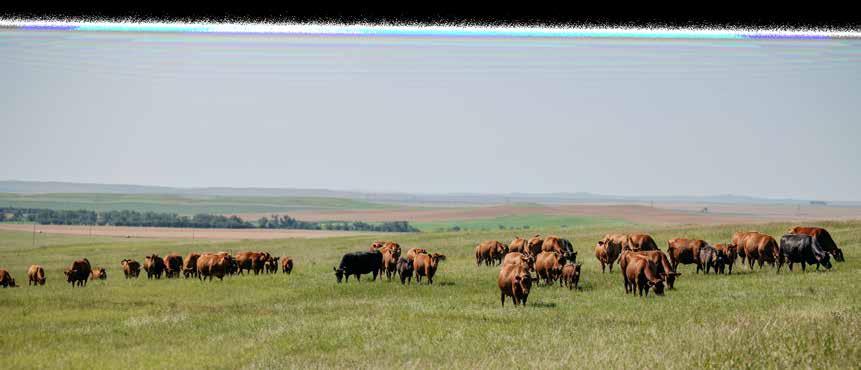





FEATURING PREGNANCIES, EMBRYOS AND BRED HEIFERS & COWS FROM NEXT GENERATION BULLS
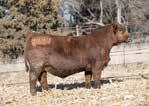
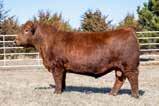
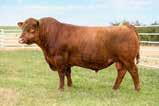
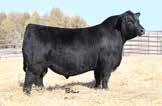
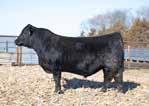
THESE DONOR COWS SELL!
As we update our donor lineup, we are proud to offer five of our most productive donors. These cows are in excellent condition and poised to continue their impressive track record of producing top-tier progeny for many years. Their history of successful flushes and exceptional calves speaks for itself, and we believe they will be a valuable asset to any breeding program.
HRP WIDELOAD C5461 830F RAAA #: 4014756
HRP SARAH D6043 805F RAAA #: 4014778
HXC 507C RAAA #: 3496392
9 MILE CHINOOK 8459-0262 RAAA #: 4333671
9 MILE ENVY X6631-0308 RAAA #: 4333699
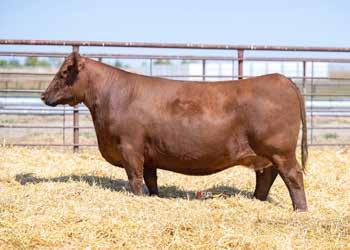
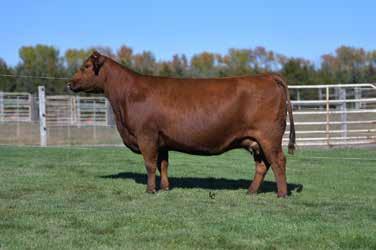
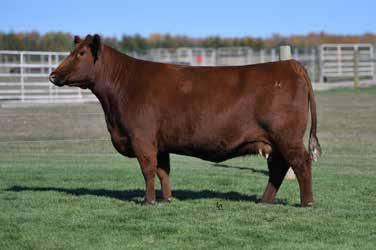


HXC 507C
WIDELOAD 830F
HRP SARAH 805F
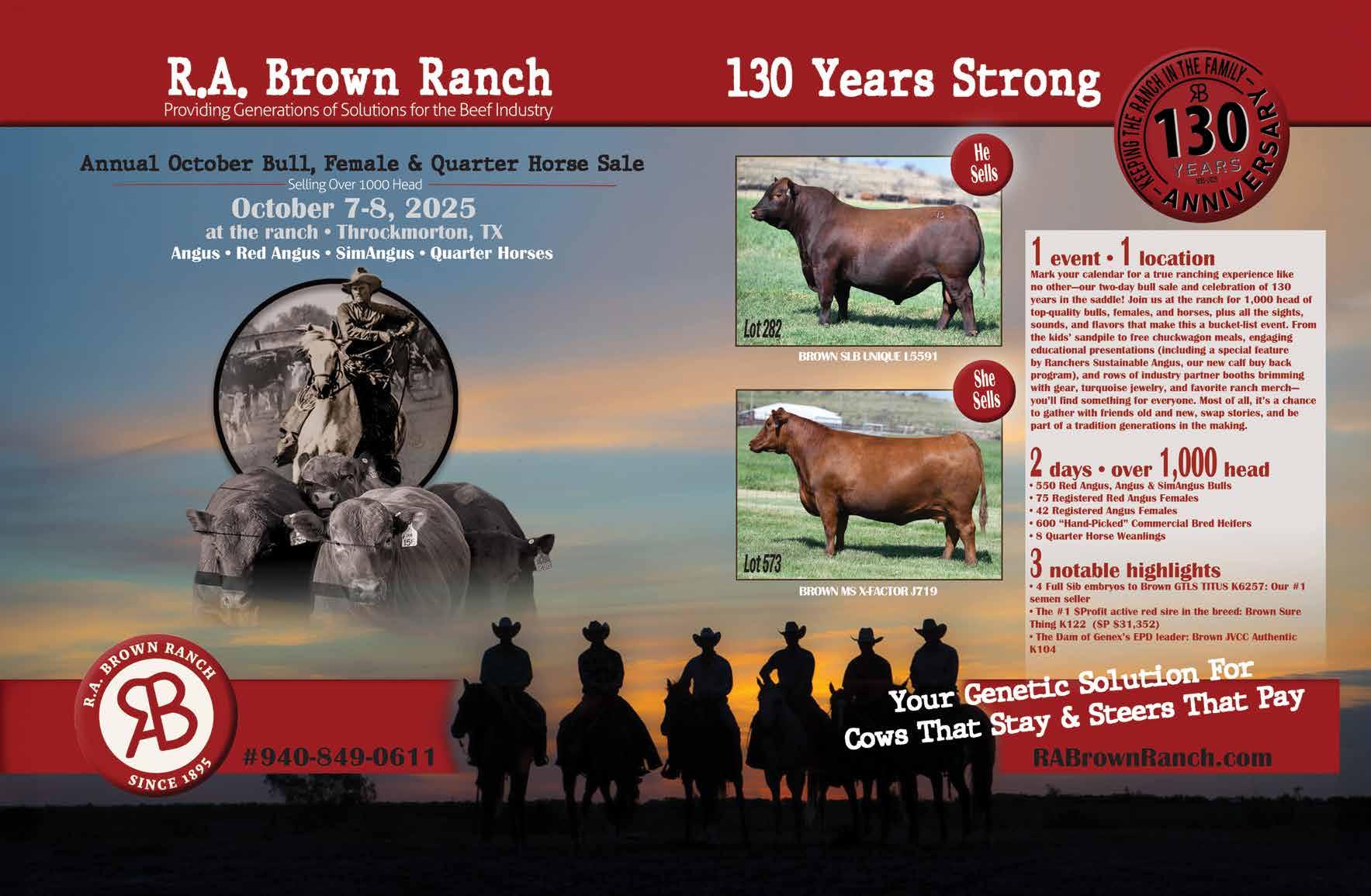

Red Angus Commercial Marketing Team and Value-Added Programs
DIRECTOR OF COMMERCIAL MARKETING
Kelly Smith
417-855-9461 | kelly@redangus.org
COMMERCIAL MARKETING SPECIALIST Cory Peters | cory@redangus.org 402-418-2351
COMMERCIAL MARKETING SPECIALIST
Taylor Ohlde | taylor@redangus.org 913-626-2715
COMMERCIAL MARKETING SPECIALIST
Elizabeth Caskey | elizabeth@redangus.org 706-513-4951
COMMERCIAL MARKETING SPECIALIST
Jesse Henson | jesse@redangus.org 828-734-3451
VALUE-ADDED DEPARTMENT TEAM LEAD
Jeananne Drouhard Ext. 18 | jeananne@redangus.org
VALUE-ADDED PROGRAMS SPECIALIST
Lauren Weingardt Ext. 20 | laurenweingardt@redangus.org
ENROLL IN VALUE-ADDED PROGRAMS AND ORDER TAGS: tags@redangus.org 940-477-4593
Weekly Email Marketing Service of Feeder and Finished Cattle
The Red Angus show list informs feedyard managers, order buyers and other interested parties of Red Angus-influenced cattle. Producers can market feeder or finished cattle through this free service when selling through a sale barn, video auction or private treaty. The weekly show list is emailed to potential buyers through the Red Angus FeederFax email service. To upload information about cattle or to view cattle available, visit RedAngus.org/showlist.
To receive the weekly FeederFax marketing service that will highlight that week’s show list, please visit bit.ly/RAAAFeederFax.
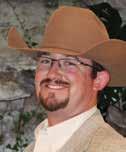
Marketing Update Strong Markets, Stronger Opportunities for Red Angus Producers
by Taylor Ohlde, Commercial Marketing Specialist
What a time to be in the cattle business! I hope everyone enjoyed a great summer of green grass, healthy calves and favorable weather as we step into fall. With markets reaching new highs and cattle numbers remaining low, this is an ideal time to focus on improvements across the board – from genetics to range management.
The commercial marketing team wrapped up the summer video sale season, where we watched some top-notch cattle cross the screen and visited with cattlemen nationwide about breeding strategies, management practices and cattle cycles. Now, we’re gearing up for feeder calf and bull sales this fall and winter, which I expect will be every bit as rewarding as this summer.
We’ve all been asked, “When will this cattle market slow down?” Personally, I believe markets will hold strong for the foreseeable future. With cattle numbers still low, land prices continuing to rise and development expanding into rural areas, rebuilding cow herd inventories is a challenge for the average producer.
It’s a bittersweet reality – while we are thankful for today’s prices, it’s heart-wrenching to see pasture and agricultural land lost to development and lost to our way of life forever.
On a brighter note, RAAA and the commercial marketing team have exciting news for Red Angus enthusiasts. First is the rebrand and relaunch of the Angus Access program. By giving FCCP a facelift, we’re creating fresh momentum that I believe will pay off for producers.
The goal is to make Red Angus cattle stand out even more in a competitive marketplace – offering buyers the confidence that these cattle are backed by a trusted, verified program while putting more dollars in the pockets of those who enroll.
The addition of EID requirements is another step forward in building that value and keeping Red Angus on the leading edge of opportunity.
Hand in hand with Angus Access comes another exciting development: our collaboration with Breedr. Their program is built to help folks track more than just headcounts – it lets you keep up with performance and health data and then share that with buyers who are looking for reliable cattle.
That kind of information builds trust on both sides of the sale ring. For producers, it means more marketing options and a chance to get in front of a wider set of buyers, while buyers gain confidence in knowing exactly what kind of cattle they’re investing in. At the end of the day, it’s another tool to add value to Red Angus calves and strengthen relationships across the supply chain.
As we move into fall, I wish everyone the best, whether you’re selling calves, preg checking cows, preparing cattle for sales or simply enjoying time with family.
Please don’t hesitate to reach out to me or any member of the commercial marketing team for updates, questions or just to talk about good Red Angus cattle. //

Special Red Angus-Influenced Feeder Calf Sale Calendar
10/2/25 Bagley Livestock Exchange
10/9/25 Billings Livestock Commission
10/10/25
Crawford Livestock Market
10/15/25 Torrington Livestock Markets
10/17/25 Crawford Livestock Market
10/21/25 Miles City Livestock Commission
10/21/25 West Branch Feeder Calf Sale
10/22/25 Equity Livestock
10/23/25 Mobridge Livestock Market
10/23/25 Ogallala Livestock Auction Market
10/23/25 Valentine Livestock Auction
10/27/25 Perham Stockyards
10/28/25 Stockmen’s Livestock Exchange
10/29/25 Lemmon Livestock Inc.
10/29/25 Sidney Livestock Market Center
Billy Bushelle 218-694-3701 Bagley, MN
Ty Thompson 406-245-4151 Billings, MT
Jack Hunter 308-665-2220 Crawford, NE
Lex Madden 307-532-3333 Torrington, WY
Jack Hunter 308-665-2220 Crawford, NE
Bart Meged 800-755-5177 Miles City, MT
Andy Katterman 989-387-2976 West Branch, MI
Logan Edenfield 715-687-4101 Stratford, WI
Jason Anderberg 800-658-3598 Mobridge, SD
Jay Nordhausen 308-284-2071 Ogallala, NE
Greg Arendt 402-376-3611 Valentine, NE
Mitch Barthel 218-346-3415 Perham, MN
Austin Henderson 701-225-8156 Dickinson, ND
Rowdy Benson 605-374-3877 Lemmon, SD
Tim Larson 406-482-3513 Sidney, MT
10/30/25 Glasgow Stockyards Inc. Iva March 406-228-9306 Glasgow, MT
11/3/25 Broken Bow Livestock
11/5/25 Hub City Livestock Auction
11/6/25 Bagley Livestock Exchange
11/6/25 Valentine Livestock Auction
11/7/25 LaCrosse Livestock Market
11/11/25 OKC West Livestock Market
11/20/25 Billings Livestock Commission
11/20/25 Valentine Livestock Auction
11/29/25 Lemmon Livestock Inc
12/1/25 Rugby Livestock Auction
12/2/25 Lake Region Livestock
12/3/25 Winter Livestock
12/4/25 Bagley Livestock Exchange
12/4/25 Valentine Livestock Auction
12/17/25 Equity Livestock
12/18/25 Valentine Livestock Auction
1/1/26 Bagley Livestock Exchange
1/8/26 Ogallala Livestock Auction Market
1/21/26 Hub City Livestock Auction
2/4/26 Lemmon Livestock Inc.
Justin French 308-872-3334 Broken Bow, NE
Glenn Gaikowski 605-225-3273 Aberdeen, SD
Billy Bushelle 218-694-3701 Bagley, MN
Greg Arendt 402-376-3611 Valentine, NE
Frank Seidel 785-222-2586 LaCrosse, KS
Pete Jeffries 405-262-8800 El Reno, OK
Ty Thompson 406-245-4151 Billings, MT
Greg Arendt 402-376-3611 Valentine, NE
Rowdy Benson 605-374-3877 Lemmon, SD
Cliff Mattson 701-776-6393 Rugby, ND
Chris Plummer 701-662-2223 Devils Lake, ND
Brian Winter 620-225-4159 Dodge City, KS
Billy Bushelle 218-694-3701 Bagley, MN
Greg Arendt 402-376-3611 Valentine, NE
Logan Edenfield 715-687-4101 Stratford, WI
Greg Arendt 402-376-3611 Valentine, NE
Billy Bushelle 218-694-3701 Bagley, MN
Jay Nordhausen 308-284-2071 Ogallala, NE
Glenn Gaikowski 605-225-3273 Aberdeen, SD
Rowdy Benson 605-374-3877 Lemmon, SD
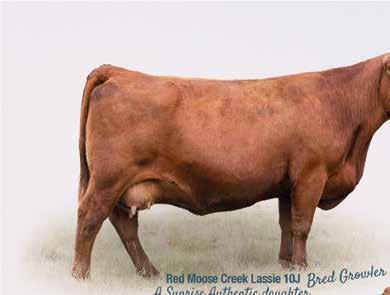
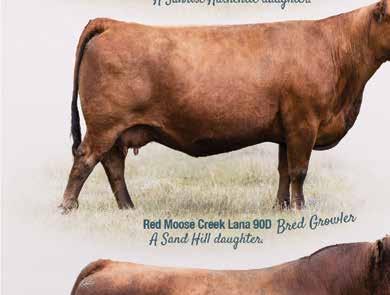
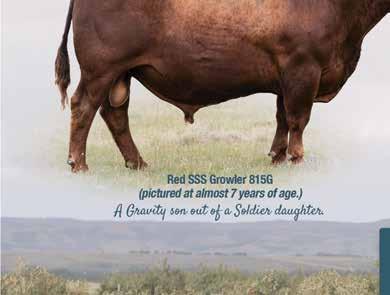
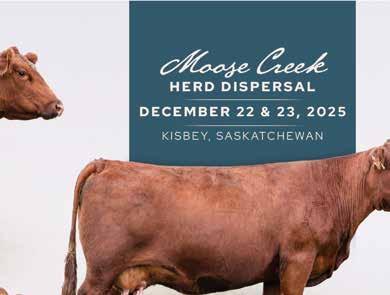

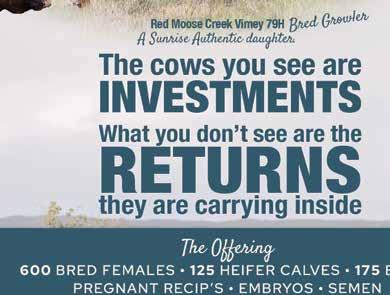

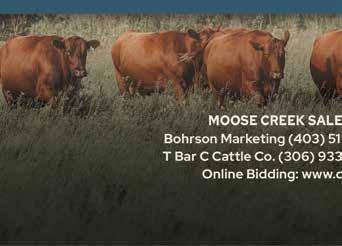
Due to ongoing recovery efforts following the tornado damage, we will be holding our sale at last year’s location. We appreciate your understanding and continued support as we rebuild. We look forward to seeing you there.

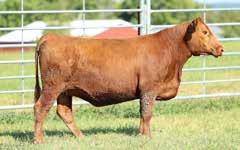
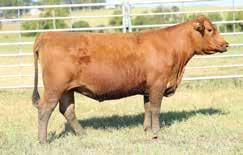

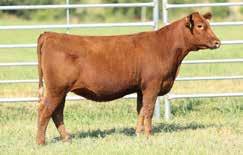
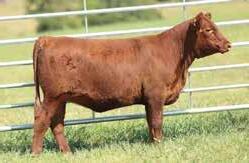
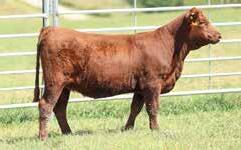

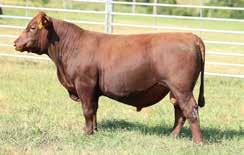
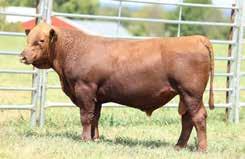
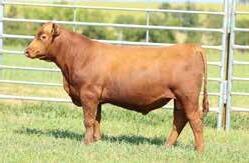
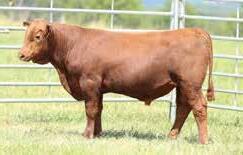
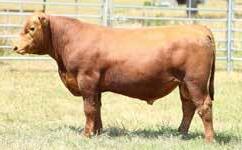
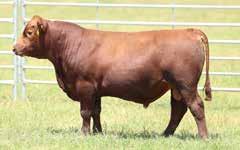
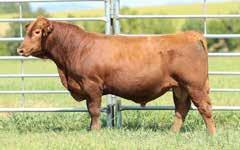



By Jacques Fuselier, DVM, MVS, DACT, DABVP
Developing replacement heifers to be productive cows
Replacement heifers are the future of your herd. Whether buying or raising replacements from within your own operation, their success and contribution to the herd depends on a sound development program. Ultimately, the goal is to get replacement heifers ovulating earlier and contributing to the operation as healthy, productive brood cows sooner.
Vaccination
To properly start priming the immune system, all calves should receive foundational calf vaccines and boosters as part of their weaning protocol, beginning around 60 to 90 days of age. Prior to their being AI’d or exposed to a bull, they should receive another modified live vaccine (MLV) to provide immunity toward pathogens that could cause loss of pregnancy.
Use a vaccine such as BOVILIS® VISTA® 5 VL5 SQ CFP that’s shown effective against the common pathogens that cause respiratory disease, fetal infection, pregnancy loss, and reproductive disease, such as infectious bovine rhinotracheitis (IBR), bovine virus diarrhea virus (BVD) Types 1 & 2, bovine respiratory syncytial virus (BRSV), parainfluenza3 virus (PI3), Campylobacter fetus (vibrio) and leptospirosis.
Timing of vaccines is important, relative to breeding. Administer vaccines at least 30 days prior to breeding season to help minimize any negative vaccine effects on fertility, as well as embryonic losses due to infectious reproductive diseases.
Nutrition
Getting calves off to a good start and gaining efficiently is an important component of a successful reproductive career. Heifers should be fed separately from mature cows to get the proper nutrition they need without competition. Feed replacement heifers a quality, wellbalanced ration that supports the appropriate growth rate to reach puberty and sexual maturity in the right time frame. Consult your veterinarian or nutritionist to design a heifer development ration.
Parasite Management
Managing parasites is important for optimal immune function and reproductive health. Research shows
that a parasite burden doesn’t need to be large before it negatively affects pregnancy rates and calf health. Deworming before pregnancy or at the start of the breeding season has been proven to result in more pregnancies, and healthier calves with better survival rates.
A good rule of thumb is to deworm heifers at the time of weaning or on arrival, and again prior to breeding them. An additional deworming may be needed depending on the time of year and parasite burden in the group. Deworming cattle doesn’t have to be labor intensive. Using feed and mineral forms requires relatively little time and labor while being highly effective.
A valuable tool to implement with deworming is to do fecal egg count reduction test (FECRT) to determine the effectiveness of deworming. You can request a free FECRT kit from your Merck Animal Health representative.
Reproductive Performance
Tools like reproductive tract scoring can be performed six to eight weeks before the start of the heifer’s first breeding season to determine 1) the percentage of heifers that are cycling, 2) those that are close to having their first cycle and 3) those that are too immature to breed. This tool helps indicate the reproductive readiness of beef heifers.
After heifers reach the proper size and weight to enter the pubescent period and sexual maturity, a simple heat synchronization program can help them to come in heat. For operations using AI or ET, SenseHub® Cow Calf monitoring technology helps detect estrus, indicates the ideal insemination windows, and alerts to potential reproductive issues.
Summary
A thorough and comprehensive developmental program for replacement heifers will ensure the success of your operation today and the stability of your herd for years to come. Work with your veterinarians and nutritionists to ensure you’re using the right protocols for proper development.

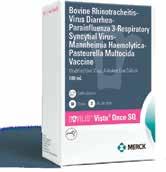
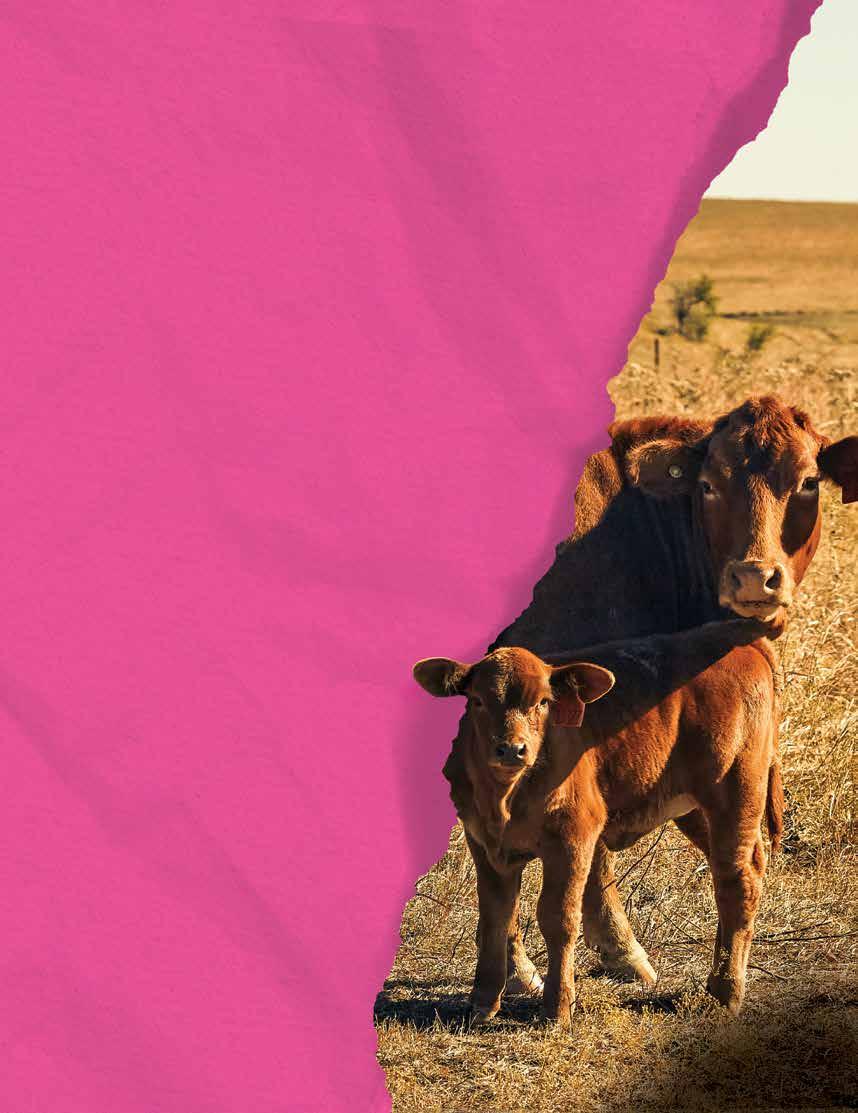
1
2
3Report
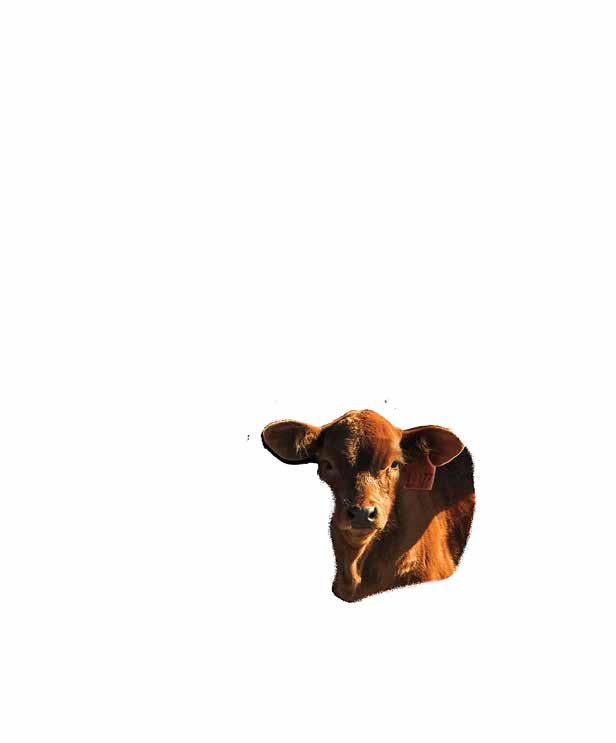
Member Services
Reminders
• Fall 2024 No Progeny Report is due Friday, Oct. 24.
• Fall 2024 Inactivations will occur Friday, Oct. 31, at 8 a.m. MST.
• Spring 2025-born calves are recommended to be registered by Oct. 15.
• The fourth and final installment of Spring 2025 THR will be billed in October, with payment due Nov. 25. Note: Accounts must be paid within 120 days to avoid inactivation.
• With sale season approaching, submit DNA orders early to avoid delays. Current turnaround time for results is four to six weeks.
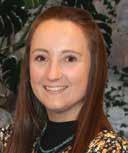
Simplifying Large Group DNA Submission
by Andi Inmon, DNA Customer Service Specialist
DNA processing can be complex, but understanding the journey of your sample Submitting DNA samples from a large group of calves can feel like a daunting task.
To make the process smoother, RAAA requires an Excel version of the order form for submissions of more than 35 animals. Members can either download a blank version from the website or generate a partially completed version, which pre-populates based on animal groups in REDSPro.
For the blank version, go to redangus.org. Under the Genetics/DNA tab, select DNA forms, and download the order form that correlates to the samples being submitted. For help using REDSPro to create the order form, follow the steps below.
Using REDSPro to Create a Pre-Populated Form
1. Log in to REDSPro. Click on the Herd Reports/Downloads tab, then select My Reports.
Sign up for THR Text Message Reminders: https://bit.ly/RedAngusReminders

Download the Go RedAngus App


Need a little one-on-one help?
Schedule a meeting by scanning the QR code or visiting: RedAngus.org > Herd Management > Red Angus Alley

2. Enter your account number. Members can then choose to pre-populate the order form using either an existing group of animals or by creating a new group.
3. Select a group. Some of the most useful default groups separate calf crops by year. For example, selecting 2025 Calf Crop will include all calves born in 2025 under the given account number.
4. Generate the report.
In the right-hand box under Default Reports, select DNA Neogen Submission Form, then scroll to the bottom and click Generate Report.
5. Download the Excel version.
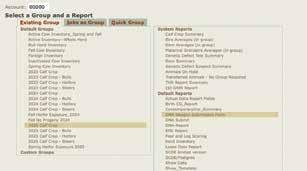

At the top left of the screen, use the drop-down bar (defaulted to Plain Text) and switch to MS Excel. Download the file to create an electronic version of the DNA order form.

The downloaded form will include all animals in the selected group, along with their registered sire and dam.
Apple Store Google Play
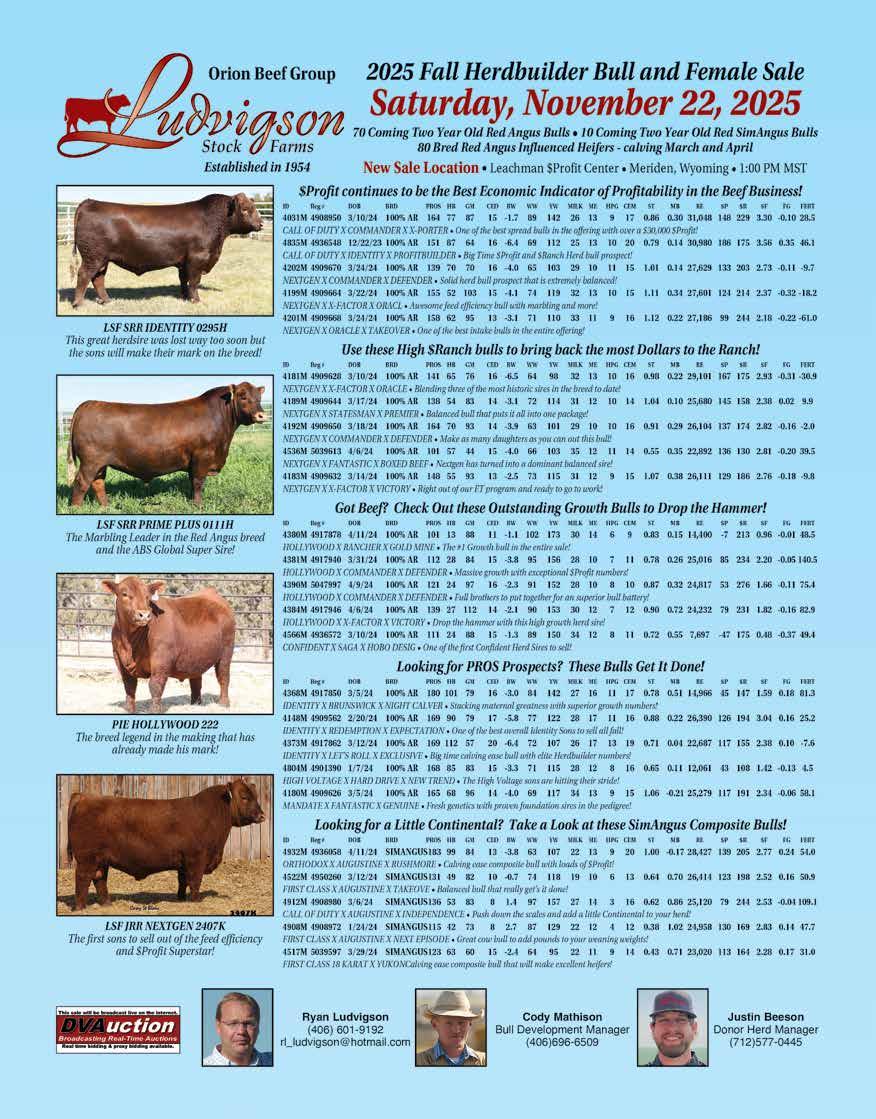
Simplifying Large Group DNA Submission
Members can then:
• Fill in the barcode of each sample under the DNA Sample ID column.
• Select the required tests for each animal.
• Complete the Sire2Reg# column if applicable, such as in a multi-sire situation.
Once the form is finalized and saved, email it to DNA@redangus.org to fulfill the order requirement. While electronic forms are optional for small submissions, they are required for orders of more than 35 animals. This helps the DNA team process large-volume orders more efficiently during the busy sale season.
“While electronic forms are optional for small submissions, they are required for orders of more than 35 animals. This helps the DNA team process large-volume orders more efficiently during the busy sale season.”
Creating a Quick Group
If your samples do not fit into a default group, you can create a Quick Group.
1. In REDSPro, select the Quick Group tab instead of Default Group.
2. Enter the registration numbers for the animals in the white box.
3. Generate the report and download the Excel version of the order form.
Once completed, send the completed forms, samples and payment to the office to finish the DNA submission process. For assistance, email DNA@ redangus.org. //




Sherill Seeger
3325 54th Ave



Brandon & Dixie Rusch
New Salem, ND 58563
Brandon: 701-226-5479


Dixie: 701-426-9443


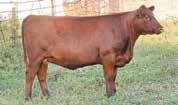
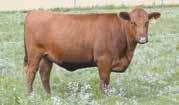



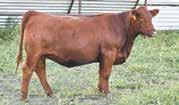


Sherill: 701-400-5077 seeger-ruschredangus.com





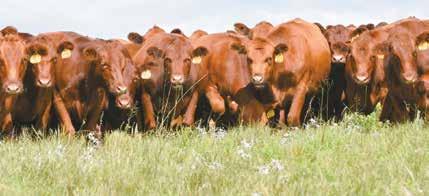




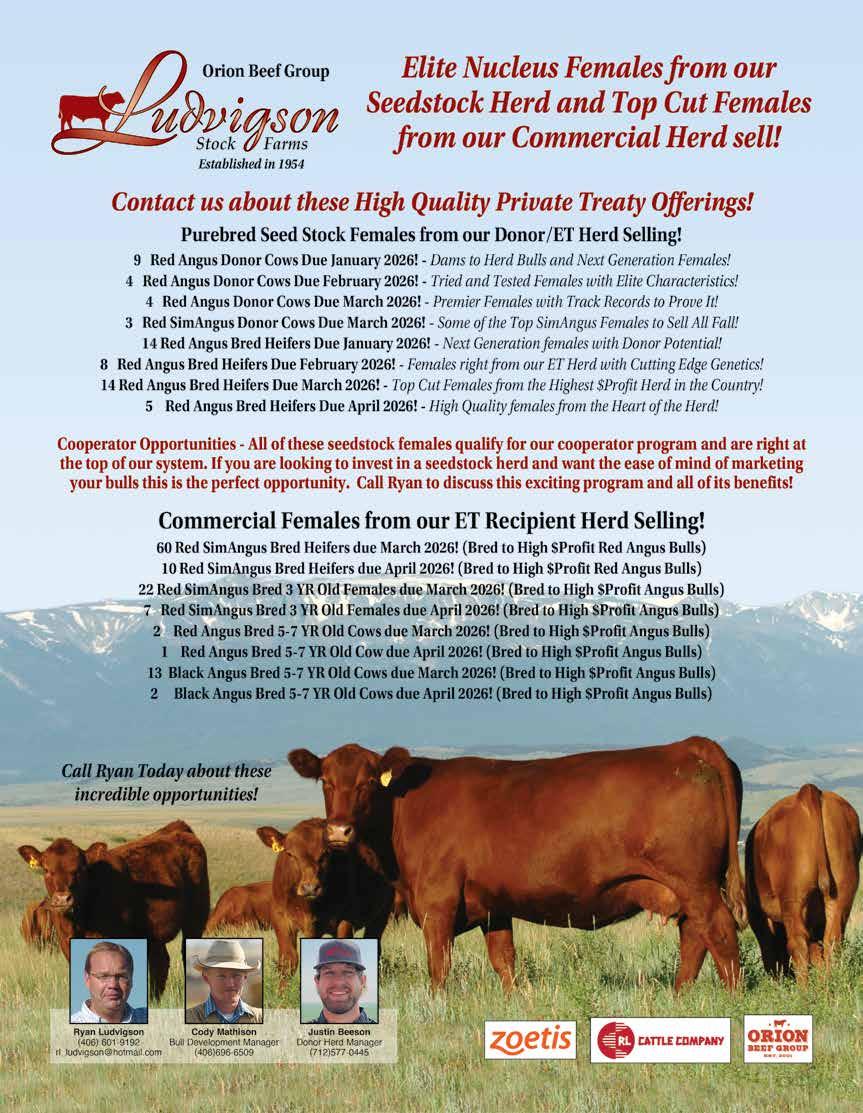
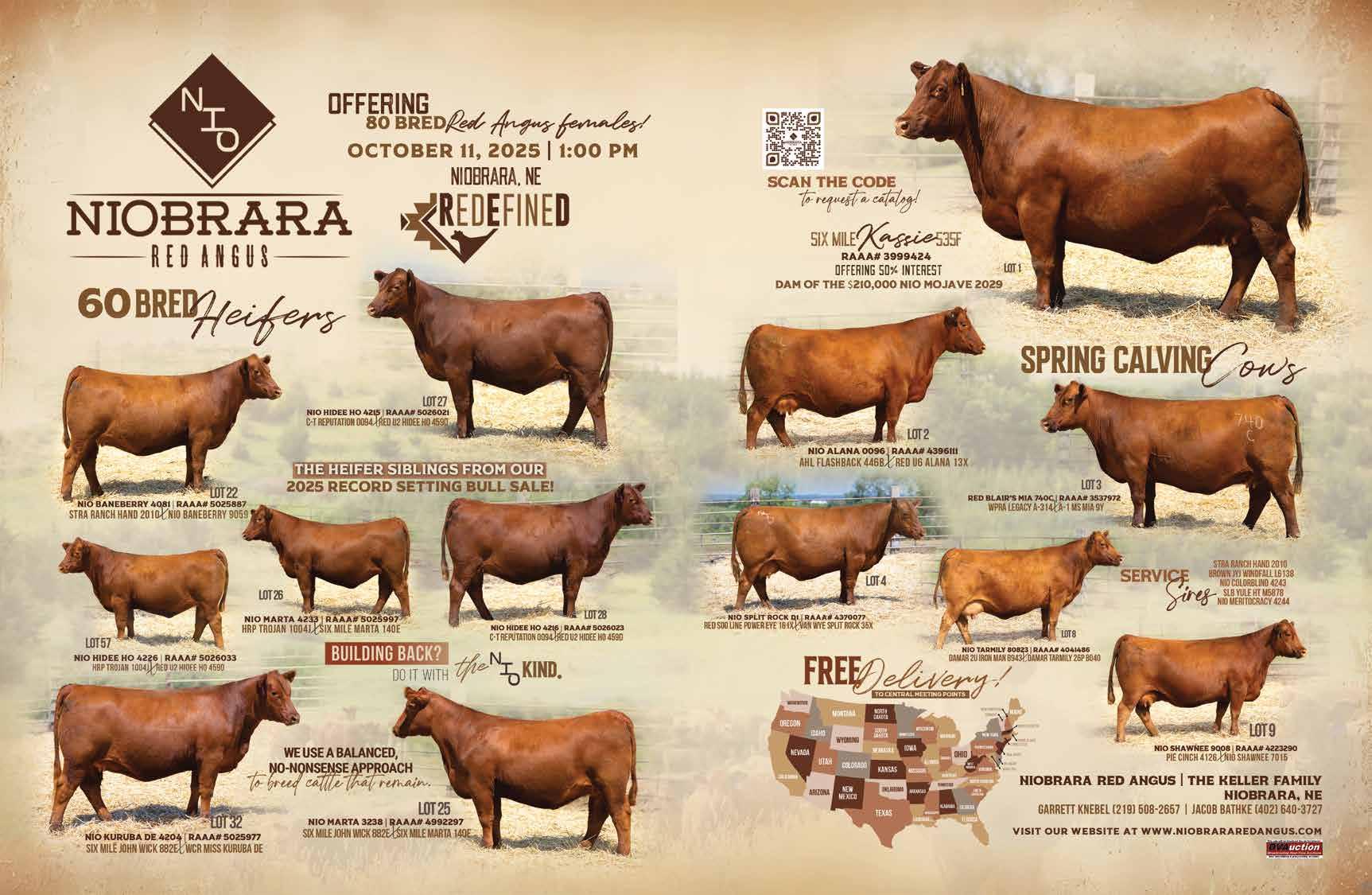

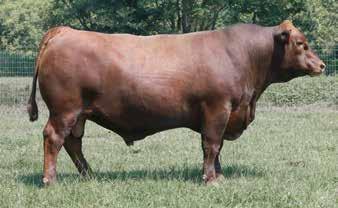
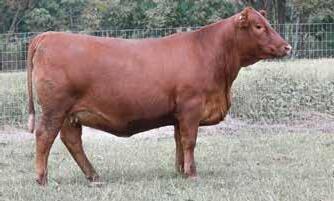
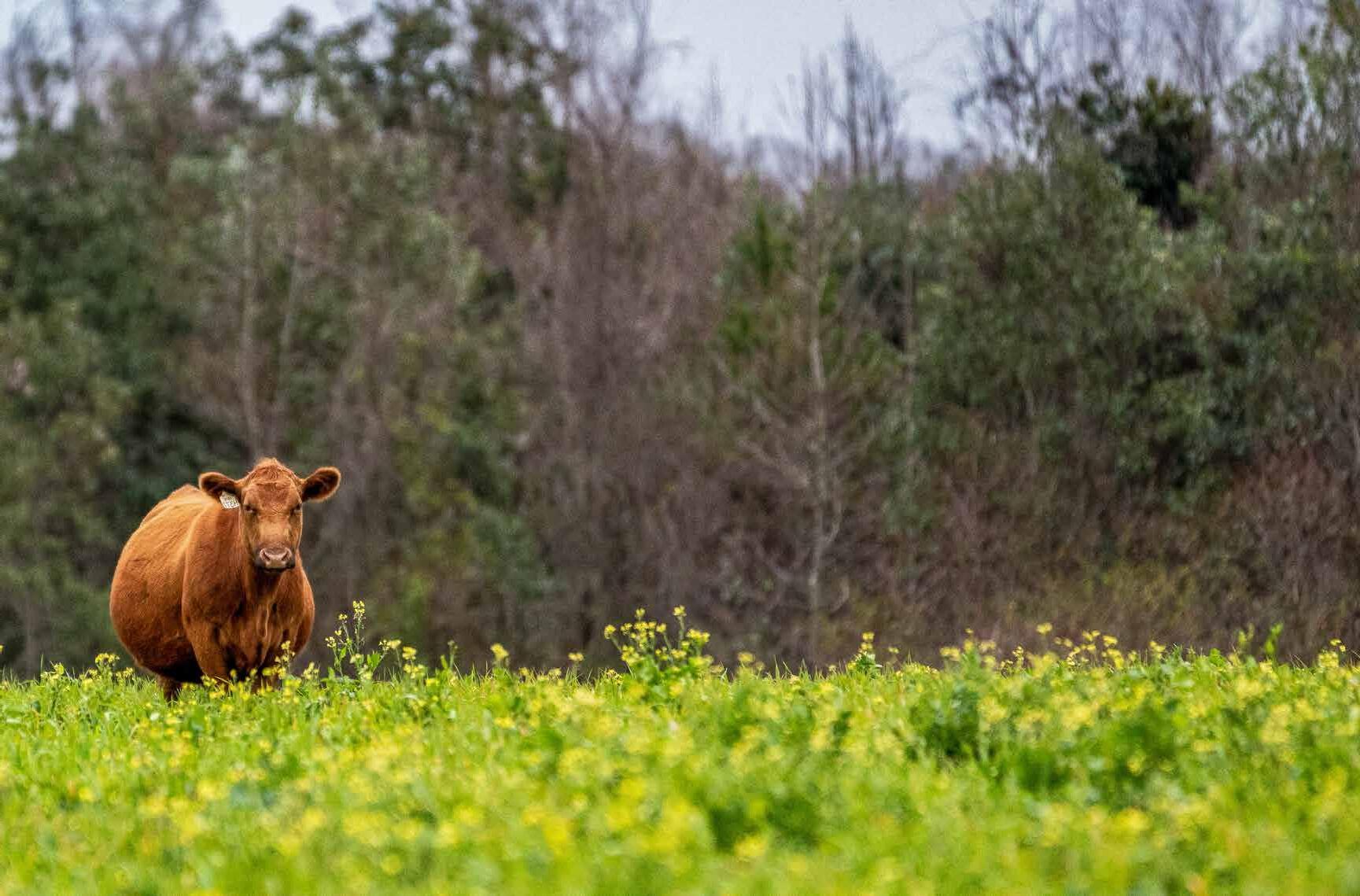
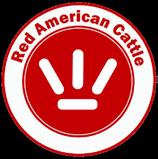
•
•
•
•
•
•



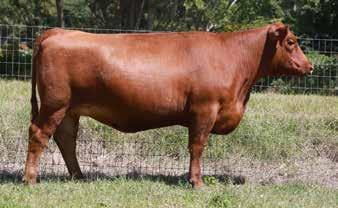
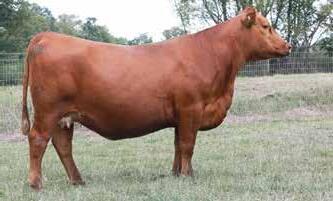

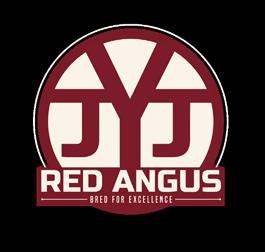
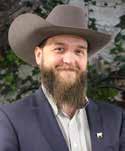
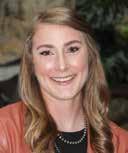
Contemporary Group Conundrums: Herd Size & Selection Intensity
by A.J. Knowles, Director of Breed Improvement
An often-repeated myth about EPDs, particularly those with low heritability like Heifer Pregnancy, is that they simply don’t work.
While progress can be slow, the math behind these traits is the same as those with higher heritability, such as Birth Weight.
If we want the EPDs to show that we are maximizing progress, we must maximize the amount of information available for the calculation of the EPDs. In a mathematical sense, genetic progress can be represented as:


where represents the change in genetic value of an animal for a trait, h2 represents the heritability of the trait, and S represents the selection differential for the trait, or the difference in genetic value between the chosen breeders and the rest of the herd.
In order to find S, another equation is needed, and can be represented as:



Where represents the average of the selected group and represents the average of the population. As we select fewer replacements from our herd or as herd size grows, the difference between the average of our selected animals and the average of the herd becomes larger.
In practice, the fewer animals you keep, the pickier you can be when selecting them. Combining this information with the first equation, we can see that the lower the heritability, the more selection pressure we must apply in order to make the same amount progress for a trait.
While we’re unlikely to change our herd size or retain fewer heifers just for the sake of making EPD progress, how we form our herds and their corresponding contemporary groups can have an effect on our ability to track the progress we are making.
By keeping animals in larger contemporary groups, their performance can be compared against more animals, ensuring we’re keeping the best genetics. The table below shows how selecting the top 10 females from contemporary groups
of varying sizes changes the selection differential, assuming the herd in question has the same variation and average as the Red Angus population. For simplicity in this example, I’ve used a Heifer Pregnancy EPD value of 10.04 for the population average.
While this does not change the underlying genetics of our selected replacements, our ability to track their progress is maximized when animals are chosen from larger contemporary groups.
This is representative of the idea that, as we select replacements from larger groups, we can be pickier, placing more pressure on the trait. Applying these selection differentials to our first equation, this becomes apparent.
The table below assumes a 12% heritability of the trait, which is the published heritability of Red Angus’ Heifer Pregnancy EPD.
As shown here, by keeping all 10 heifers out of a single, 10-animal contemporary group, the selection differential and genetic progress become zero, indicating we did not place any selection pressure on the herd and did not move our herd away from the average. Inversely, progress is maximized when we selected those 10 heifers from a group of 100.
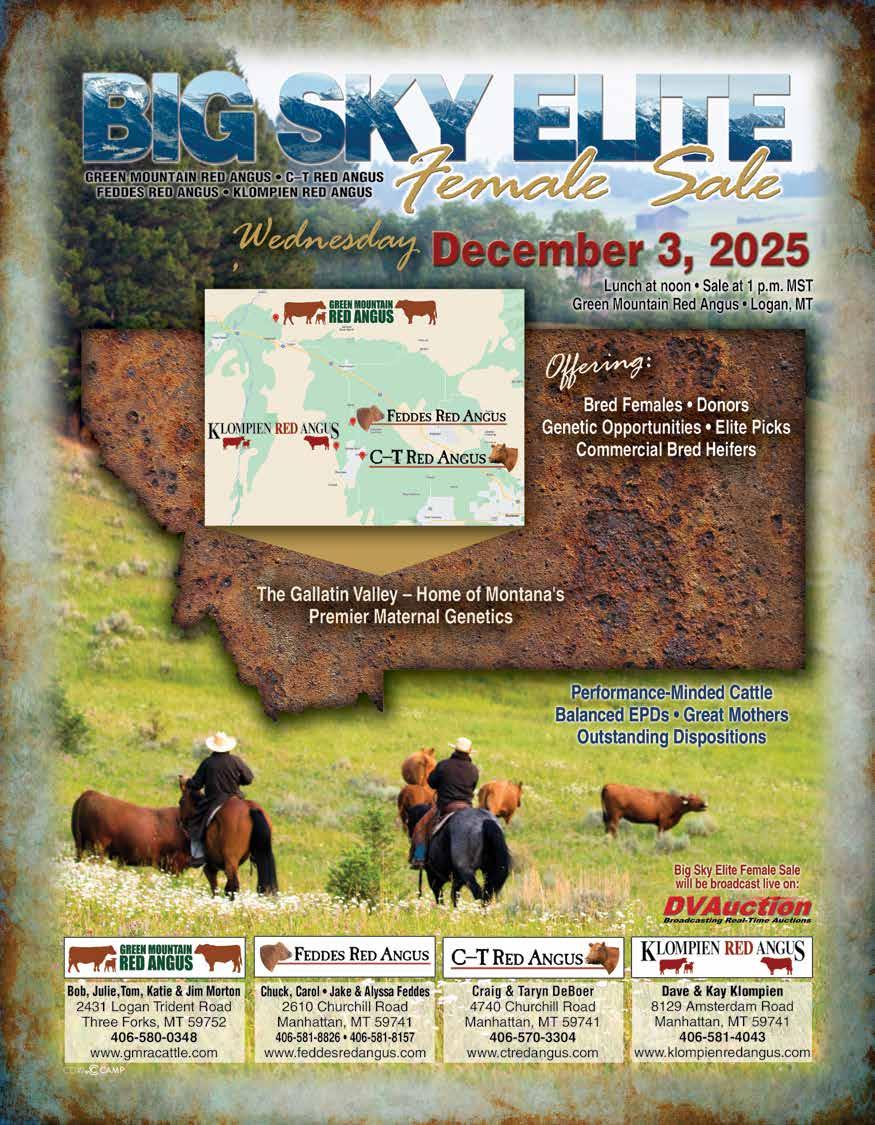

Red Angus Sale
November 8, 2025 • 1 p.m.
Albany, Wisconsin
Hosted at Shamrock Nook Red Angus
• Offering open and bred heifers, mature cows and donor prospects
• Females from proven cow families like Eleanor, Copper Queen, Abigrace, Tarmily, Lakota & Patricia Rose
• Live sale located at Shamrock Nook Red Angus and online service provided by DV Auction
• Lunch at noon; preview cattle all day Friday and Saturday morning
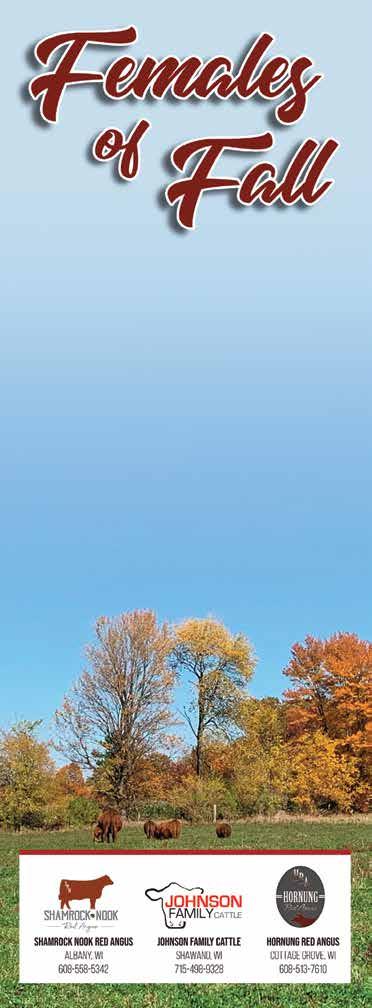
Contemporary Group Conundrums: Herd Size & Selection Intensity
These units are in the same unit as our trait of Heifer Pregnancy, indicating that the contemporary group of 100 animals has increased their herd’s productivity by 0.35 more pregnant heifers per generation.
In order to manage animals properly throughout their productive lives and ensure that contemporary groups remain large, it’s important to understand the components that make up the contemporary group.
For Heifer Pregnancy, the contemporary group is comprised of:
• Herd ID
• Breeder ID
• Year of Birth
• Birth Weight
• Contemporary Group
• Yearling Weight
• Contemporary Group
These factors indicate that in order to maximize group size for breeding, producers should manage animals together through the yearling stage.
By doing so, females remain linked in the evaluation and EPDs can better reflect the true progress made in the herd. //
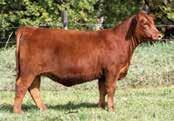
• Find us on Facebook! Contact us today for a catalog!
Females Like These Will Sell…

Fall Private Treaty Sale
Scheduled for October 2025
For inquiries, please contact Carl Lautenschlager at 509-595-8131
Annual Bull & Female Sale
Spring 2026 - date tbd
For more information, visit: lasoredangus com
Lautenschlager & Sons Red Angus
Carl Lautenschlager & Family
Endicott, WA 509-595-8131 lasoredangus com

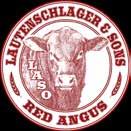
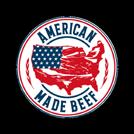
Introducing AMERICAN MADE BEEF
An Exclusive Opportunity for American Ranchers Using LASO Genetics
Find Details at lasoredangus com
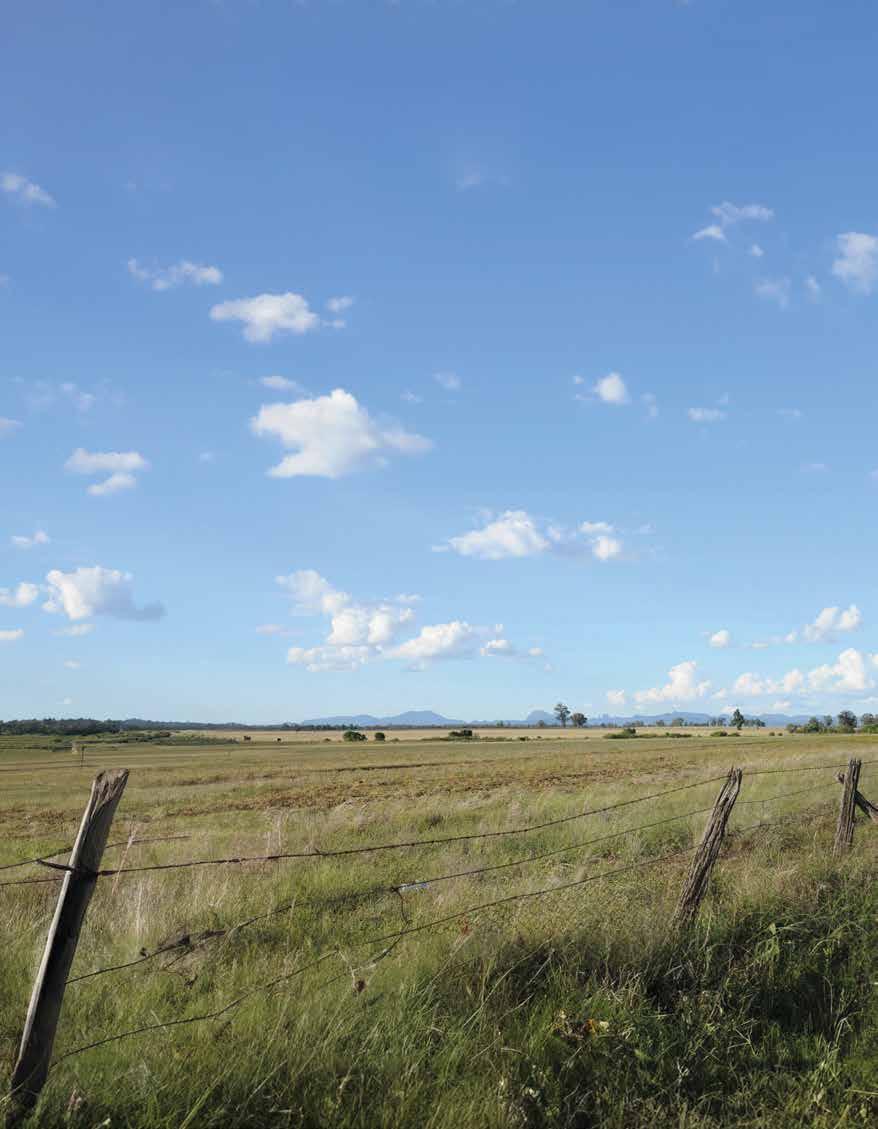
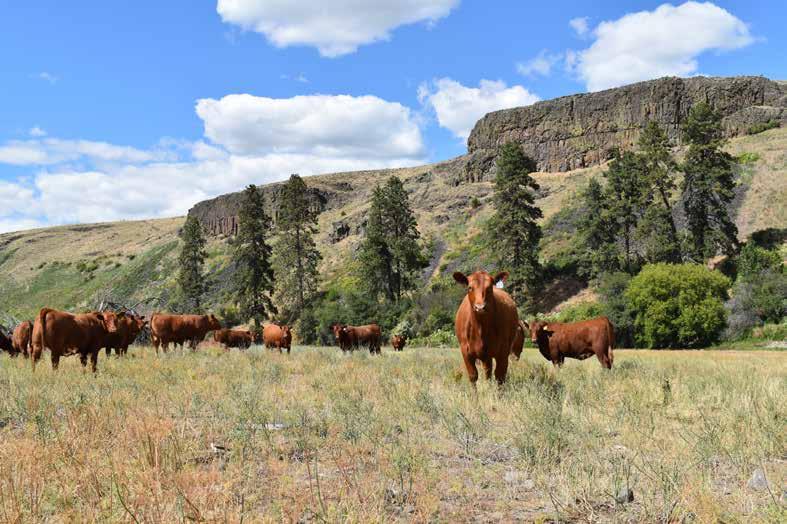


















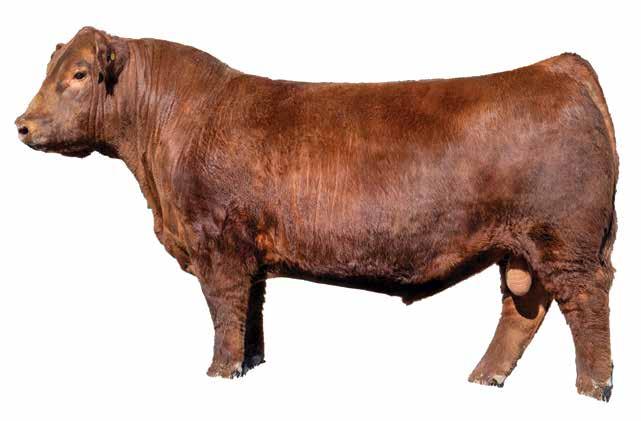
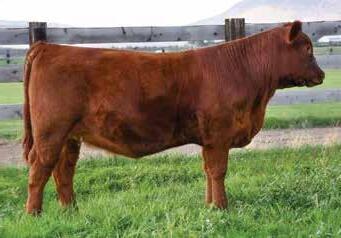





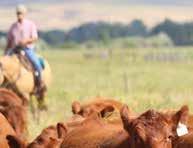




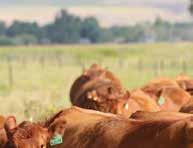



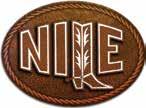



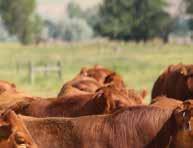
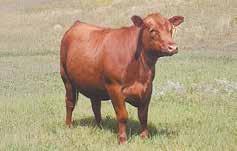



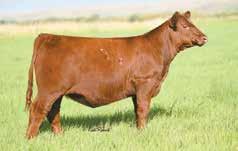




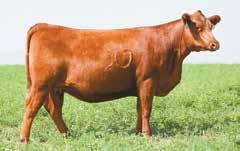


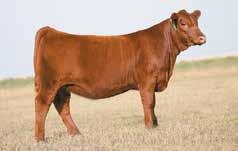






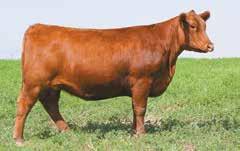




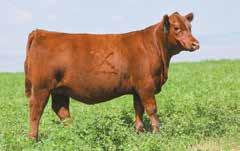




BCRR SEREOLA 407M (#5032889)
DKK AUBURN 4037 (#4914518)
L LAZY T KIMA 4018 (#5005155)
TJB LB HANNA 540 (#5075273)
DCCC HOBO 5051 (#5085433)
CK RED GIRL 5132 (#5078915)


Featuring these fancy girls consigned to the ...
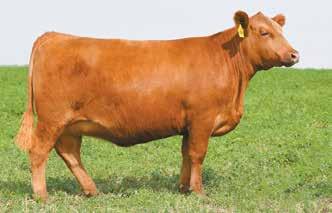


FEDDES BLOCKANA E47-436 Reg. #4961624
BIEBER JUMPSTART J137 x 5L ADVANTAGE 2170-165A

436 is a powerful Blockana heifer, yet extremely feminine. Her dam is a favorite with excellent feet, legs and udder while boasting an MPPA of 104 on 9 calves. She is due for a 1/16/25 calf sired by one of the most exciting bulls in the breed, Feddes Solid State, who is co-owned with Cross Diamond Cattle Co.
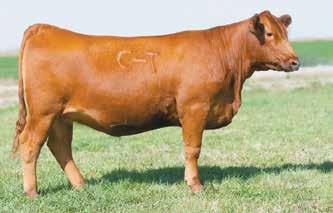
C-T CHRIS 4127 Reg. #4968596


HRP RAIDER 2020K x BIEBER SPARTICUS
An eye-catching Chris bred heifer, that makes you take note when you walk into the pasture. She comes with a very feminine phenotype, great foot structure and performance record. Sired by the new and upcoming HRP Raider 2020K, who looks to be a great female maker. She is due for a 1/25/26. Calf sired by PIE Cadillac 3289.

Big Sky Country Red Angus ... Where Performance Meets Maternal!

Chuck & Carol Feddes • 406-581-8826
Jake & Alyssa Feddes • 406-581-8157 2610 Churchill Rd • Manhattan, MT 59741 www.feddesredangus.com

Prestigious NILE Red Angus Sale
Friday, October 17, 2025 1 pm MDT
Montana Pavilion • Billings, Montana

Futurity and Sale Preview: Thursday, Oct. 16, 2025




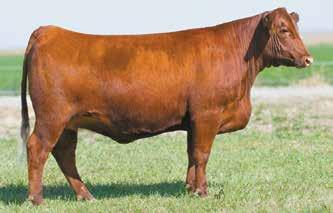


C-T MISS PAN 4020 Reg. #4968652
Collier Finished Product X C-T Reputation 0094


Here is an opportunity to own a beautiful Miss Pan bred heifer sired by the great female-making Finished Product bull. She shows a moderated frame with loads of volume and muscle. Beautiful cherry-red color and a nice foot and leg structure. This will be an exciting mating with PIE Cadillac 3289. Due for a 1/25/26 calf.

Big Sky Elite Female Sale Wednesday, Dec. 3, 2025
1 p.m. • GMRA Facility, Logan, MT



Annual Production Sale Monday, March 9, 2026

1 p.m. • At the Ranch, Manhattan, MT



& Taryn DeBoer 406-282-9029 4740 Churchill Rd • Manhattan, MT 59741 www.ctredangus.com




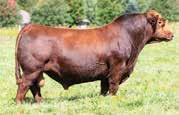



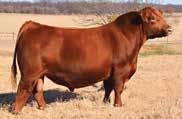




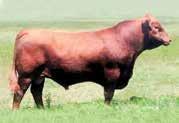




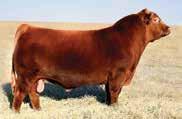




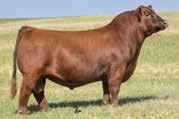


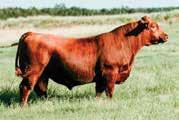



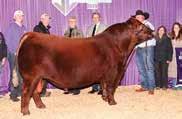


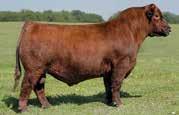

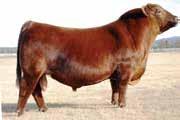


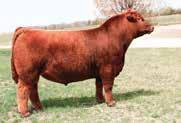



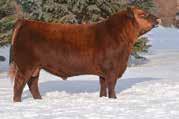



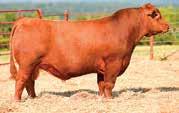





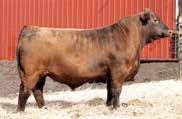




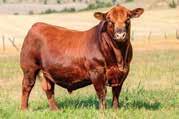
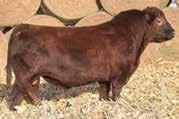





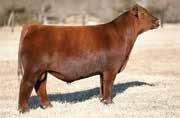


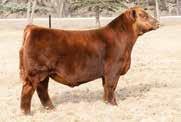



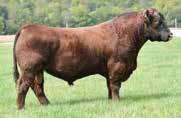


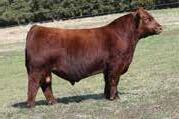


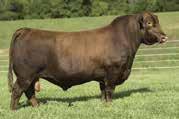

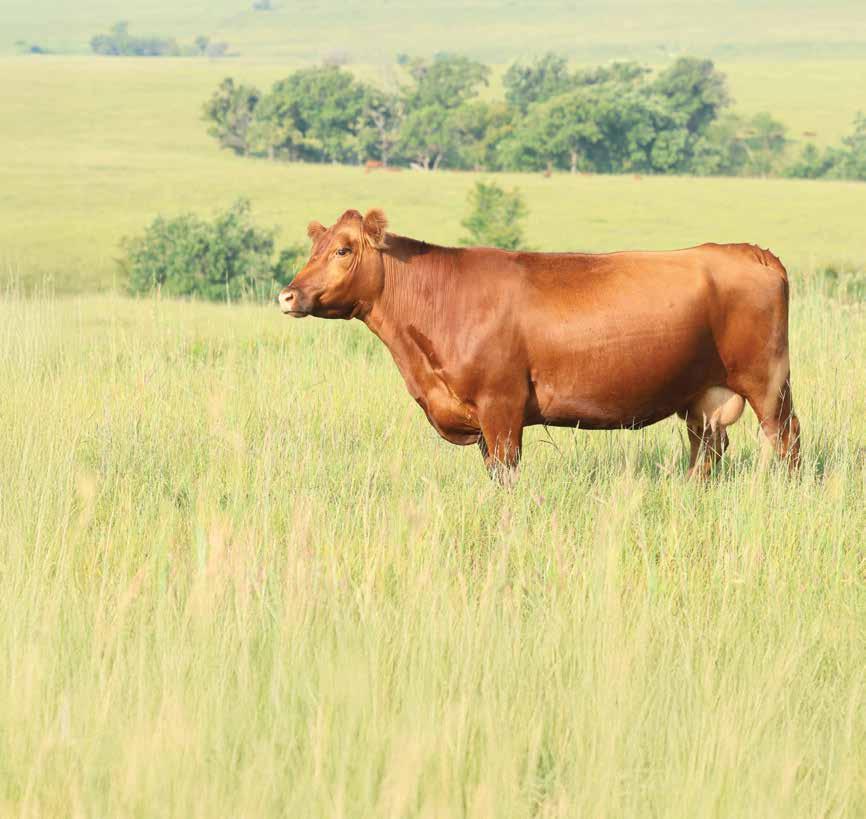
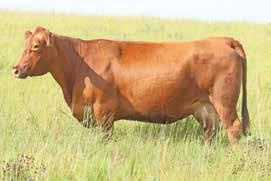

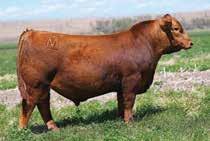

A Legacy of Ranching, a Future of Innovation
by Shelby Shank for the Red Angus Magazine
In the high desert of southern New Mexico sits a cattle ranch with a story stretching back more than a century.
Covering 45,000 acres of arid rangeland, the Bar W Ranch in Carrizozo has evolved over the years, blending tradition with innovation.
Today, it thrives under the partnership of ranch owner Stirling Spencer, and ranch foreman Kendal Wilson, who together have built a herd of Red Angus cattle uniquely suited to the desert landscape.
From Bookkeeper to Ranching Dynasty
The Bar W Ranch traces back to the 1880s when William C. McDonald arrived in Lincoln County as a bookkeeper for the El Captain Land and Cattle Co.
Ambitious and determined, McDonald gradually acquired the Block Ranch by 1908. A year later, he established his own operation under the “Bar W” brand, purchasing the Carrizozo property for $250,000.
McDonald became the first governor of New Mexico in 1912. As politics pulled him away, he hired bookkeeper Truman Spencer, who later married McDonald’s daughter, Frances, and assumed ownership of the ranch.
By 1948, Spencer sold the Block Ranch for $1 million but retained the Bar W Ranch and divided it among his children.
Decades later, his grandson Stirling Spencer purchased his parents’ one-third share of the ranch and spent the next 20 years acquiring the remaining shares.
Two Paths, One Ranch
Before returning to the ranch, Spencer built a successful career in chemical engineering, rising to chief engineer of an international company.
“I never thought I’d get back in the ranching business,” Spencer said. “I was a chemical engineer by education and trade, but I came back to help my dad. And because of the slim margins in the ranching business at the time, I said, ‘I either have to figure out how to buy this from you or go back to engineering where I can make a living to at least eat something.’”
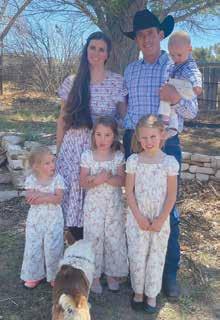
While Spencer was shaping the herd with genetics and management systems, a 12-year-old boy named Kendal Wilson arrived at the Bar W Ranch to work horses. Neither could have guessed the future that awaited them.
As a sixth-generation rancher, Wilson was eager to work. What started as an after-school job training horses and working cattle soon grew into much more.

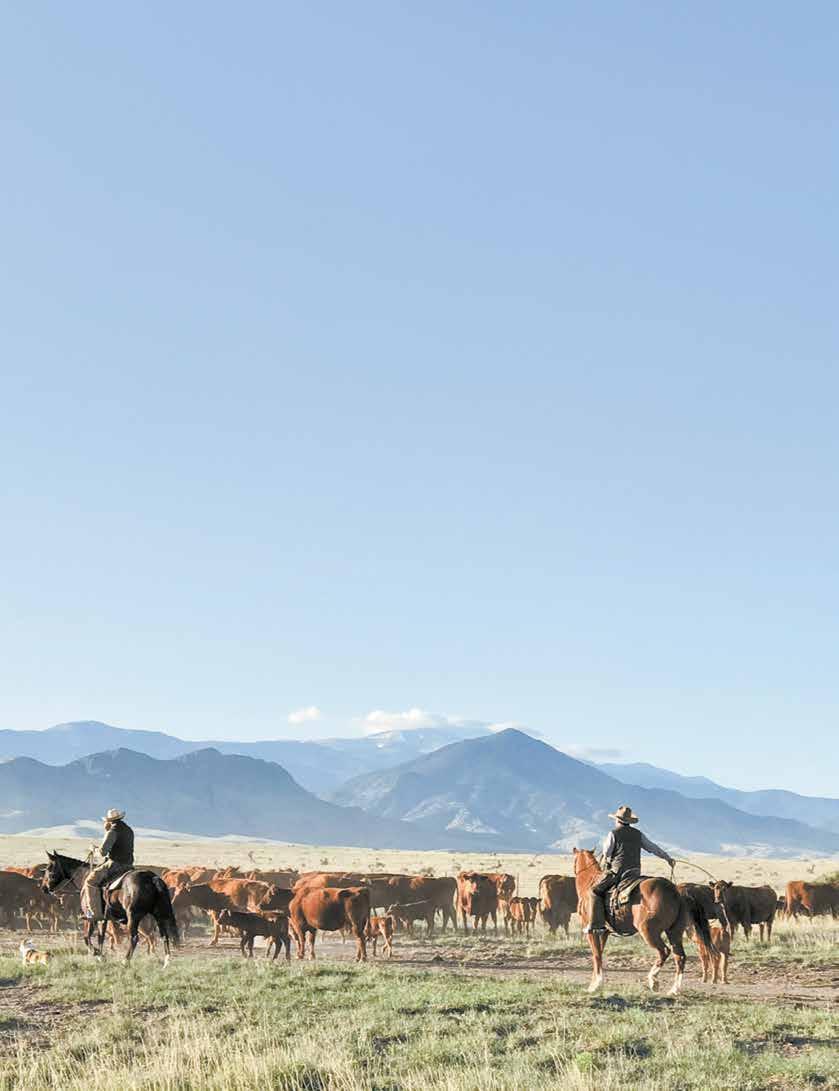
Kendal Wilson and his wife, Chelsea, with their four children.
The Bar W Ranch stretches over 45,000 acres of arid rangeland in New Mexico and runs 600-1,000 cows depending on rainfall.
McCann Red Angus
Lewiston, Idaho
Online Fall Female Sale
Thursday, November 13, 2025
Bidding opens at 8 am PST
Closes at 12 pm PST on 11/15/2025


Scan to request a catalog now!

6th Annual Bull Sale
Thursday, February 26th, 2026
A Legacy of Ranching, a Future of Innovation
“I worked with him all the way through college,” Wilson said. “In my spare time when I wasn’t in class, I would drive back to the ranch and work. That turned into a full-time job, which turned into me being fortunate enough to lease the ranch.”
Over the years, Wilson became more than a ranch hand. Today, he oversees the day-to-day operations of the ranch, from breeding and marketing decisions to managing cattle across the high desert, carrying both the legacy of his own family and the responsibility of the Bar W Ranch forward.
Spencer remains invested in the ranch, but the cattleman’s hat rests firmly on Wilson’s head.
“The kid is phenomenal,” Spencer said. “He’s a cowboy and can do anything cowboys do, but he’s also a cattleman.”
The Path to Red Angus Spencer’s engineering background ultimately led them to the Red Angus breed. After trying four or five other breeds, he found Red Angus offered the efficiency and resilience needed to thrive in the desert climate.
“You have to make sure cattle match the environment,” Spencer said. “You can’t put animals on a forage base or arid base that don’t fit. It’s just not going to work. There were

Stirling Spencer grew up on the Bar W Ranch but left to join the Army, then worked as a chemical engineer before returning home to take over the family business.
genetic standards the ranch needed to meet to satisfy what the consumer was looking for. And the consumer is looking for tenderness, taste and high-quality beef.”
Spencer’s focus wasn’t just on the breed itself, but on the genetics he could bring to the ranch. He traveled extensively across the country to select top-quality Red Angus bulls, paying well above market value to secure livestock with superior EPDs.
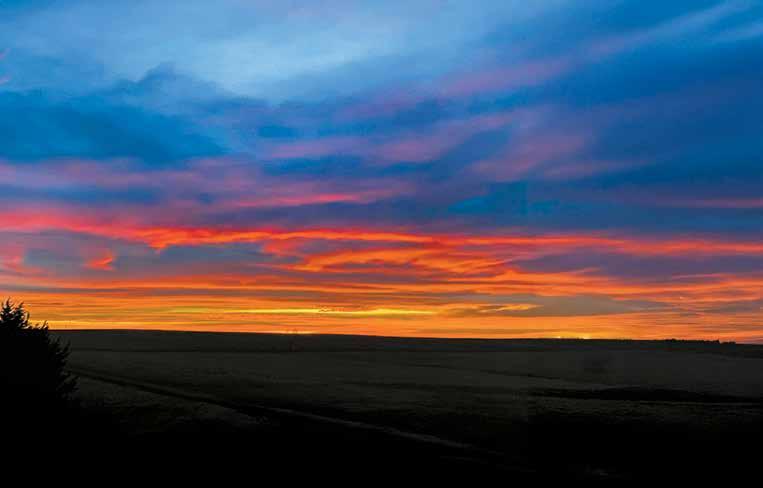

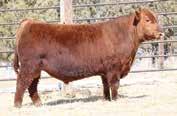


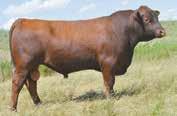






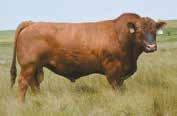



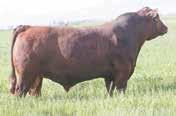



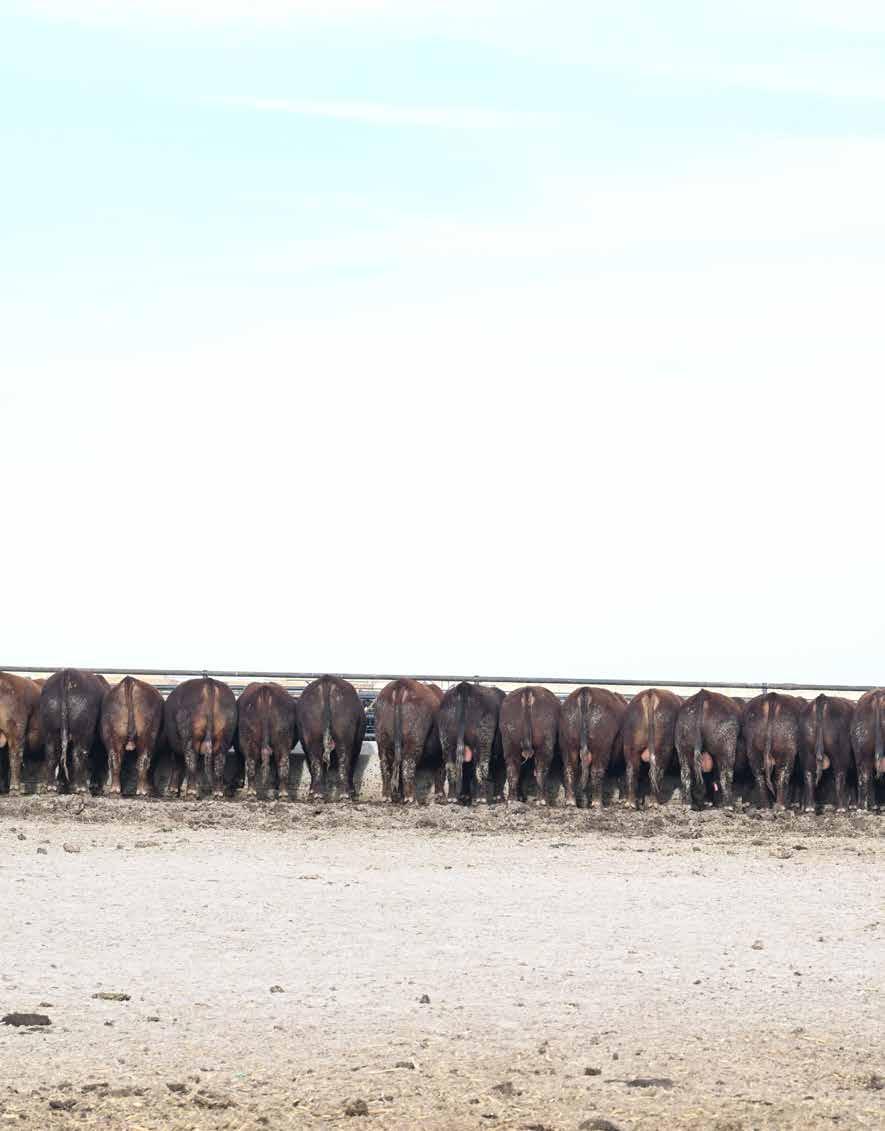

A Legacy of Ranching, a Future of Innovation
“I went from southern Missouri to northern Montana buying bulls, paying 50% more or 100% more than other people were paying for bulls,” Spencer said. “But I was looking for bulls with high-quality EPDs that were in the top 10% or better to start changing the herd.”
Wilson saw the impact firsthand.
“I’ve seen the breeding program become much more focused on quality over quantity,” Wilson said. “We’ve really seen the performance of the calves increase greatly, and understanding the location we’re in and the environmental conditions we run cattle in has been crucial.”
The shift to Red Angus genetics came in 2011 after prolonged drought and freezing conditions devastated pasture grasses. The ranch was forced to reduce herd numbers, but created an opportunity to rebuild exclusively with Red Angus cattle.
“Because we’re in the high-desert environment, we were trying to get cattle that were more heat tolerant and would perform better in the heat,” Wilson said.
Success Measured in Rain
Despite careful planning, the success of the Bar W Ranch often comes down to one uncontrollable factor – rain.
“We’re high desert. We range from some desert conditions to some low-mountain conditions. Drought’s what’s really affecting us,” Wilson said.
Rainfall has been scarce in recent years.
“Last year we got about 2 inches of rain for the year, and we typically need 9 to 12 inches to kind of be normal,” Wilson said. “We probably haven’t gotten over 5 inches in the last six years.”
Drought, more than high-input costs, remains their biggest challenge.
“Drought is by far the biggest challenge for us,” Wilson said. “We’ve overcome that in some ways by reducing the cow herd and taking some pressure off the land, but we can only go so far without really giving up the business side of the ranch.”
Compared to ranchers in other regions, their struggles are severe.
“Severe is not an overstatement at all,” Wilson said. “It’s eye-opening to visit with ranchers in Texas or other states and realize how different their idea of a drought is compared to what we face here.”
Through it all, the Red Angus herd has proven remarkably resilient.
“Red Angus do pretty dang good in a drought,” Spencer said. “I’m amazed at what they can do.”
A Year on the Ranch
At Bar W Ranch, the calendar isn’t marked by holidays but by cattle work.
“We calve at the first of March and calve out the herd entirely within 45 to 60 days,” Wilson said. “After that, we brand.”
During spring brandings, calves are gathered, branded, vaccinated and castrated, and genomic DNA tests are performed on the heifers.
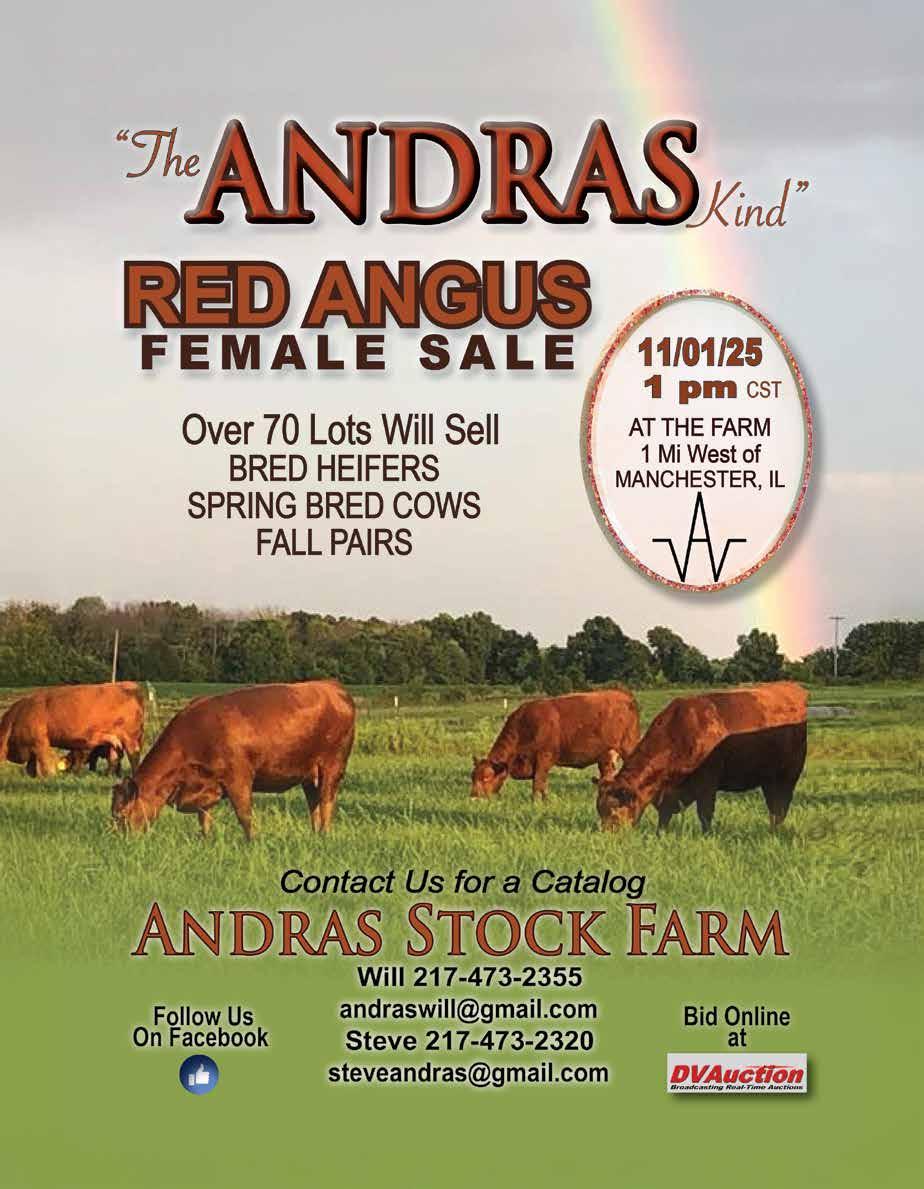
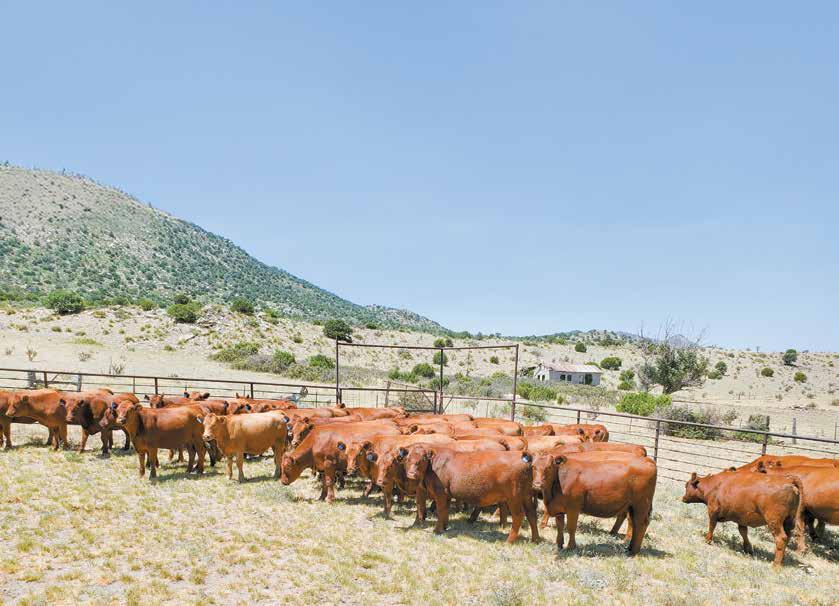
Bar W Ranch Red Angus heifers showcase efficiency, durability and adaptability, thriving in New Mexico’s high-desert rangeland.

A Legacy of Ranching, a Future of Innovation
“Our brandings run through the summer, and then in the fall, we’ll give our pre-weaning vaccinations,” Wilson said. “In October, we’ll give another set of weaning vaccinations and wean the calves so the cow herd is divided up into five different sub-herds within the ranch.”
At this point, Wilson will begin consolidating calves into contemporary groups of steers and heifers or into load lots.
“That’s when we’ll also select our replacement heifers as we run them through the chute,” Wilson said. “If they fit our data, we’ll go ahead and put an ear tag in. Then throughout the fall, we’ll monitor them to make sure they check the boxes for everything we desire in our replacement females.”
By November, steers are shipped out, marking the culmination of a year’s hard work.
“My proudest moment as a cattleman happens every year when we ship steers out,” Wilson said. “It’s watching all the hard work that we’ve put into these cattle for so long. We’ve had expectations for them since they hit the ground in March, and now I get to see something concrete.”
Red Angus Genetics
Wilson and Spencer use DNA testing, EPDs and carcass data to help them make informed breeding decisions.
“We track all aspects of the data, both carcass and performance,” Wilson said.
“We’re watching our trends, both positive and negative. That data, coupled with genomic numbers, helps us target the traits we need to improve.”
To complement their genetic approach, the Bar W Ranch participates in value-added programs, including RAAA’s Angus Access.
“We enroll our steers in Angus Access every year,” Wilson said. “It adds value and traceability, which is important to buyers and the market long-term.”
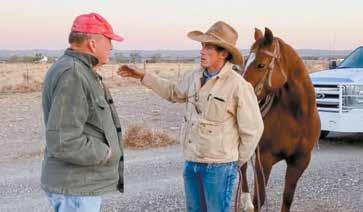
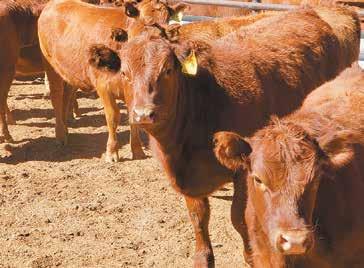
A Ranch Built to Last
For Wilson, the ranch isn’t just a workplace; it’s home for his wife and four children. It’s not unusual to find his three oldest riding alongside him in the pickup, helping feed cattle or fix fences.
“I want to teach my family the value of hard work, the value of the land and what it means to be a good steward,” Wilson said. “I’d like to teach them to have a heart for animals and be mindful of what we’ve been blessed to steward and care for.”
Ranching is about purpose for Wilson.
“Being a cattleman means we hold the well-being of the cattle above anything else,” Wilson said. “We’re always striving for the best. We want to be proud of the product we’re raising.”
For Spencer, the ranch represents freedom.
“When I grew up on this ranch, I dug post holes, built fences and broke horses; that was it. After college, I left, paid my own way, joined the Army and didn’t plan to come back. But working in the real world as a chemical engineer, I realized how restricted you are in most careers,” Spencer said.
“Ranching may not be the most lucrative path, but it gives me freedom – the freedom to make choices for myself, even if those choices come with responsibilities.”
Together, both men see their work as part of a larger mission.
“The legacy I’d like to leave is truly feeding the world,” Wilson said. “As ranchers, we’re feeding more and more people with fewer and fewer of us ranching and farming.” //

Bar W Ranch adds value through Angus Access, marketing Red Angus calves with traceability and data that drive buyer confidence.
Wilson has worked with Spencer since he was 12-years-old and now they work side by side to manage the Bar W Ranch, blending tradition with innovation.

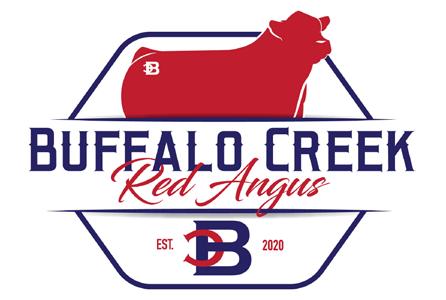
BCRED HOLLYWOOD 434
RAAA#: 4955406 HOLLYWOOD 222 x BONNE BEL 852


BCRED MAXMIUS 417
RAAA#: 4955372 MAXIMUS E294 x SEREOLA 203
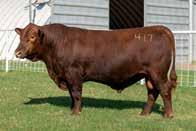
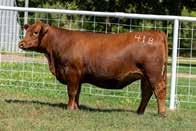
BCRED SEREOLA 203-418
RAAA#: 4955374 MAXIMUS E294 x SEREOLA 203
BCRED HOLLYWOOD 433
RAAA#: 4955404 HOLLYWOOD 222 x BONNE BEL 852
BCRED QUARTERBACK 405 RAAA#: 4955348 QUARTERBACK 789 x SEREOLA 213
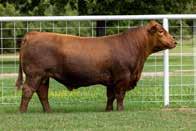
BCRED LAKOTA 13-468
RAAA#: 5020673 COMMANDER 0100 x LAKOTA 13
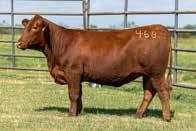
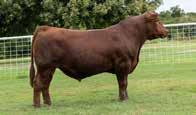
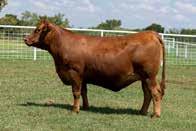
SLB ABIGRACE M287
RAAA#: 4906774 ENHANCE Y6648 J1263 x ABIGRACE K167
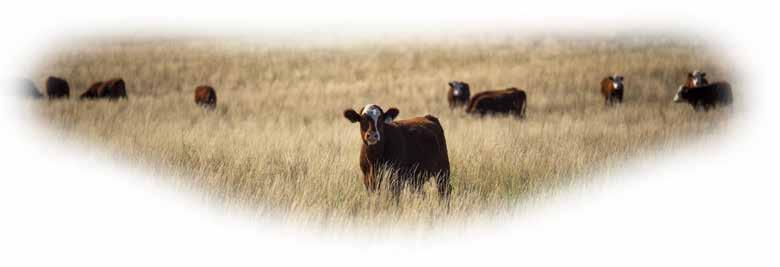

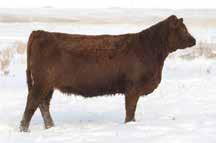

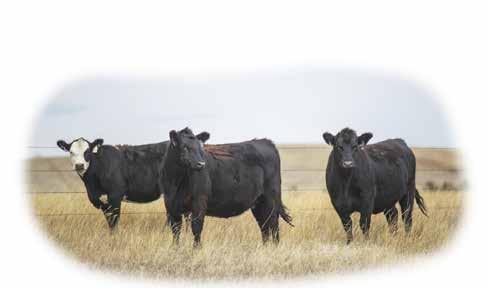
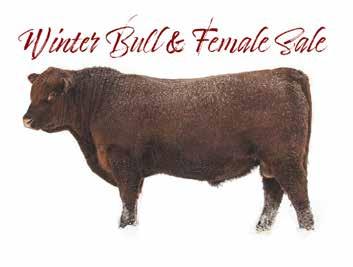
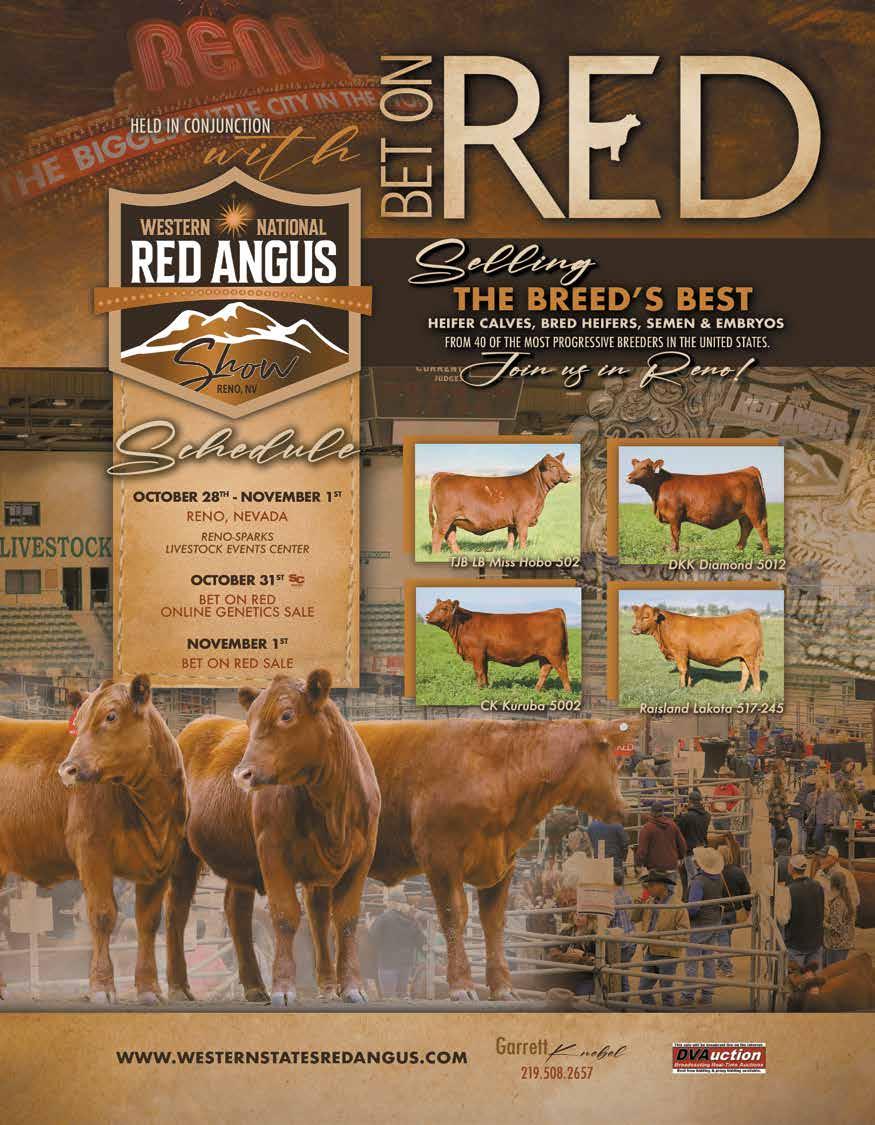
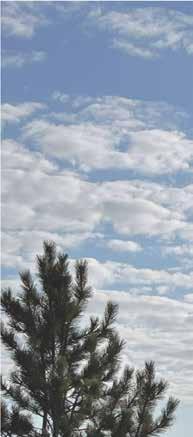
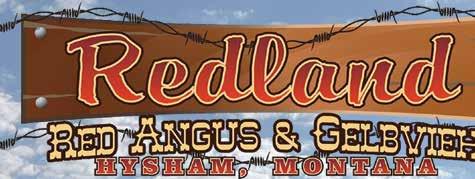

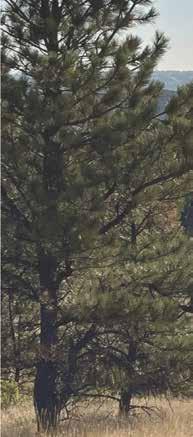






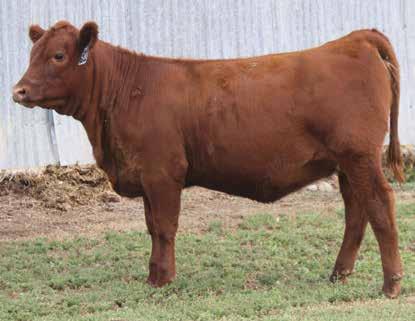




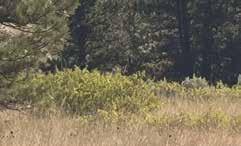


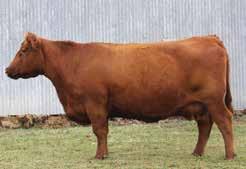


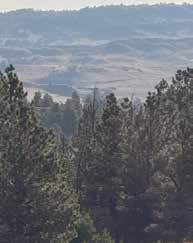

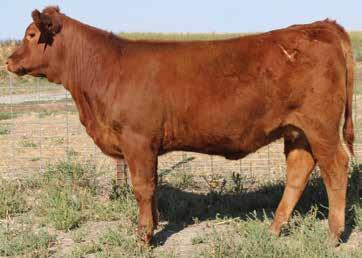



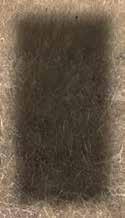





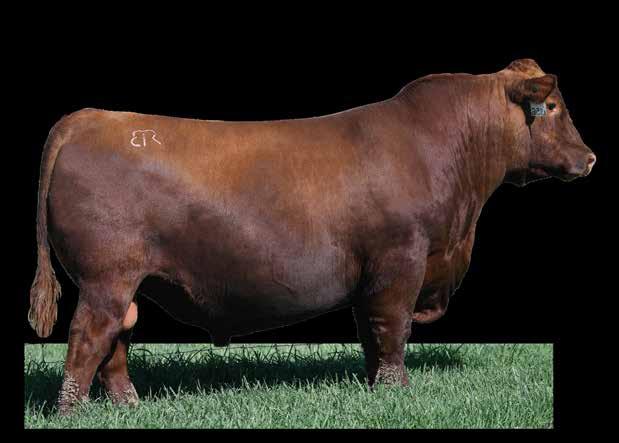
A genetic monster!
This head-turning sire is deep-bodied, thick muscled and sound to the ground! It’s the body type that works in many environments and production systems. Look to REVEREND for index power, a big spread from birth to yearling and outstanding carcass predictions.

Lead your herd to genetic progress with REVEREND. Scan the code or contact your GENEX representative. 888.333.1783 // catalog.genex.coop
Paid in Sweat, Secured by Planning
Succession
planning decides how ranch legacies endure
by Laura Handke for the Red Angus Magazine
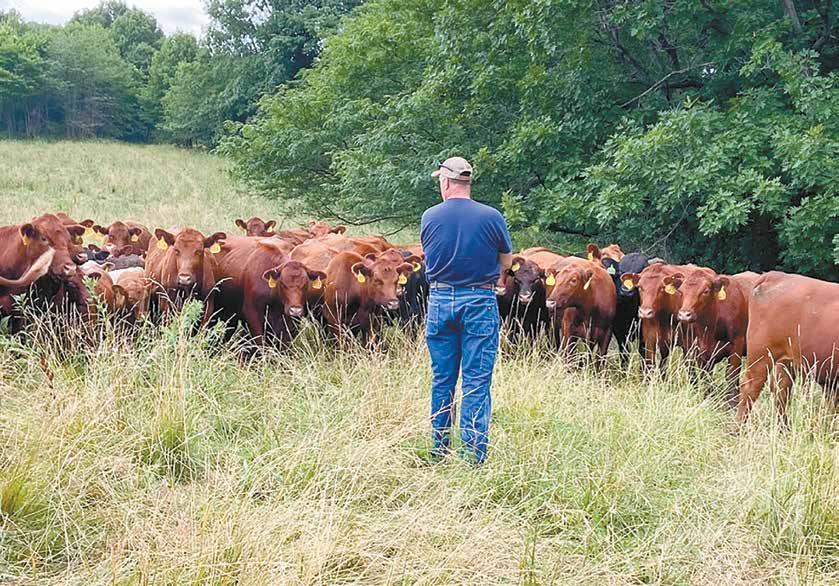
“If you die without a will, it’s the state legislature who assigns where your assets go.”
As the daughter of a rancher, Tiffany Dowell Lashmet says that one sentence always catches the ear of ranchers. As an ag law specialist for Texas A&M AgriLife Extension, she spends her days helping ranchers, just like her dad, navigate the complexities of agricultural law – including future plans for farms and ranches.
Like the advice she provides, she’s direct. “Every farmer or rancher is going to die at some point. And if we want any chance of an operation successfully continuing in the next generation, the best way is to have a plan.”
Without a plan, the odds are bleak. Today, only 12% of family-owned businesses survive the transition from first to second generation. Numbers drop even more in subsequent generations.
“Not having a plan sure doesn’t work,” she said. “The conversation can be difficult, but that’s where it starts. I always want to make clear that a succession plan isn’t something that can be accomplished in one conversation. It’s many conversations, sometimes over many years.”
To help the families she works with, Dowell Lashmet created a checklist that farm and ranch owners can work through at their own pace in the order that best fits.
Check the Boxes
Define the No. 1 Goal: “The first question any lawyer should ask is what a rancher’s No. 1 goal is,” she explained. “Every family operation will have a different goal, and that goal drives how a plan needs to look.”
Orland Oesch emphasizes succession planning, ensuring his family’s ranch legacy endures through thoughtful conversations, fairness and preparation for future generations.
While other items on the checklist can be completed in any order, establishing the main goal will help an attorney define the right tools to ensure wishes are upheld.
“If your No. 1 goal is to make sure your land never becomes a parking lot, there are tools we can use to make sure that never happens, but those tools are going to be different than the ones we might use if the goal is to make sure your kids don’t have to pay a ton of capital gains taxes when they sell,” Dowell Lashmet added.

Build Your Succession Team: Don’t go it alone. If there isn’t an attorney and CPA in the family Rolodex – ask around, talk with Extension and identify experienced ag professionals that can help with the succession process.
Dowell Lashmet made one point abundantly clear: Build a team to secure your land, your assets and your wishes.
“The estate plans that work the best are the ones where people work with a team of professionals,” she said. “You need a good estate planning lawyer, ideally, one who has a background in agriculture, and a good CPA. Those are two very different people with very different skills. Do not go online and spend $39.99 on a will and think you’ll be covered.”
“Those wills are designed for grandma who has a house and car in town. By virtue of being an ag operation, every rancher has a complex estate.”
Identify Key Roles and Responsibilities: Who’s involved in the day-to-day operations? From finances to cattle and land,
Tiffany Dowell Lashmet
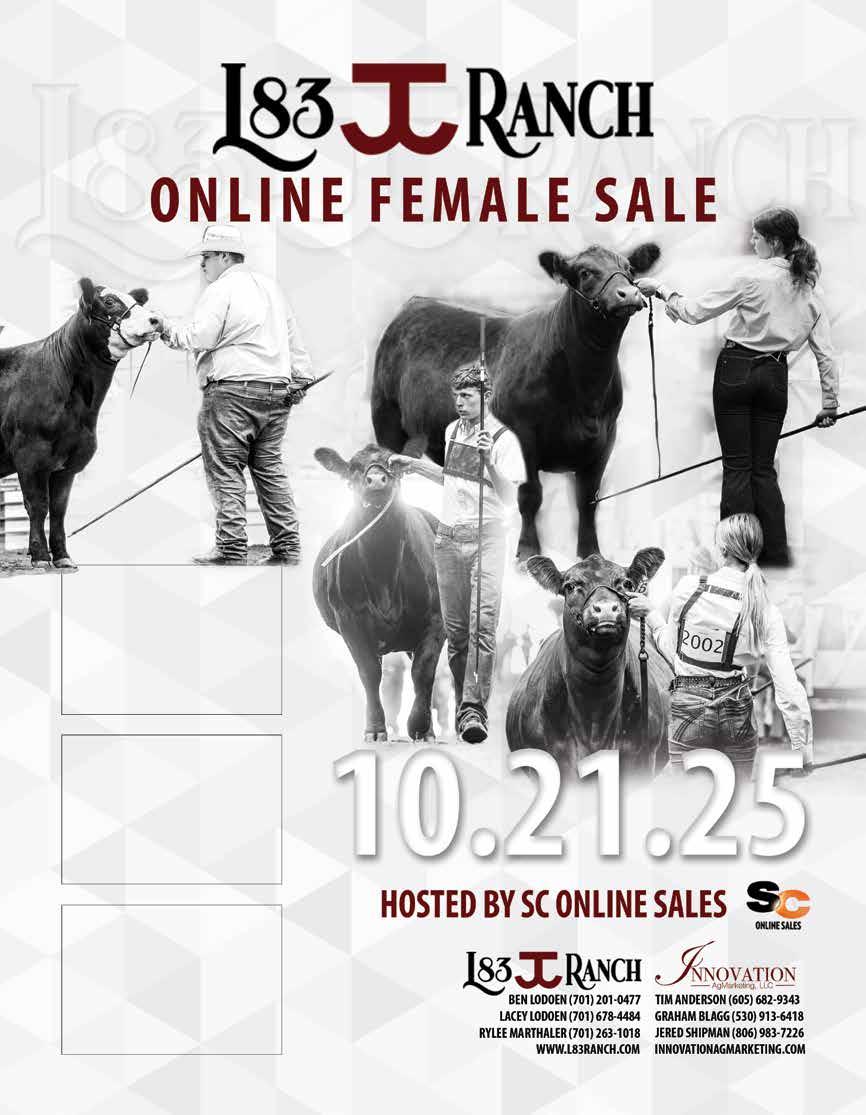
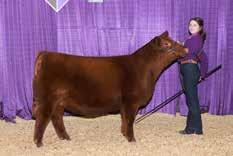
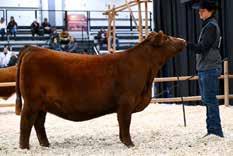
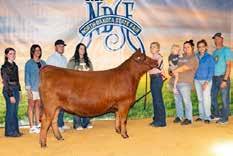
etc., knowing who does what reveals what knowledge needs to be passed down to do it well.
Involve Stakeholders: “The more you know,” becomes “the more they know” when succession planning. Keeping everyone who will be impacted by the succession informed creates clarity and reduces future conflict.
“In a perfect world, everyone would talk and be on the same page, but that may be too overwhelming at first. If so, just start with you and your spouse,” she encouraged.
What Do Your Heirs Want: Do any heirs want to take over the operation? Open and honest conversations with each child help define where, how and if they want to be involved long-term. Knowing what their goals are will help to better align a plan with their future.
What’s Your Carrying Capacity: Not cows, but revenue. If more than one child wants a full-time interest in operating the ranch, can it support multiple families? Be transparent to manage expectations for income opportunity versus input costs and overhead. Collect records like bank statements, property tax bills and loan agreements to give an accurate picture of the operation’s financial health.
If an off-farm job or an additional revenue stream is required in the future, that’s a real discussion that needs to be had.
Review Legal Structures Already in Place: Take stock of any trusts, LLCs, partnerships or wills already in place and identify whether they align with the No. 1 goal.
Dowell Lashmet concedes that the thought of succession planning can be daunting but encourages ranchers that succession planning does not mean retirement.
Succession planning is just a plan that ensures you can make and enforce decisions that align with the goal for your operation.
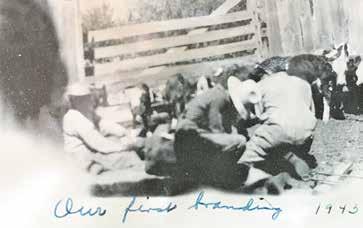
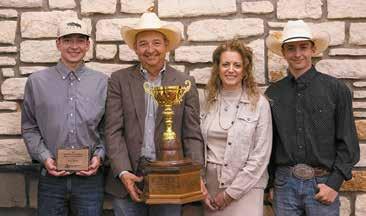
“A lot of farmers and ranchers don’t retire; they never quit, so if we wait until they plan to retire, for a lot of people, that day never comes,” she offered.
Make Succession a
Succession
In Deer Trail, Colorado, John and Karen Price, are the fifth generation to run cattle on the legacy Price Ranch established in 1898; ensuring the continuity of that legacy isn’t a task taken lightly. Putting a plan in place, generation after generation, isn’t a new concept. It’s a conversation John is already planning with their sons Conner and Dylan.
“My dad and I had a lot of conversations about how to divide things fairly. He had similar conversations with his dad in the early 90s,” John said.
“Dad didn’t want to just split it three ways, because I was the one who had been here putting in the work.”
John has two sisters who aren’t involved in the ranch. When the time came to divide ownership, the family used life insurance and other financial tools to ensure the sisters received a share without becoming silent partners.
“I love my sisters, but I didn’t want to be in business with them,” he said candidly, “I didn’t need a silent partner.”
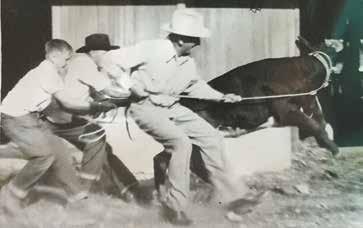
Conner, John, Karen and Dylan Price carry forward a sixth-generation ranching legacy, embracing succession planning to secure their future. Historic images
NFFR RED BARON 3125L
RAAA: 5106507
Sire: BYU RED BARON 1333 ET Dam: C-BAR TINA 7111E
A dark cherry red hided stud that is loaded with mass, shape, and fleshing ease. His dam is supported by a cow family that has stood the test of time at C-Bar Ranch!
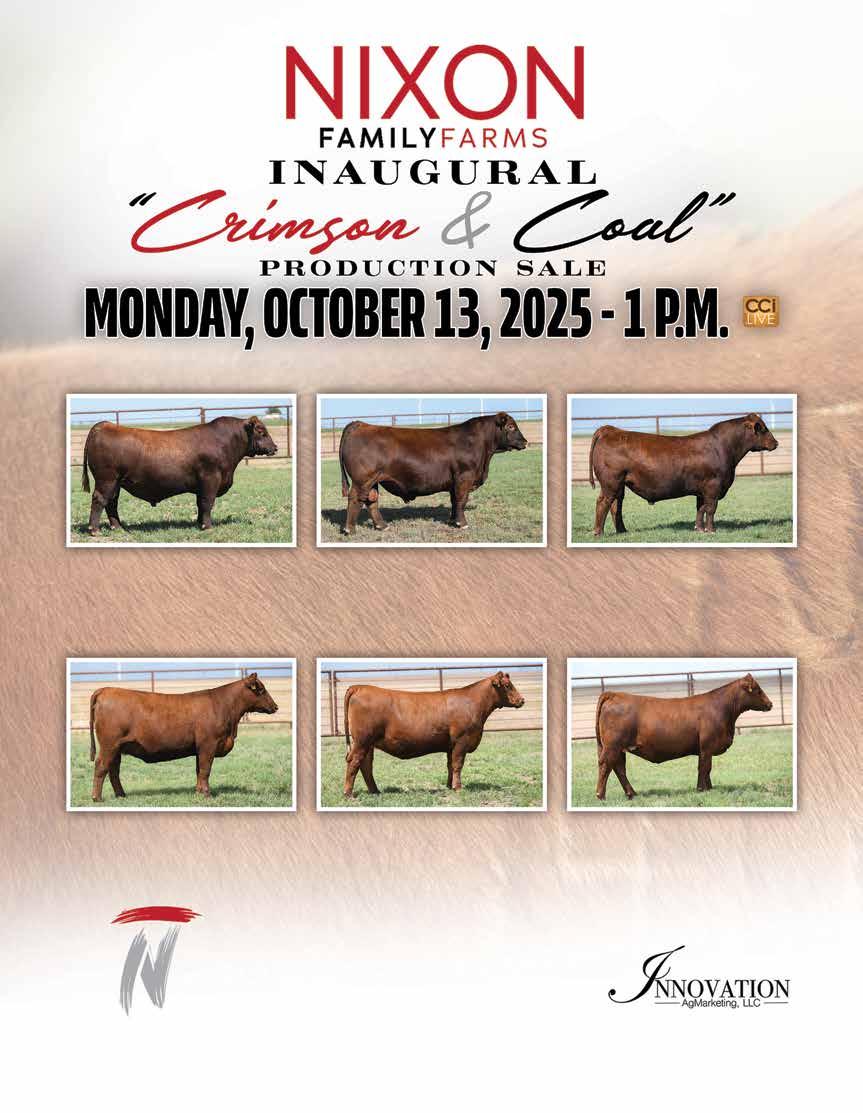
NFFR CAROLINE ERICA 449M
RAAA: 5107163
Sire: BYU RED BARON 1333 ET Dam: MF STERLING 2224
449M offers a premium blend of eye appeal, stoutness, and power! Bred to PIE Cadillac 3289 to calve in February
NFFR RED BARON 459M
RAAA: 5106511
Sire: BYU RED BARON 1333 ET Dam: RED WILDMAN CHIEFTESS 633D
A performance-oriented outcross herd sire prospect that is backed by our 633D donor, a female that originated in the famed Wildman Livestock program in Alberta!
NFF TRUST IN ME 445M
RAAA: 5106523
Sire: MF TRUST IN ME 0636 Dam: NFFR HAZEL 042H 445M offers an extreme look of quality and style. He is a top shelf calving ease prospect that offers a moderate birthweight with explosive growth at weaning!
NFFR COUNTESS 3136L
RAAA: 5107179
Sire: BYU RED BARON 1333 ET Dam: RUST MS COUNTESS 938G 3136L is supported by the influence of the legendary Red Rainbow Countess 32X matron! Bred to 1ACC Red Matador 2412 to calve in March
NFFR MISS BARON 3135L
RAAA: 5107175
Sire: BYU RED BARON 1333 ET Dam: NFFR 047E
Adarkredhidedfemalethatisextrastoutfeatured,boldbodied,andproductiveinherkind! Bred to PIE Cadillac 3289 to calve in February
In Mooresville, Missouri, Orland and Rhonda Oesch are structuring the third generation of Silverleaf Land and Cattle in much the same way. Not having the conversations about succession or establishing a plan prior to his father’s passing, Orland knows firsthand how taxing the aftermath of a drawn-out probate process can be.
“It led to a lot of sleepless nights,” Orland shared. “Especially since I had already invested money and sweat equity into the farm. That’s not what I want for our children.”
Much like the Price family, the Oeschs are looking to life insurance as an opportunity to offset the land Owen will take over with cash payouts for the girls, Meredith and Lyla.
“We know another family that did this, and it seemed to work well,” Rhonda said.
Both the Price and Oesch families are young, with children currently in or just out of high school and college. Statistics say that time and succession success are on their side.
“In a perfect world, succession conversations start today,” Dowell Lashmet said. “We don’t know what’s going to happen; we all think there’s plenty of time, but it only takes one accident. Get a plan in place.”
The Value of Sweat Equity
One of the most difficult parts of farm and ranch estate planning is determining how to value sweat equity. There’s no silver bullet or right answer. It’s something every operation must decide.
“There’s a song that says ‘sometimes what’s right’s not equal; sometimes what’s equal’s not fair’. That sums up sweat equity,” Dowell Lashmet said. “Is your goal to reward the kid that stayed home and poured their life into the operation or is it to make everything even across the board? That’s a very personal decision.”
For the Oesch family, the hard conversations are already underway. Both Rhonda and Orland recognize the subjectivity of fairness and the rarity of achieving it amongst multiple children. For Orland, sweat equity is the most important factor in determining who will have an interest in the operation.
“You have to factor in the sentimental value, as well. What’s important to one sibling may not be monetary things,” Rhonda shared, adding that she and Orland are still navigating “fair.”
“We’re talking to neighbors and friends about how they achieved fairness in dividing assets, and sometimes we find out what not to do right along with what has worked. We’re soaking up the information, either way.”
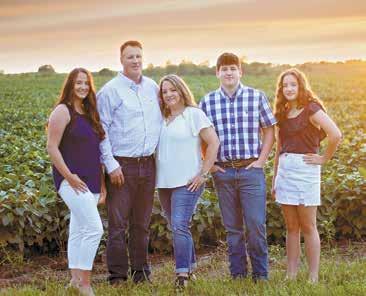
For Price and his father before him, Oesch’s sentiment is echoed. The value of the land is the greatest asset held, not just in terms of monetary value, but in the pride every rancher has in being a steward of something greater than themselves. That said, Price realizes that with the ranch succession comes a hefty responsibility, sometimes with little reward.
“My dad was proud to have the sixth generation here. It’s something I’m proud to pass on, too,” he said. “But we’ve never pressured anyone into coming back just because of that. If my kids are happy doing this, that means everything, but they’ve got to want it.”
He added, “It’s the kind of life you really have to want. On one hand, I got this big value of land that came to me. On the other hand, besides making my living, I’ll never see any of that monetary value. I’m not going to sell the land. I’ll enjoy it every day, but I’m never going to have a big chunk of money to go do something with, which wasn’t the case for my sisters.”
For both families, succession isn’t about wealth, it’s about continuity. At its core, succession planning is about the people you love. It’s about building a roadmap that reflects your values, your legacy and the future you want for your family.
For the Oeschs and the Prices, the conversation is still evolving and far from over, but it’s started. They’re working to preserve more than just land; they’re protecting the legacy of hard work, resilience and family that make agriculture what it is.
And for Dowell Lashmet, that’s success. It’s what it’s all about. “Succession planning doesn’t mean you’re stepping away tomorrow, it just means you care enough to plan for what happens when you do.” //
Orland and Rhonda Oesch with children Owen, Meredith and Lyla focus on succession planning to balance equity and family legacy.


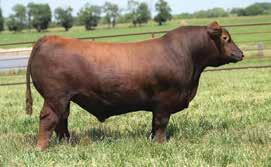
Sire:
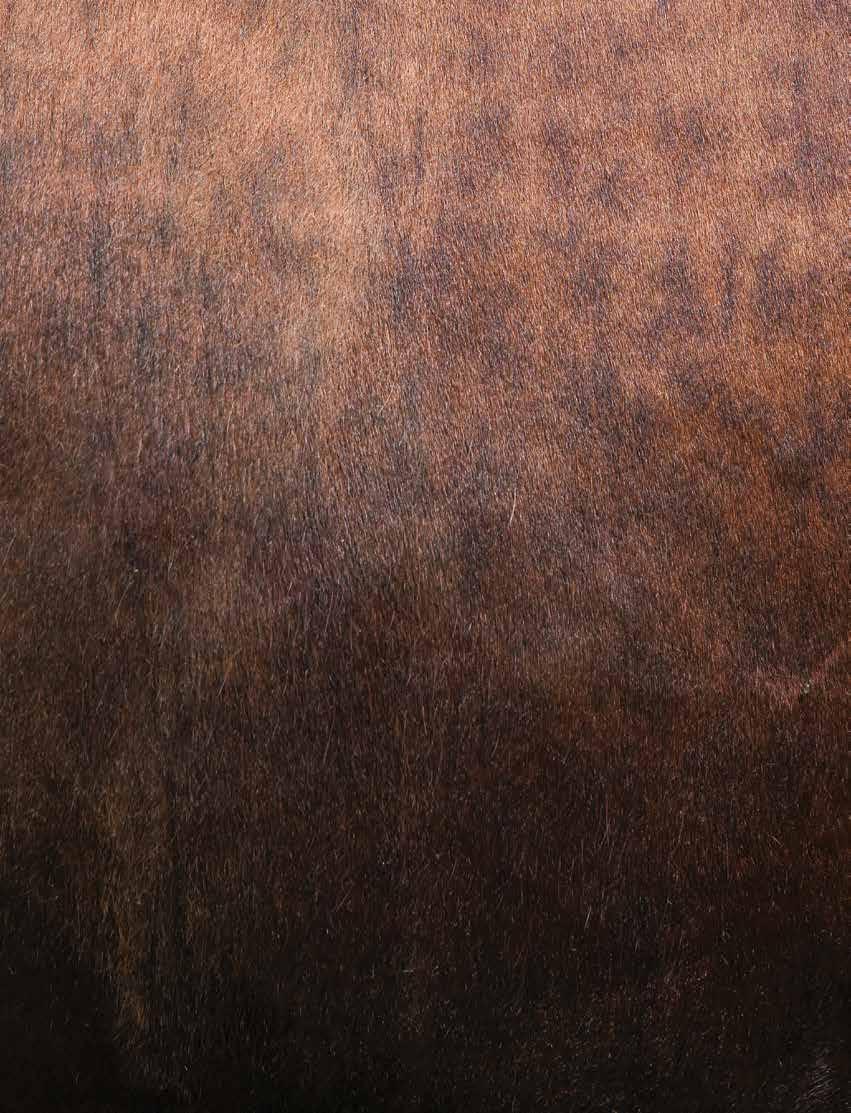
RAAA: 4952948

& ADG!
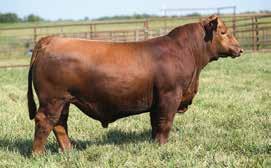
RAAA: 5078387
LACY WAR PAINT 086M
Sire: DUFF RED WARRIOR 21104 | DS: CCF GOLD BAR 0251

One of the stoutest o erings of yearling bulls we have ever sold! LACY War Paint 086M is backed by the famous LACY Lakota 8105, the high-income producing donor at Lacy’s Red Angus!
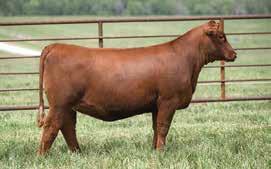
RAAA: 5078351
LACY LAKOTA 174F 083M
Sire: DUFF RED WARRIOR 21104 | DS: PIE ONE OF A KIND 352
083M is a standout daughter of DUFF Red Warrior 21104 that is supported by the everlasting in uence of PIE One Of A Kind 352. An eye appealing female with big spread genetics!
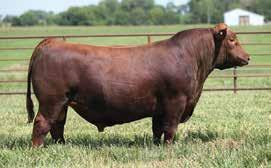
MCL BENELLI 4001
RAAA: 4981007
Sire: DUFF RED WARRIOR 21104 | DS: BROWN JYJ REDEMPTION Y1334 MCL Benelli 4001 is a powerful son of DUFF Red Warrior 21104 that is loaded with power, substance, and skeletal quality. Backed by a cornerstone matron of the program!
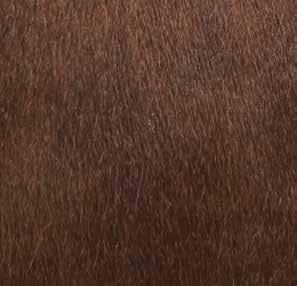
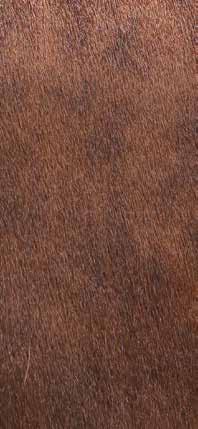
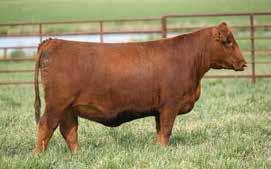
RAAA: 4981059
MCL MARTHA 449 4040
Sire: BIEBER CL ENERGIZE F121 | DS: LACY GOLD BAR 1120
A hand selected group of Spring Bred Heifers will sell! 4040 is a daughter of Bieber CL Energizer F121 that o ers a premium blend of growth, carcass merit, and maternal strength!




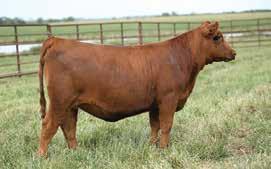
RAAA: 5071979
MCL LAKOTA 005G 4522
Sire: SC HARD DRIVE H508 | DS: HXC DECLARATION 5504C
4522 is a high-capacity daughter of SC Hard Drive H508 that is from the famed “Lakota” cow family. A favorite of everyone that has seen this year’s o ering!






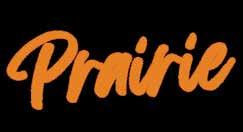


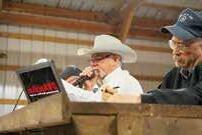


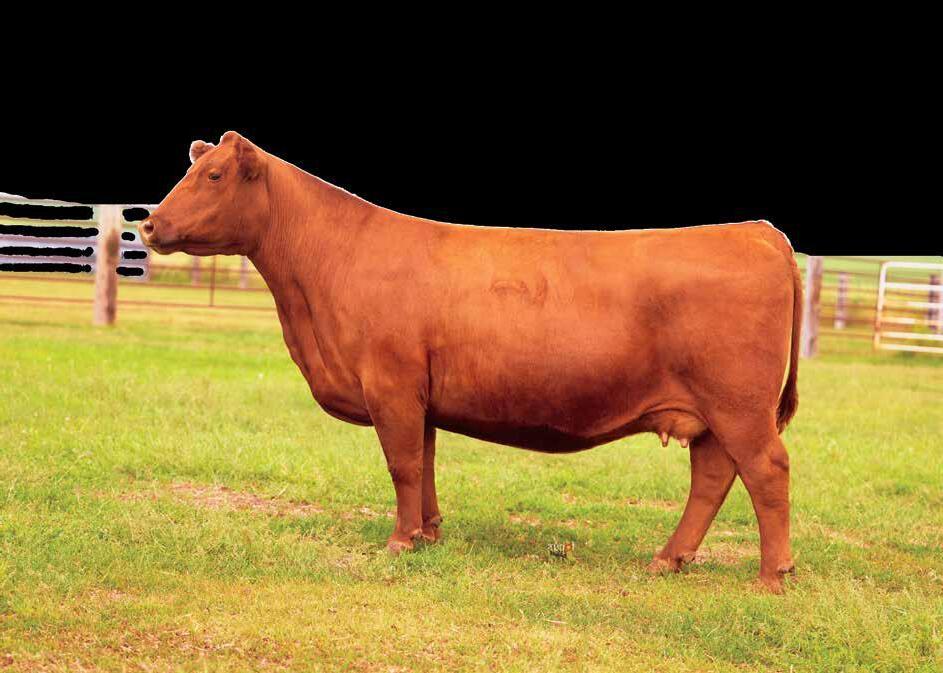


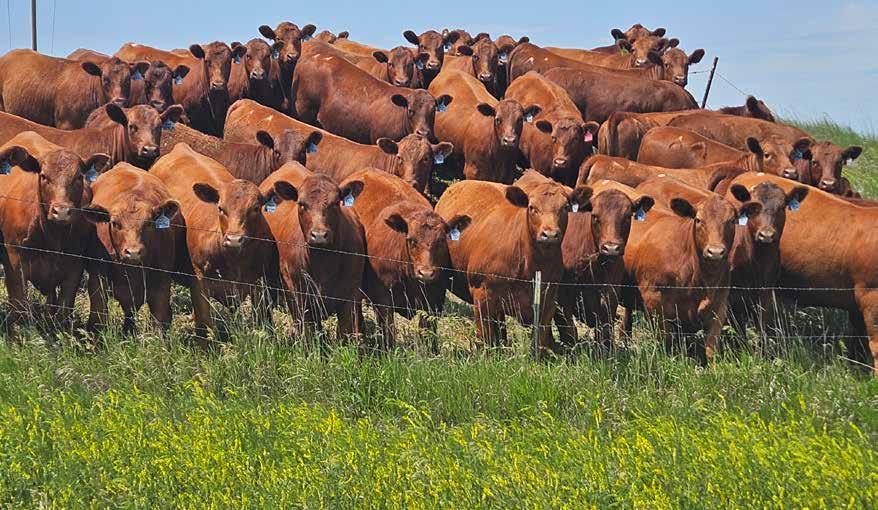



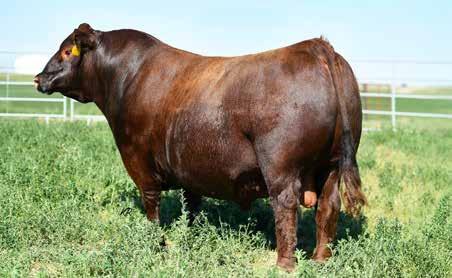
ENERGIZE YOUR HERD
» The industry’s go-to bull for dynamic phenotype, structure and balanced, across the board data
» Blends the growth curve with added Calving Ease and exceptional carcass value
» Maternal strength backed by the Bieber Adelle cow family, his grandam Adelle 297Y is in the Bieber donor pen
» Loads of body and dimension, you really like how bold sprung and soft made he is, and you will love his feet and overall structure
» The more progeny he produces, the more popular and sought after this bull gets

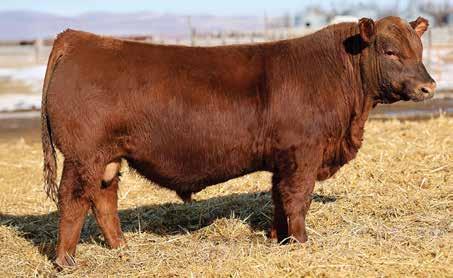
MARSHAL OF THE HIGH PLAINS
» Star of the 2024 spring bull sale season
» Calving ease with rapid early growth, meshed with breed leading longevity and marbling
» Dam is a highly productive proven cow with 6 calves at a 104 MPPA
» Will not only add performance, but also muscle, body, dimension, softness and structure in a middle framed collection
There’s No Room for Mediocrity in Cattle Production
by Nate Smith, General Manager, Top Dollar Angus
Recently, I came across an article suggesting that aiming for “mediocrity” in cattle production might actually be a practical goal.
I’ll give the author and editor credit for one thing – the headline was a head-jerker. I stopped what I was doing and read it immediately.
The premise of the article: While cattle producers take pride in raising their animals, and “more” has traditionally been considered better, perhaps producing “less” in terms of quality might actually be more practical.
Even from the title and introduction, I knew this ran counter to everything that’s driven beef’s success over the past several decades. It struck a nerve, but I reminded myself: staying open-minded is important. So, I read on.
The Case for ‘Mediocrity’ –From Their Perspective
The article argued that producing high-quality cattle might be too costly or unrealistic for some operations.
that region and reputation can work against some operators. Region, in particular, was mentioned repeatedly, suggesting that in certain areas, adding “bells and whistles” doesn’t pay because buyers aren’t looking for that type of calf.
The consultant even implied that, depending on location, basic practices like vaccinations, castration and dehorning might not matter much. Their reasoning: If we’re putting in X and getting Y, and Y isn’t greater than X, there’s no incentive to improve genetics or health programs.
One quote summed it up: “One man’s trash is another man’s treasure. Lower quality for one rancher might be higher for another.”
Let’s pause there, because my blood pressure needs a moment.
Data Says Otherwise
Here’s what real-world, data-driven experience tells us: region doesn’t matter as much as some think.
Top Dollar Angus Team
www.topdollarangus.com
Nate Smith, General Manager 620-546-4839
nate@topdollarangus.com
Andrea Couch • 406-399-3993
andrea@topdollarangus.com
Andy Albrecht • 402-922-1000
andy@topdollarangus.com
The common thread? Progressive producers who see the feeder as their customer.
The difference? Location. Which clearly didn’t limit their value.
Reputation is a different story. The beef feeding industry is small and bad reputations last longer than good
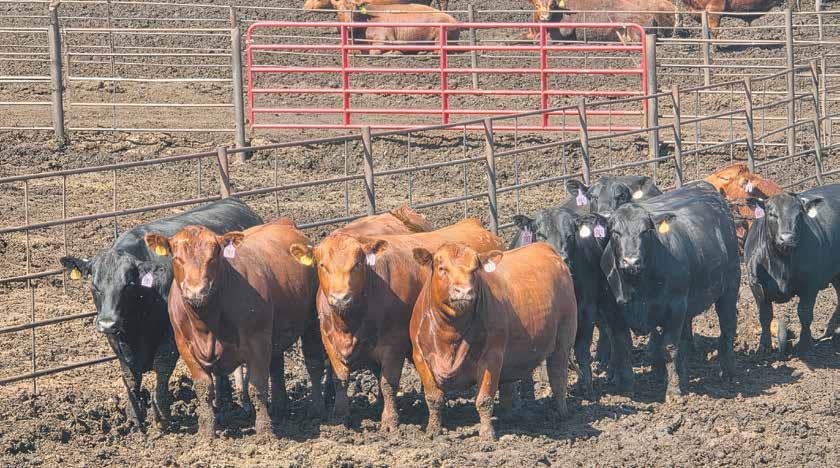
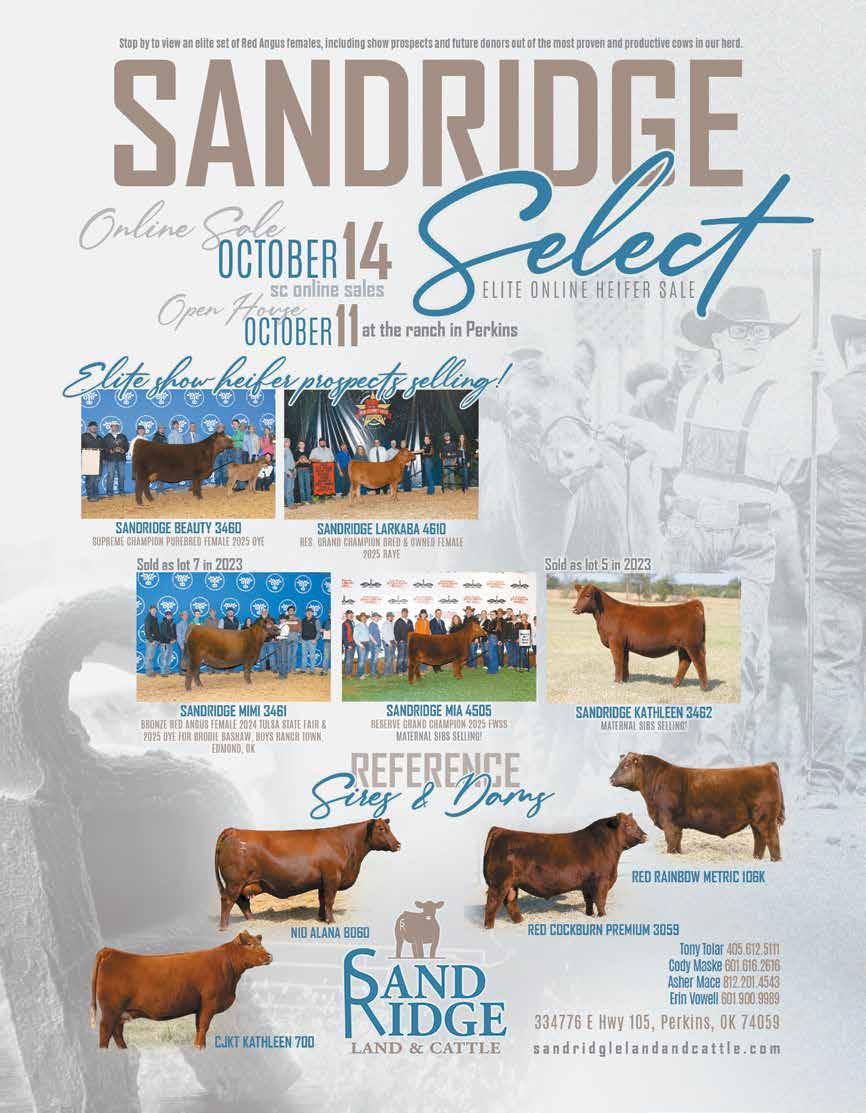

There’s No Room for Mediocrity in Cattle Production
If the goal is to run a lower-input operation, expect to be paid below market average, year after year. And the math is unforgiving. Lower prices mean less reinvestment. Less reinvestment results in poorer quality. Poorer quality results in even lower returns.
“U.S. beef didn’t become the world’s most sought-after protein through mediocrity.”
Eventually, the bare-bones approach puts you out of business. U.S. beef didn’t become the world’s most sought-after protein through mediocrity, and those content with producing mediocre cattle aren’t in the industry anymore.
Redefining ‘Value-Added’
The article also questioned how far “value-added practices” can go before the market turns. My question is:
What exactly are we calling value-added practices?
If it’s castration, dehorning and basic health programs, those aren’t “value-added.” They’re industry standards. Skip them, and you’re not just missing premiums, you’re taking a discount.
The data is clear: regardless of market conditions, those practices consistently provide a positive return.
Where We Agree
I agreed with the article’s second half, which focused on long-term planning and thinking a decade ahead. That’s sound business. Still, the word “mediocre” doesn’t belong anywhere near discussions of growth, strategy or profitability.
Another producer quoted echoed many of my points, stressing the need for data-backed strategies and real business models, not just looking at X’s and Y’s.
The Mixed Message Problem
Here’s the real issue: the first half of the article permits producers to settle for “mediocre.” The second half quietly walks it back.
Once mediocrity becomes acceptable, it’s the beginning of the end.
If mediocrity can’t sustain other industries, why would cattle production be any different?
The ultimate customer isn’t the feedyard, the packer or the grocery store –it’s the consumer. Lowering standards only delivers a mediocre product. And if that’s what we offer, why would they keep choosing beef?
I hope producers, along with those who refuse to settle for mediocre, will, in the words of coach Chris Klieman, “Keep pounding the stone every day,” to ensure beef remains the pinnacle of proteins. //
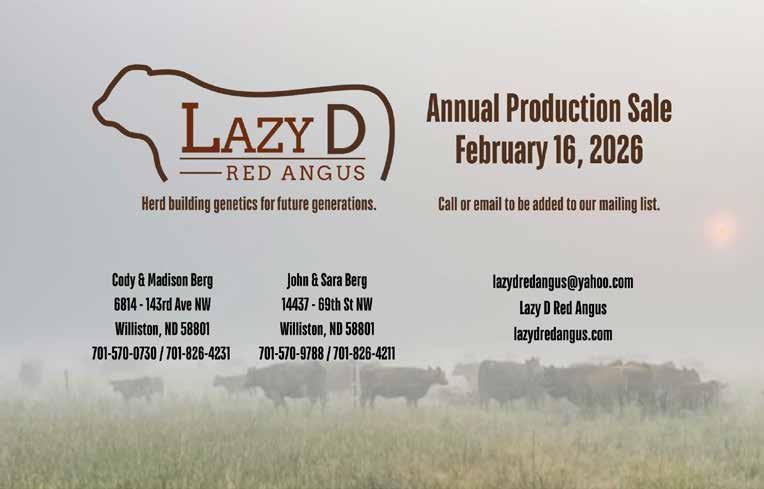
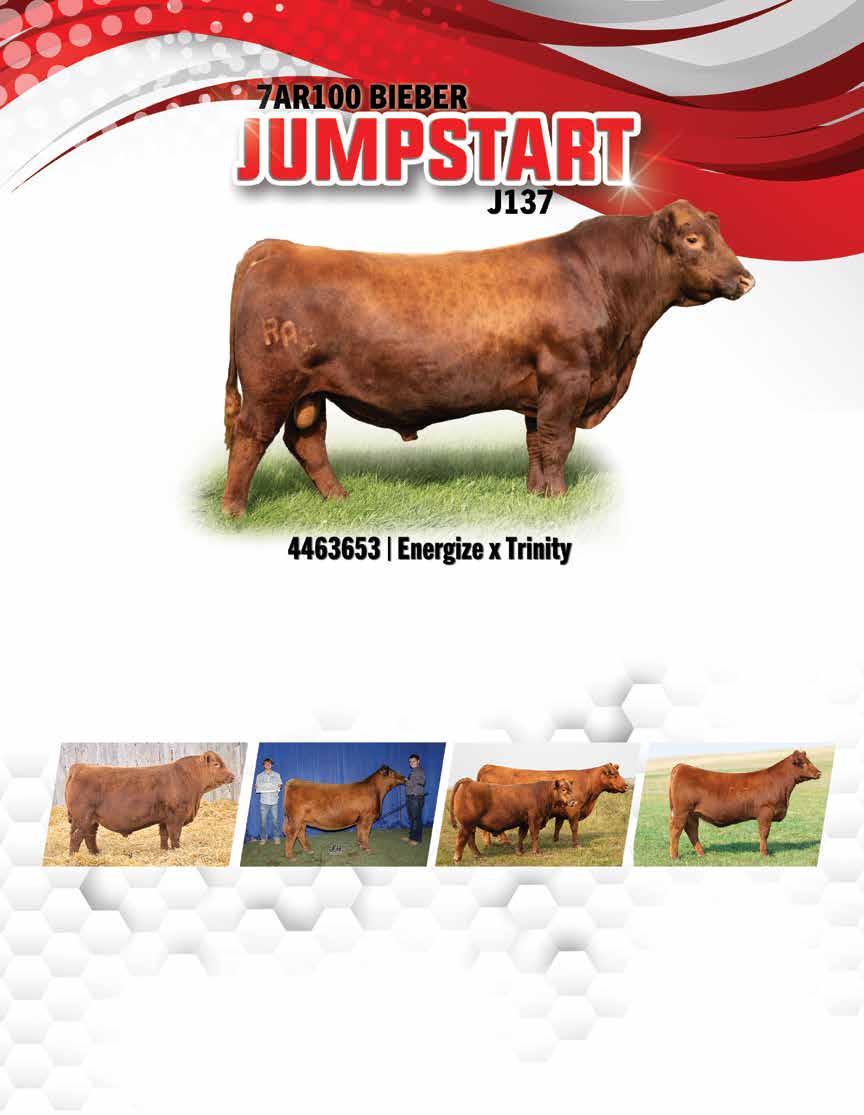

JUMPSTART has proven himself to be a performance superstar! He will add frame, length and weaning weight in one generation making him an ideal cross on moderate cows, adding pounds and profit in this explosive market. JUMPSTART offspring have been well received from coast to coast in both purebred and commercial operations. Add a jolt to your herd today with JUMPSTART!
CHECK OUT THESE JUMPSTART PROGENY!


From Bieber Red Angus Ranch, SD; Schuler-Olsen Ranches, NE; Twedt Red Angus, ND; Wedel Beef Genetics and Anderson Land and Cattle, KS
Managing Parasites to Help Ensure the Productivity of Your Herd
by Melissa Hart for the Red Angus Magazine
Success breeds complacency – and complacency can lead to failure.
Cattle markets are up and grass is plentiful, but producers must stay vigilant with their herd health protocols, especially when it comes to deworming. Eric Meusch, field specialist in livestock with the University of Missouri Extension, advises producers to be proactive.
“This year in our part of the country, we have plenty of grass, we have expensive calves, and it doesn’t take very long for people to get complacent,” he said. “Producers need to make wise decisions and not assume it’s going to be an easy game.”
The million-dollar question is when the market will peak and decline. MU Extension provides an annual cow-calf enterprise budget for spring and fall calving operations. In an average year, producers typically find themselves in the red and lose money per cow.
“This year, even the average producers are making money,” Meusch said. He noted, however, margins are slimmer than expected, even with record-high market prices.
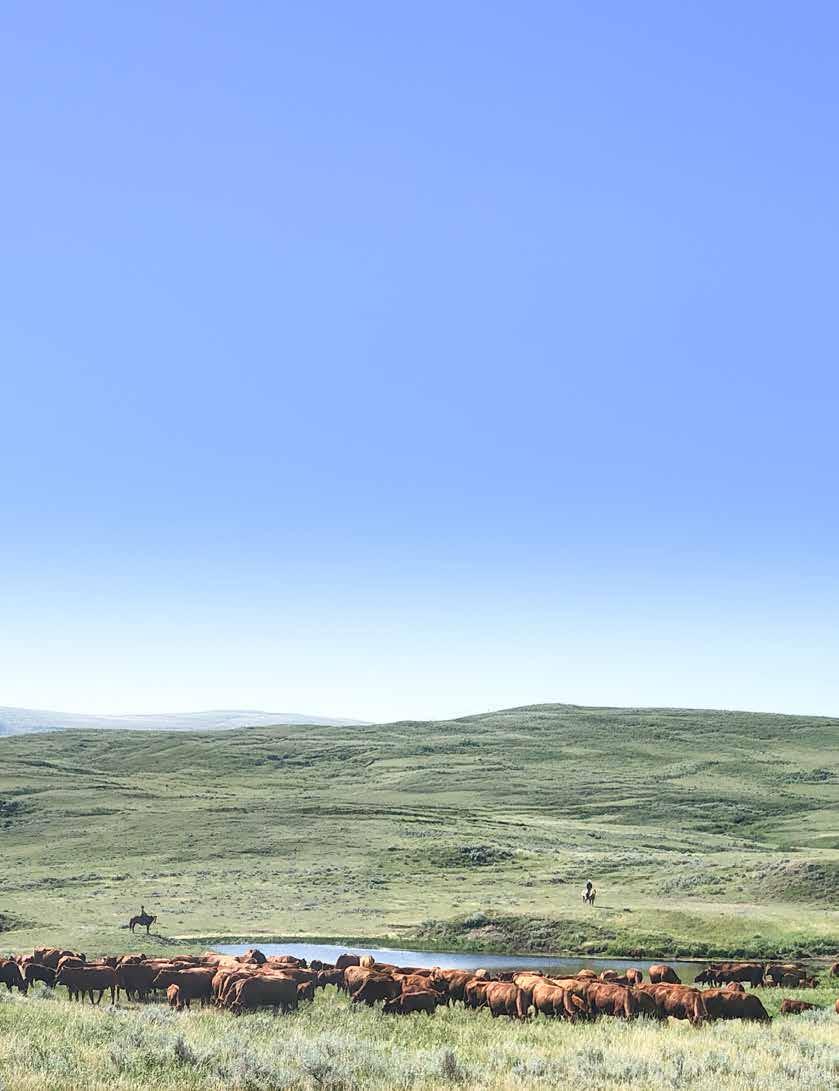
“Even though the margins are positive, they are slimmer than a lot of people would expect because the cost of everything else has gone up as well.
When cattle producers reach the back side of the cycle, they’ll have some adjustments to make, to stay profitable.”
Cattle health is paramount for profitability and deworming remains an essential practice regardless of market fluctuations. One common misconception people make is assuming parasites pass directly between animals. When actually they’re infected by contaminated pastures.
The Parasite Life Cycle
To manage parasites effectively, it’s important to understand their life cycle. With gastrointestinal nematodes, commonly known as roundworms, adults live inside the cow, depositing eggs passed in manure. The eggs hatch, developing through three larval stages before migrating onto grass to be consumed by cattle.
Once ingested, the larvae embed in the stomach lining, mature into adults and restart the cycle. Cattle don’t ingest parasite eggs, Meusch explained.
Instead, they encounter the advanced larvae, which require a moist, shaded environment to survive.

“If the cow consumes the eggs, she’s not going to get worms; if she consumes the second larval stage, it’s not going to hurt her. It’s only that third larval stage that is infectious,” he said. “So, without an infected pasture, cows won’t have adult parasites and without adult parasites, you won’t have an infected pasture.”
Dry environments are less hospitable to infectious larvae. “If that egg hatches out in a dry environment and it can’t proceed into the different larval forms, then it won’t infect the cattle.”
Different areas of the country will foster different parasitic problems. Climate plays a major role in parasite pressure. Areas with higher rainfall, moderate temperatures and dense forage canopies encourage parasite survival. In contrast, arid regions – such as parts of the West – face fewer issues.
Todd Westby runs Red Angus cattle in north central Montana where he believes the extreme cold and dry weather keeps the roundworms to a minimum in his herd.
Eric Meusch
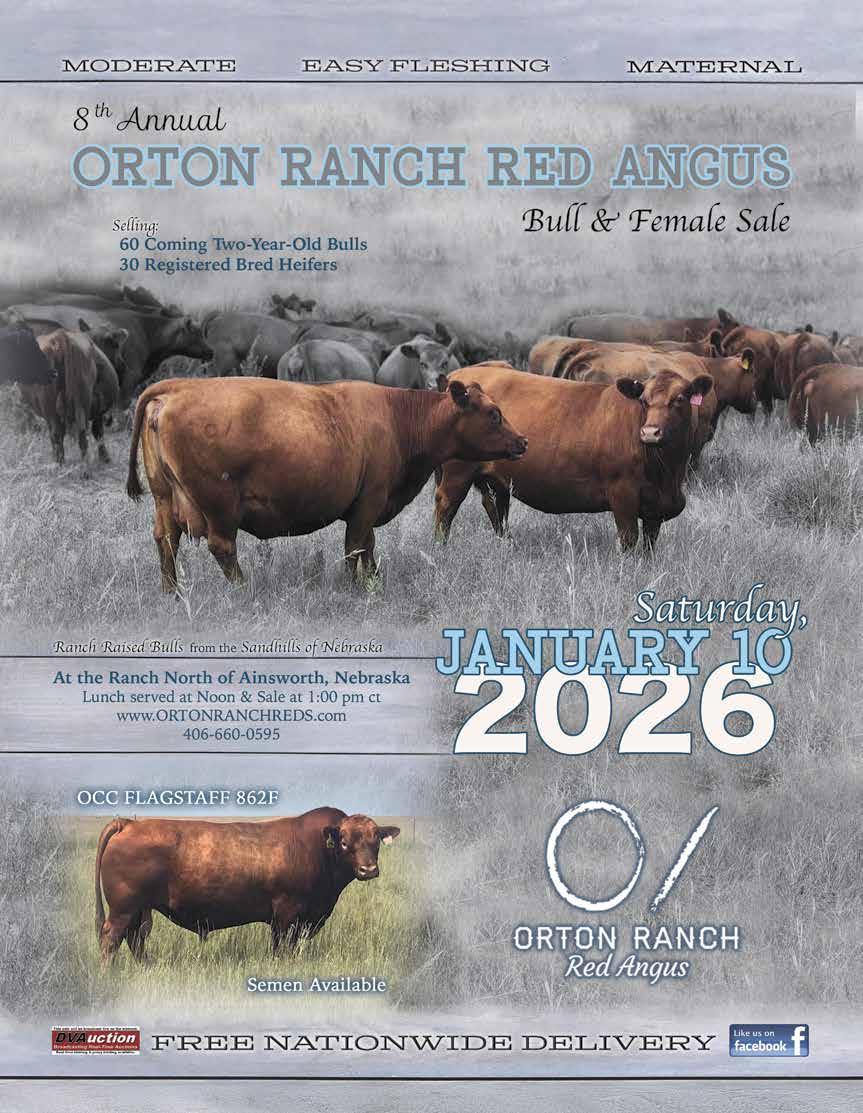
Managing Parasites to Help Ensure the Productivity of Your Herd
Pasture Management
Pasture management is a valuable tool in the fight against parasites.
“If the eggs are deposited in manure and conditions are right, they’re going to develop into larvae and migrate from the manure 3 or 4 feet, climb up a blade of grass in the morning when it’s cool and moist, and await ingestion,” Muesch said. “If the larvae aren’t ingested, they will migrate down under the canopy of grass where it’s cool and won’t dry out.”
However, once the larva reaches the third stage of development, they must find a host or they will perish.
Rotational grazing helps break the cycle by moving cattle before the larvae reach an infectious form. The time needed to “clean” a pasture ranges from 24 to 124 days, depending on the weather conditions.
Rotating cattle out of pastures helps decrease the parasite load. If cattle are in a pasture for three days, then moved, the parasites are likely left behind without a host to survive. When cattle are rotated back into the pasture, it won’t be completely “clean,” but the herd has avoided potential contact with the bulk of the larvae.
“Rotating pastures is an important tool we can use to prevent exposure to larvae,” Meusch said.
Grazing height also matters. Meusch recommends leaving at least 4 inches of grass.
“When rotating back into a pasture, if cattle are grazing a taller grass, they’re grazing largely above the level the larvae can migrate up to meet their host. Producers who are overstocking or over-grazing pastures are exposing cattle to a potentially increased worm load.”
Strategic Versus Tactical Deworming Tactical deworming – gathering all the cattle, running them through the

The second, third and fourth generation on Shelton Farms work together to run Red Angus cattle in Woodland, Alabama. From left: Jase, Issac, Dusty and Wendell Shelton.
chute and administering dewormer at once, was once highly effective. But parasite resistance has reduced its success.
Strategic deworming, though less convenient, can provide better results.
“Producers deworm during late fall after several hard freezes (temperatures dipping below 28 degrees), reducing pasture contamination through winter. Then in spring, there are a lot fewer infections taking place in the pasture,” Meusch explained.
In spring, when the temperature rises consistently above 50 degrees, parasite eggs hatch and larvae become active. Deworming the herd six weeks later helps minimize reinfection before parasites peak.
“By deworming at those two times, you can strategically deworm when cows are less likely to get reinfected and deposit more eggs on the pasture,” he added.
Common Types of Dewormers
The two primary types of dewormers are macrocyclic lactone dewormers (often pour-on or injectable) and benzimidazoles, commonly known as “white” dewormers. There is evidence that resistance has developed in many parasites, particularly against pour-on and
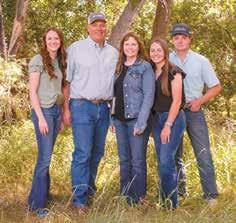
It’s all hands-on-deck when the Westby family gathers the cattle to take them to their winter pastures. The Westbys from left: Brook, Todd, Lori, Blaire and Ty Westby.
injectable products that have become popular for cost and convenience.
“No new deworming products are being developed right now,” Meusch said.
“The products we have are safe, but they’re becoming less effective. Until there’s more investment and research, the best scenario is to better manage the tools we have and not speed up this path to resistance.”
At Shelton Farms in Woodland, Alabama, Wendell Shelton and his son, Dusty, run 275 Red Angus cows across 800 acres of owned and leased land. Their rotational grazing system includes more than 20 pastures.
“We graze small herds on each farm that consist of anywhere from 27 to 50 cows per farm, and we like to use black oats and a rye grass mixture for baleage. We also like to graze the cattle on that as well,” Wendell said.
Rotational grazing plays a pivotal role in reducing parasites in their operation. In the summer, the Sheltons allow the pastures to rest for two to three weeks. Cattle are kept on pasture year-round, with supplemental baleage provided in December and fed through late February, before spring brings about lush pastures once again.

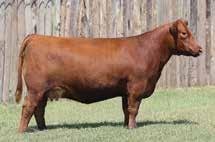
MF DONNA 3143
Sire: LSF SRR TAKEOVER 5051C | RAAA: 5113723
Dam: MF EDEN’S COWGIRL 3425
A picture-perfect young female that is sired by “Beartooth”. She is backed by the in uence of MF Eden’s Cowgirl 3425, one of the premier donors in the program!
Sells with a heifer calf at side by Red U2Q Head Games 14H


MF JULIE 3239
Sire: RED SSS GRAVITY 296E | RAAA: 5113725
Dam: MF JULIE 0332
3239 is an ultra-powerful young female that is destined to make an impact in production. The maternal granddam of this beauty is the tried and true, MF Marilyn 0165!
Sells with a bull calf at side by Red U2Q Head Games 14H


MF RUBY 356 3356
Sire: MF JOKER 962 | RAAA: 4939632
Dam: ALMS A356
3356 is an incredibly powerful female that is bold ribbed, deep sided and o ers superior skeletal quality. A true sale feature that is worth a trip to Alva!
Sells with a heifer calf at side by Red U2Q Head Games 14H
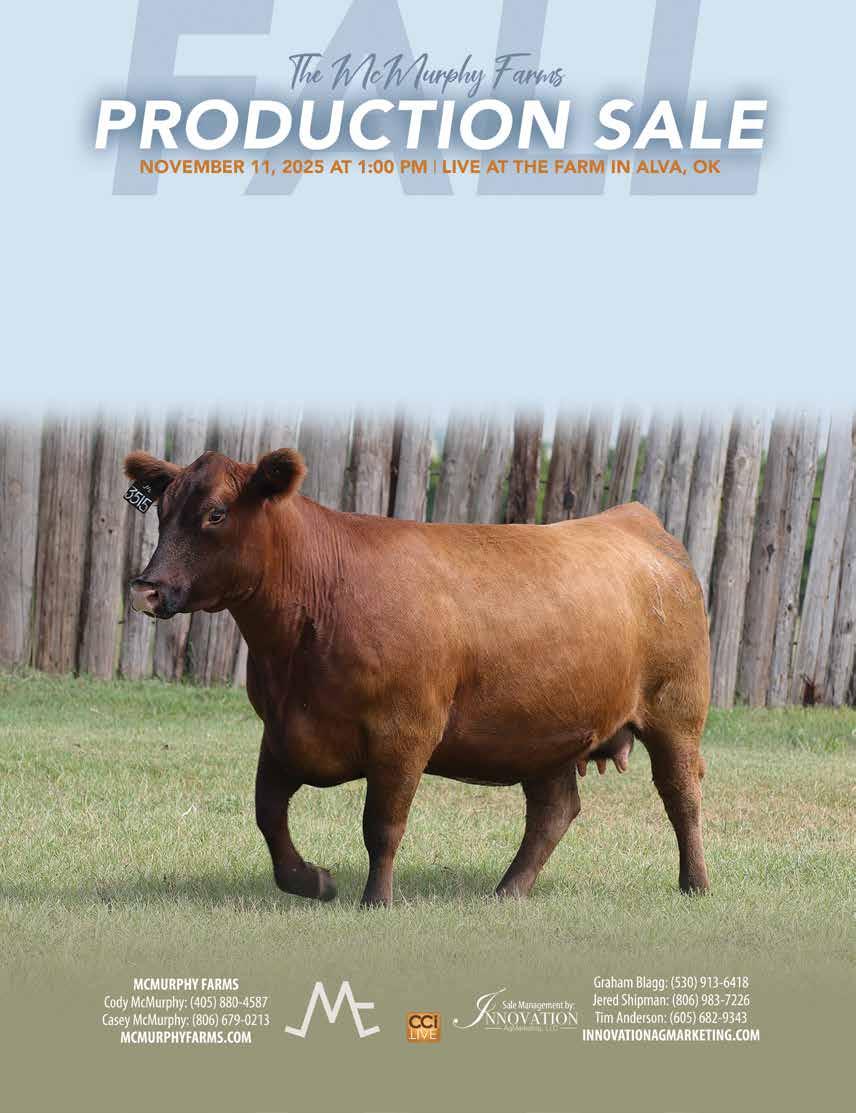
MF NANCY 3515
Sire: FREE VALOR 13G | RAAA: 5113733
Dam: MF NANCY 5153
Unmatched power, presence, and structural integrity!
Sells with a bull calf at side by Red U2Q Head Games 14H
Offering...
An elite set of Age Advantage Red Angus Bulls, Fall Pairs, and Spring Bred Heifers that are supported by the premier cow families at McMurphy Farms!
Managing
Parasites to Help Ensure the Productivity of Your Herd
The Sheltons primarily calve the bulk of the herd in the fall, but a few cows will calve in the spring. No matter the season, about 10 days after weaning, calves receive a pour-on dewormer for internal and external parasites. Cows are dewormed once a year with an injectable product.
In north-central Montana, Todd Westby of Westby Ranch runs hundreds of Red Angus cattle on thousands of dryland acres. His herd calves in the spring and is dewormed in late fall before moving to winter pasture.
“We deworm late in the fall after we’ve had a hard freeze, just above zero. It’s usually the end of October, but sometimes it’s the first of December,” Westby said. “It’s proven more effective to pour them when it’s cold.”
They administer the dewormer as they load the cattle onto the trucks to take them to their winter pasture. “It’s all

pretty simple and doesn’t take a lot of extra effort,” Westby said.
With less than 12 inches of annual precipitation and bitter cold winters, Westby sees fewer parasite issues than most.
“I think the biggest thing for us is we have them out grazing and our cattle aren’t confined – it’s darn cold up here.”
Visually identifying cattle that are predisposed to a heavy load of parasites is nearly impossible. Manure samples are used as a form of identification, but cost and practicality make collection a time-consuming and difficult practice.
Meusch warns against relying on visual analysis of parasitic infection when deciding whether to cull cows.
“If you decide to cull based on a cow simply not looking thrifty, or the old
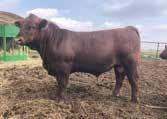
stereotype of a cow not slicking off, it may be a mistake. Many of those symptoms are also caused by fescue toxicosis,” he said.
“There may be many thrifty-looking cattle carrying a heavy parasite load, which you haven’t identified.”
The Early Moves Beat the Worms
The days of being able to completely deworm your cattle are gone; parasites will always be a part of cattle production, but diligent management can minimize their impact.
“The take-home message is that we need to learn to live with them and manage our cows and our pastures to minimize the effects of parasites,” Meusch said. “It’s not going to be as simple as administering a dewormer or culling the infected cows. We will always be managing and attempting to minimize, but parasites will always be part of the picture.” //

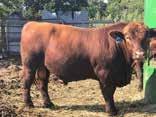
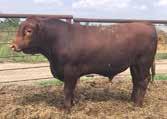
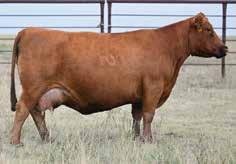
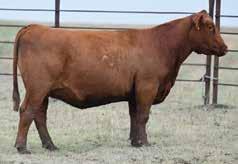
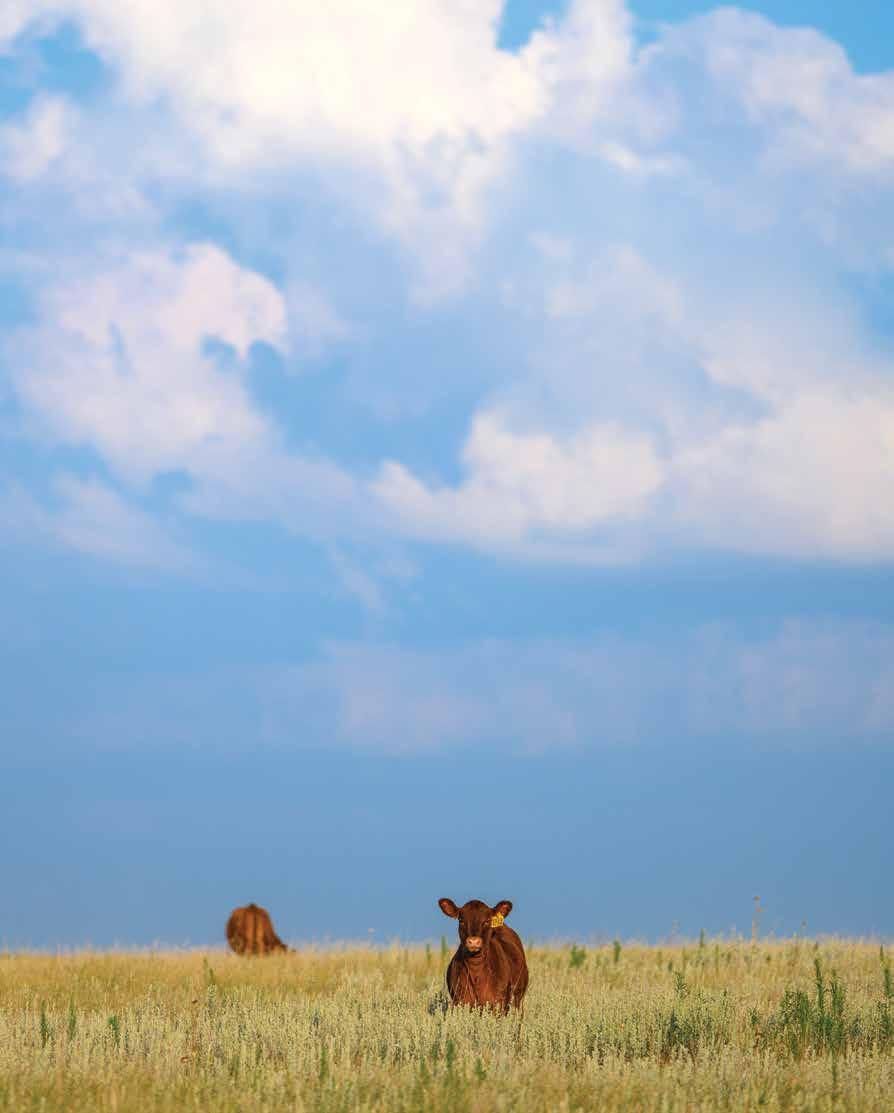










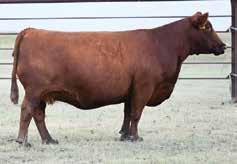
BAR S PRIDE 8435 • RAAA: 4009738
A trait leader for ME and MARB that is a standout phenotypically. This dark cherry red hided female traces to a FULL SISTER to the dam of the popular stud known as Bar S Range Boss 1118!
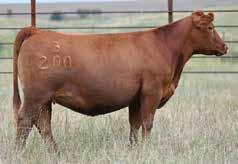
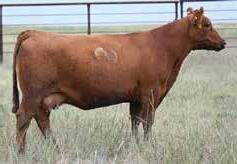
BAR S BLACKCAP 1558 • RAAA: 4537007 1558 is a stunning young daughter of WEBR Brigade 13G that o ers superior udder quality and a balanced set of genomic data. A must-see sale attraction!
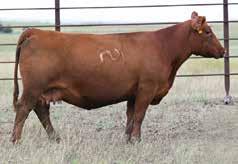
4285597
0597 is a power cow that blends the in uence of Red Six Mile Sakic 832S and WEBR Night Train 324. She is a carcass curve bender within the o ering!








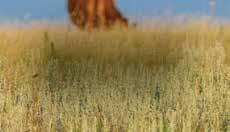





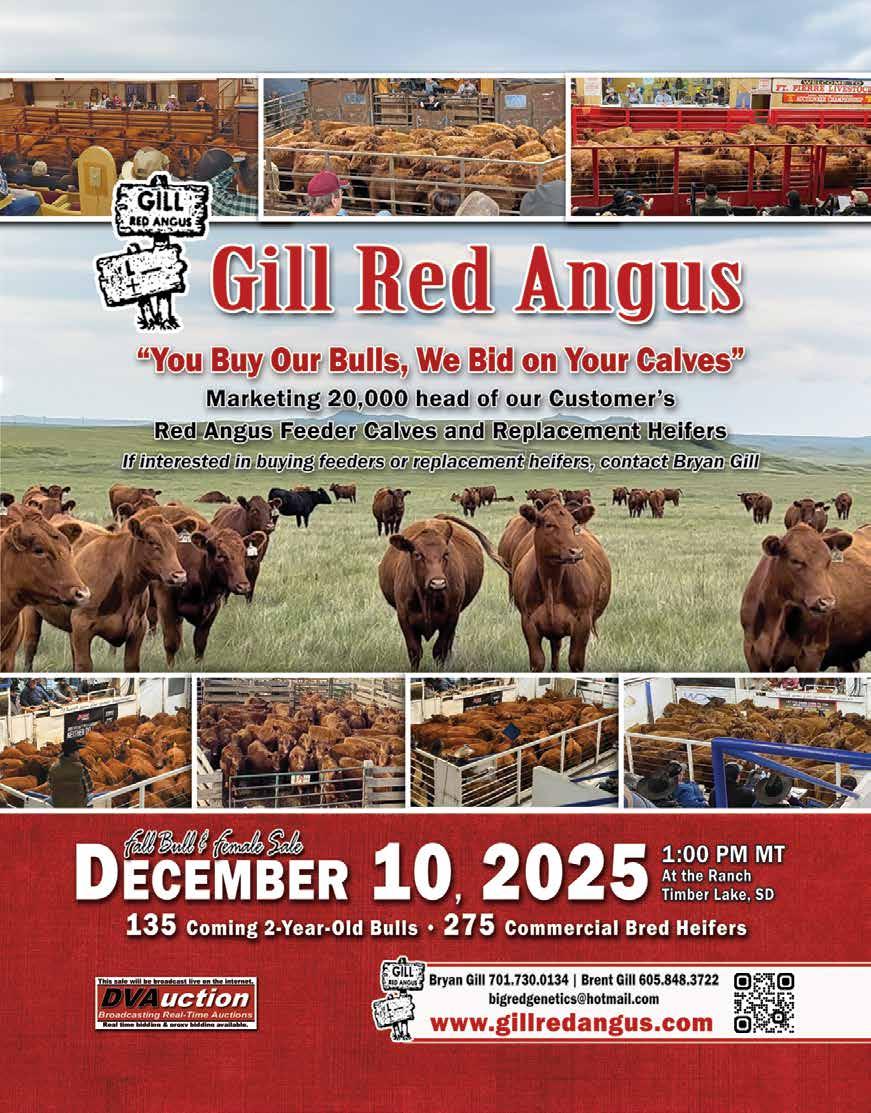

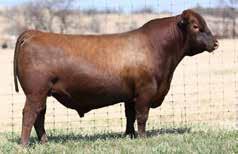
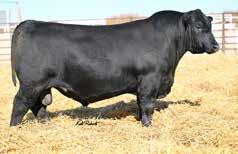
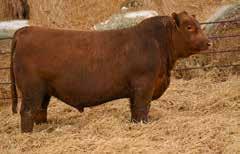
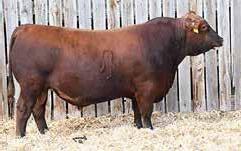

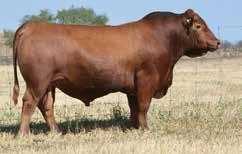
Low-Stress Handling Protects Calves, Health and Profitability
by Jessica Wesson for the Red Angus Magazine
Raising healthy calves is about more than genetics and nutrition. How those calves are handled day to day, from their first vaccinations to the moment they’re weaned, can make or break their long-term performance. Low-stress management practices not only protect health and growth but also boost profitability by keeping calves eating, gaining and ready for the next stage.
Among all the milestones in a calf’s life, weaning stands out as the most stressful. That stress presents quickly – rippling into health, immunity and long-term performance. That’s why producers are turning to low-stress weaning methods, along with timely vaccinations, castration and thoughtful handling, to ease transition and keep calves on track.
Why Stress Matters
“Weaning for the calf is probably the single most stressful time in that calf’s life,” said Brian Haller, White County Extension agent and staff chair for the University of Arkansas System Division of Agriculture Cooperative Extension Service. “You’re taking it away from its mother, and you’re also taking away its food source. At that point, they’re really depending on their mother to provide for them.”
The traditional abrupt method of separation, sometimes called “truck weaning,” is still common because it’s simple and inexpensive. But it can set calves back.
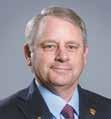
“With that abruptness, it takes longer for calves to get back on feed, which takes longer for them to start gaining,” Haller said. “With calves, that’s your whole game – to start gaining weight because that’s what you’re paid for.”
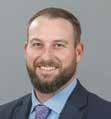
Stress also makes calves more vulnerable to illness.
“From an immune system and health standpoint, they’re more apt to get sick when they’re stressed out and not receiving the nutrients they need,” he added.
Travis Meteer, University of Illinois beef cattle specialist, agreed. “Anytime we can minimize stress, we’re going to increase performance and health in our livestock,” he said. “And weaning is probably as stressful as any time in a calf’s life cycle.”
Buyers notice too.
“If calves are bawling straight off the trailer, buyers know it,” Haller cautioned. “It creates risk for them because they’ll have to spend time and money straightening those calves out before they start gaining. That’s why preconditioning
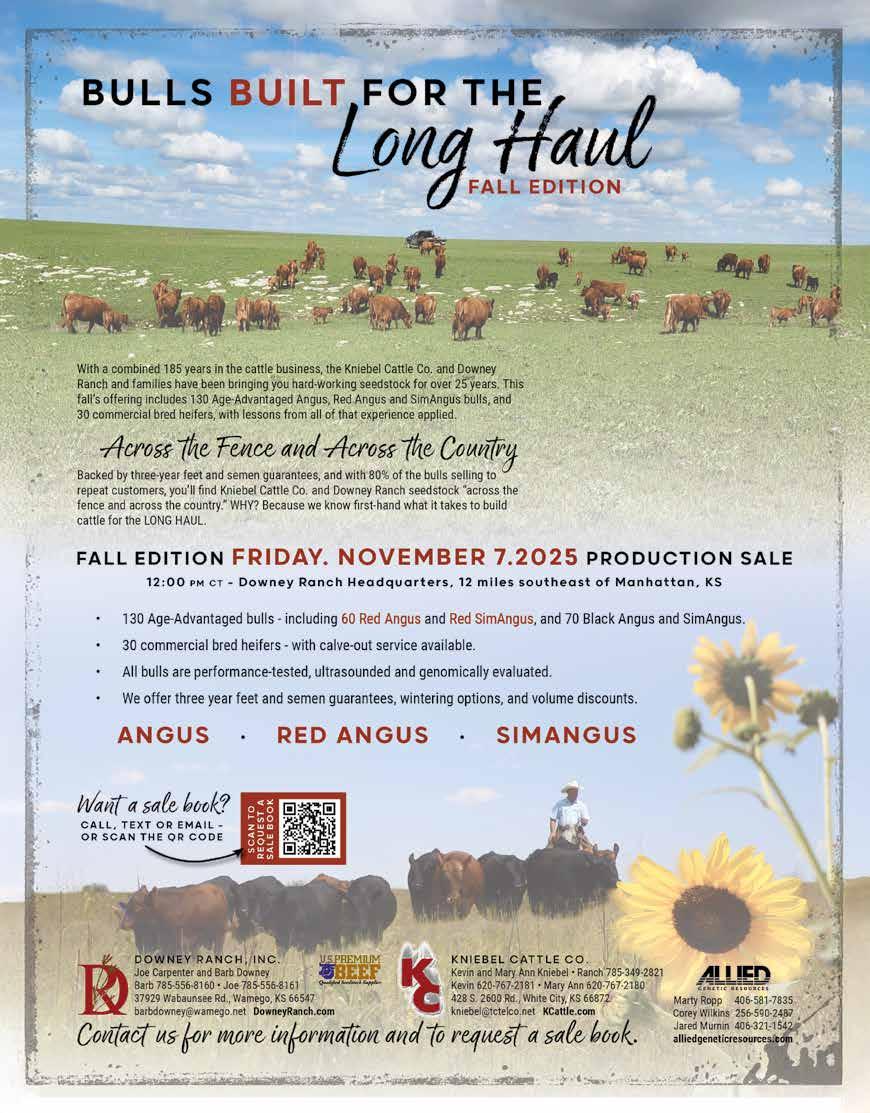
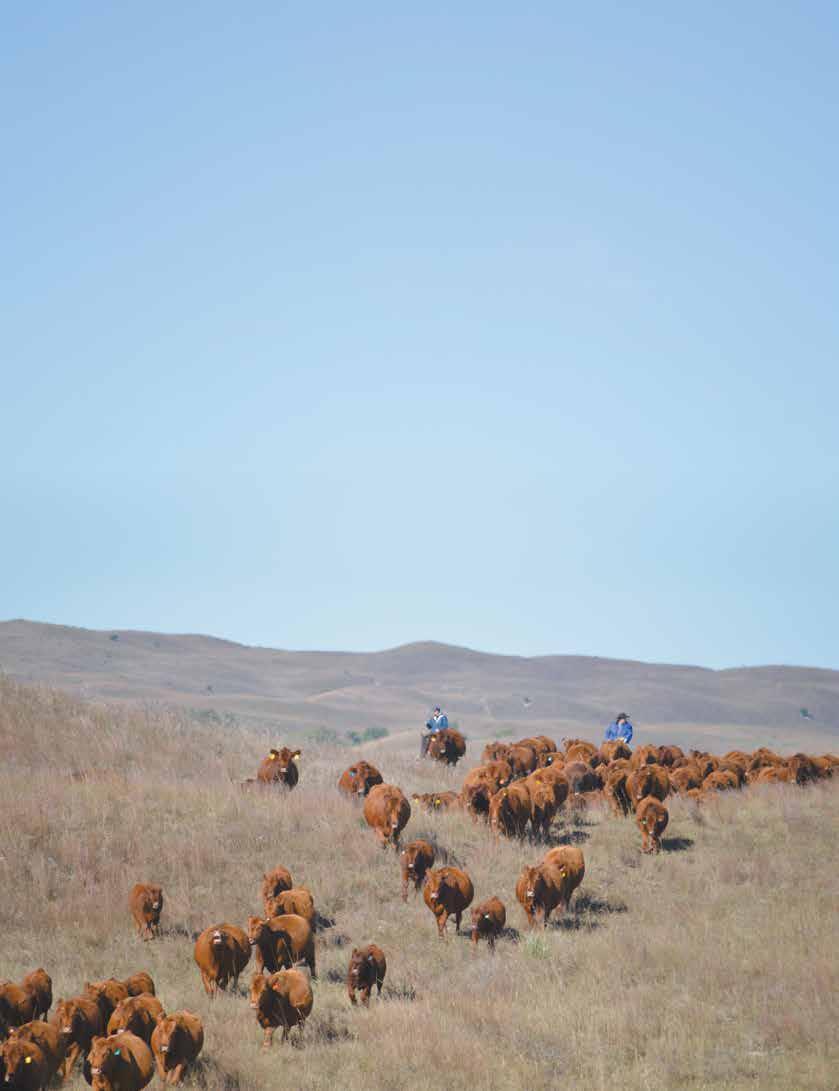
Travis Meteer
Brian Haller


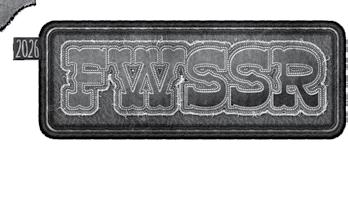
Feb. 1
REGIONAL RED ANGUS SHOW




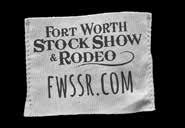

Low-Stress Handling Protects Calves, Health and Profitability
programs work so well – calves are already used to feed, a water tank and not worried about where their mother is.”
Options for a Smoother Transition
Fenceline weaning. One of the most proven low-stress options is fence-line weaning. Calves are separated but still able to see and touch their dams.
“Baby can see mom, mom can see her baby, and they can actually touch their nose through the fence,” Haller explained.
“They get used to the fact that they’re separated, which helps alleviate stress.”
It works with both permanent and electric fencing. Meteer has also used the method. “I love the fact the cattle can still see each other,” he said. “However, you want cattle close to water and shade. You don’t want them out running the fence in 100-degree temperatures.”
Creep feeding. Introducing calves to supplemental feed before weaning can also give them a head start.
“Creep feeding helps because calves are introduced to feed on their own,” Haller said. “When it comes to weaning time, they’re probably a little further ahead than a calf that’s just been in the pasture.”
The economics are debatable, but many seedstock producers like the familiarity it creates with grain. “From a stress perspective, it’s another tool in the toolbox,” Haller said.
Two-stage weaning. Nose flaps, or anti-suckling devices, let calves remain with their mothers while preventing nursing. The flap fits into the calf’s nose with dull prongs, which poke the cow’s udder if the calf attempts to suckle. It doesn’t cause injury, but it encourages the cow to kick the calf away and end nursing.
“Basically, the cow weans the calf herself,” Haller said.
While the method takes more planning, it reduces stress by avoiding abrupt separation. Haller advised producers considering this method to plan ahead.
“You’ve got to get it started early,” Haller said. “It may take a little while for them to wean themselves.”
Pasture or daytime weaning. Some producers practice “day weaning,” which keeps cows and calves apart during the day and reuniting them at night.
Haller pointed to a University of Arkansas study that tested pasture weaning, where calves stayed in a familiar pasture while separated from their dams.

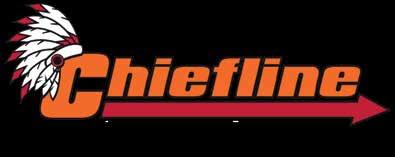







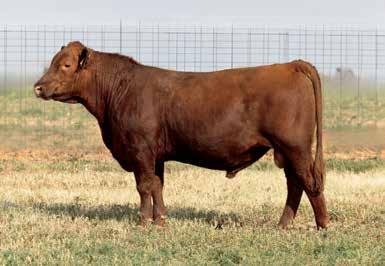






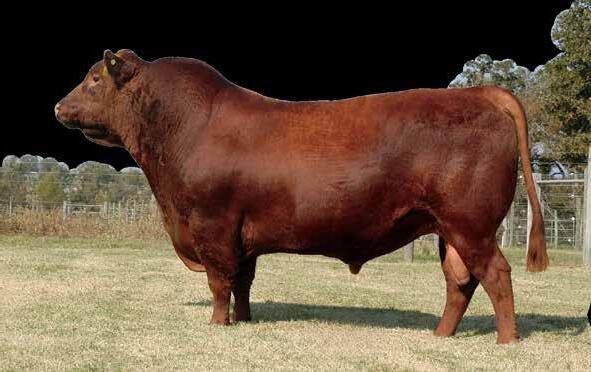







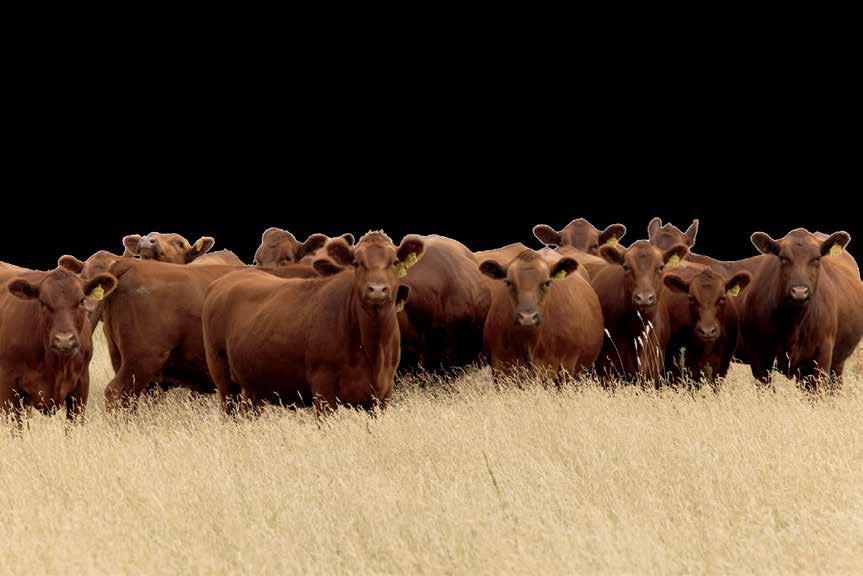
Low-Stress Handling Protects Calves, Health and Profitability
“After 28 days, calves were about 20 lbs. heavier than when the study began,” Haller said. “Familiar surroundings can make a major difference.”
“Usually, at weaning, you’re taking calves somewhere new, which adds to the stress,” he added. “But if they’re in a familiar pasture, they know where the water is and they’re comfortable.”
Vaccinations, Castration and Nutrition
Weaning is not the time to add extra pressure. Proper timing of health protocols helps calves transition more smoothly.
“The little things make the biggest difference,” Meteer said. “Environmental conditions, pen conditions, feed and water, shade – those are critical. If calves have never seen an automatic waterer, weaning is not the time to introduce them. You want familiar feed, familiar water, clean dry pens and to avoid drastic changes.”
Timing vaccinations and castration matters too. Stress can suppress immunity, so Haller recommended vaccinating before weaning.
“If you’re not providing vaccinations, especially for respiratory diseases, you’re setting yourself up for potential issues,” he said.
Castration, often done at weaning, can add unnecessary pressure. Haller recommends castrating as early as right after birth to mitigate calf stress. Meteer added that castrating on grass tends to be a healthier and cleaner environment than a dry lot. Nutrition should also be a priority.
“When you first wean calves, don’t start them off on the cheapest by-product feed you can find,” Haller advised. “They need a high-protein, high-energy ration that’s going to support their growing bodies.”
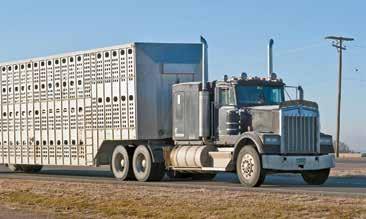
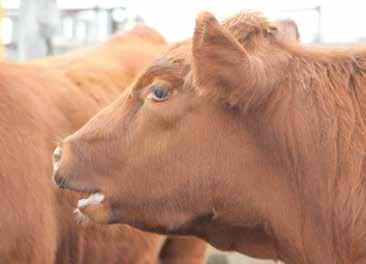
Weaning stress can peak quickly, making low-stress practices essential to protect calf health, immunity and long-term performance.
Spring Versus Fall Calving
Producers often question whether weaning strategies should change based on calving season. Spring and fall calves face different challenges, from temperature swings to parasite pressure.
“With spring calving herds, you may be weaning in late September or early October, where weather swings can be a challenge,” Meteer explained. “Extremely hot temperatures or fluctuating temperatures can be tough on calves.”
Fall calves, meanwhile, often adapt to feed earlier since their dams are already receiving supplemental diets. “There can be some behavioral advantages,” Meteer said. “But cold, rainy weather can be a challenge if you’re trying to wean early.”
“If you’re pasture weaning in the spring, and it’s cold and late, there might not be any grass,” Haller added. “You’ll need to feed them. The technique itself works either way, but forage availability matters.”
Meteer also pointed out that external parasite pressure can vary by season.
“Insects like flies can be an issue with spring calves, while in winter, we may be more concerned with lice,” he said. “Weather stress can occur with both groups, but the type of stressors is a little different.”
Handling and Stockmanship
Both Haller and Meteer agree that the principles are the same: reduce stress wherever possible. And above all, stockmanship counts.
“From a beef quality assurance standpoint, how you handle those calves is critical,” Haller said.
Fresh-weaned calves loaded on semis face their most stressful transition — thoughtful handling and preparation help protect health and performance.
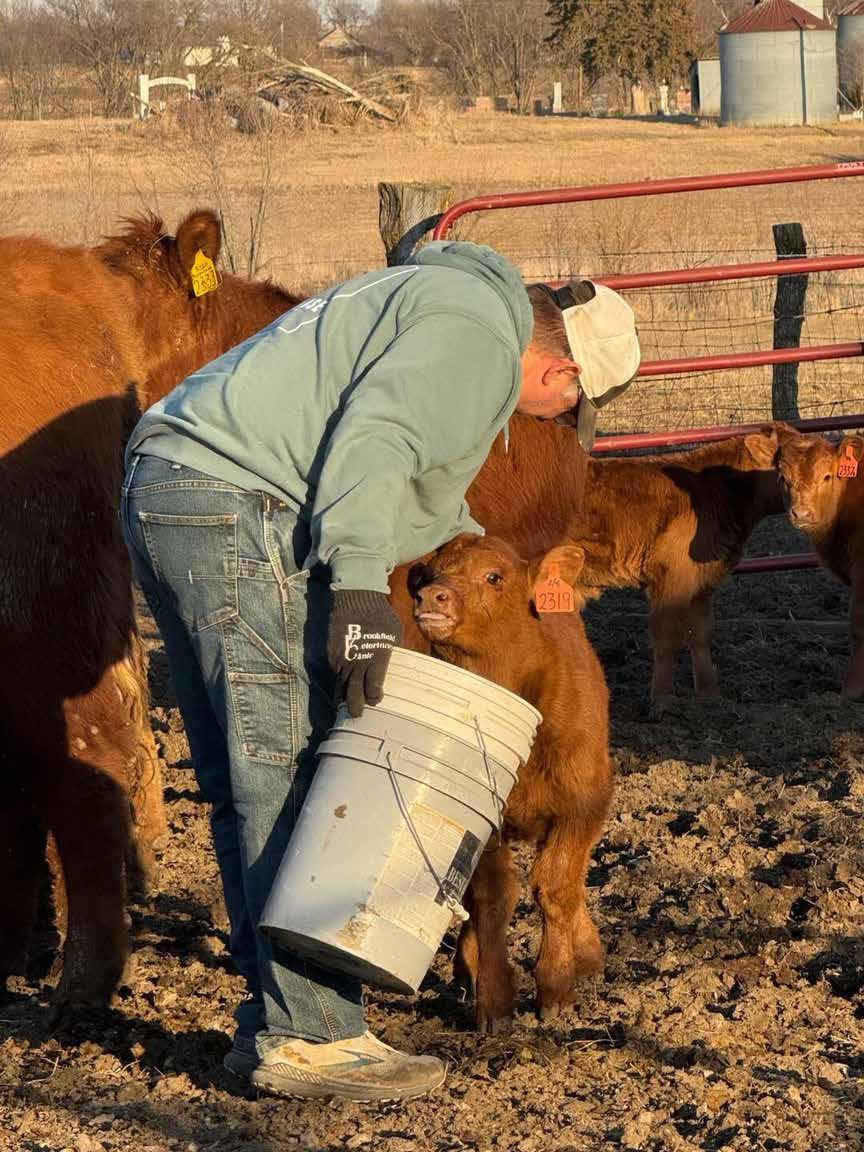

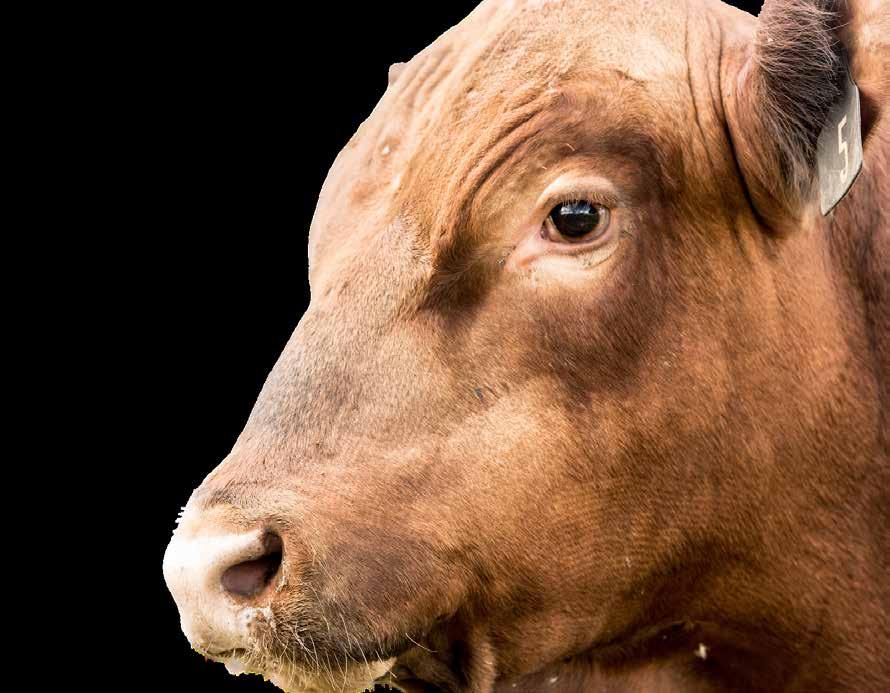
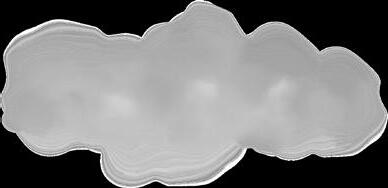
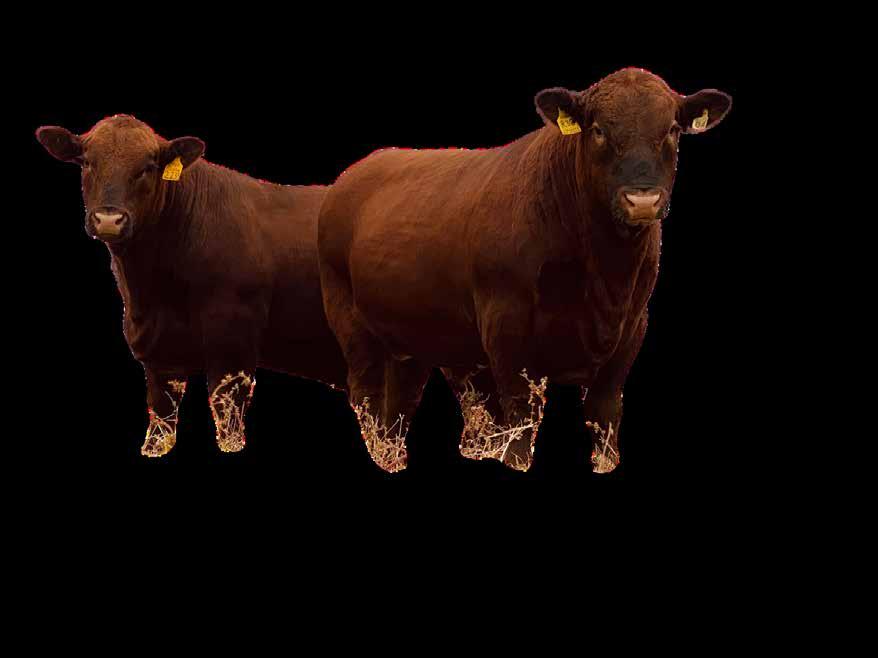
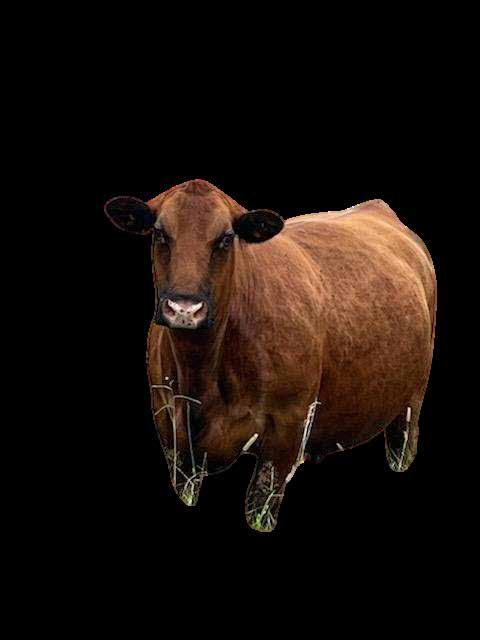

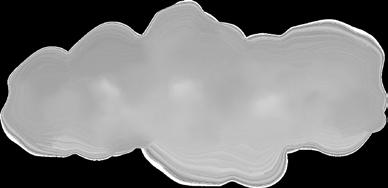

Low-Stress Handling Protects Calves, Health and Profitability
“You can do a lot of things right and still have negative results if your crew is stressing the animals out,” Meteer said.
“Good stockmanship – spotting cattle that are off, handling them appropriately, minimizing stress – helps more in the long run.”
“If you’re making a lot of noise, using hotshots, or don’t have the right equipment, every little stress adds up,” Haller said. “It’s just like us. One stressful event may not compromise us, but when multiple stresses pile up, it takes a toll. The same is true for calves.”
Layering Strategies
Low-stress handling isn’t about a single silver bullet – it’s about stacking good practices.
“You can’t just pick one thing and think it will all work,” Meteer said. “You have to do as many things right as possible.”
That means choosing a weaning strategy that fits the operation, while also focusing on vaccinations, nutrition, water, pen conditions, handling and timing.
Haller summarized, “Less stress means they get back on feed quicker, start gaining sooner and stay healthier. That’s the whole point.”
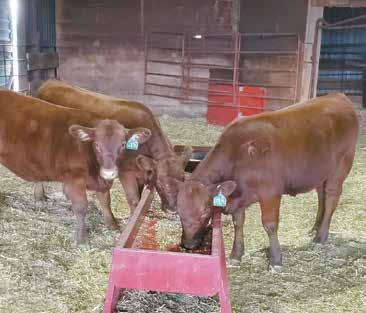
Low-stress handling and familiar feed transitions help calves stay on track, supporting quicker gains and healthier outcomes post-weaning.
With thoughtful management, there doesn’t have to be a make-or-break moment for calves. “It’s an opportunity,” Meteer said. “If we know this is the most stressful time in a calf’s life, then we also know it’s the time where minimizing stress will make the biggest impact.” //
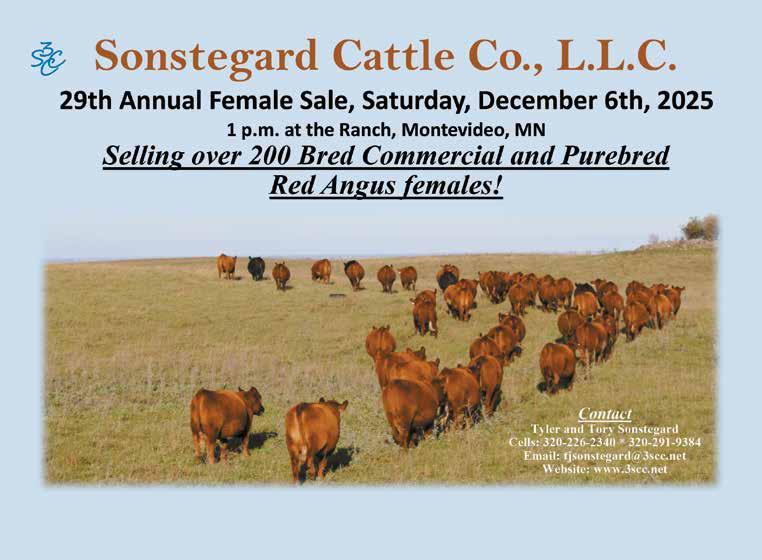




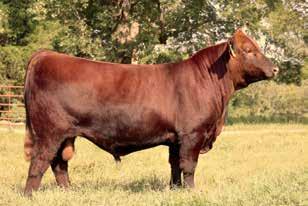



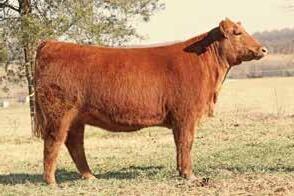
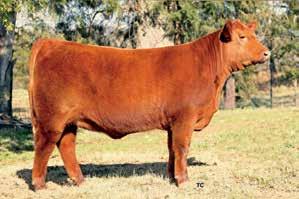








Leadership, Friendship and Growth Through JRA
by Gracie Rogers, JRA Board
Serving on the Junior Board these past two years has been one of my greatest honors, and I’m so grateful for the chance to continue for another year. I’m excited to share that I’ll serve as the 2025-26 Junior Red Angus president. I look forward to working alongside an incredible junior board. With so much already planned, I can’t wait to see it all come together.
I can say with certainty that I wouldn’t be where I am today without the Junior Red Angus Association and the many opportunities it provides. Through this program, I’ve gained leadership skills, life experience and confidence, while building lasting connections in the breed. I wouldn’t trade a single moment. The friendships I’ve made while traveling and the determination I’ve gained encourage me to keep striving for growth every day.
If I could give juniors just one piece of advice, it would be this: just do it. Go to the event you’ve never attended, apply for leadership roles, and, most importantly, have fun. Even if you’re nervous, there will always be someone who makes the experience worthwhile. You’ll regret missed opportunities far more than you’ll regret stepping out of your comfort zone. The lessons and life skills you gain will take you further than you can imagine.
This summer’s Red Angus Youth Expo in Springfield, Missouri, and Round-Up in Montana were highlights of the year. At RAYE, we elected the new board, and both events gave us the chance to celebrate juniors’ well-earned achievements.
Engage with JRA!
Gracie Rogers, President - jragracie1@gmail.com
Peyton Andras, Vice President - peyton.s.andras@gmail.com
Aliceson Stranberg, Secretary - jraalicesonstranberg@gmail.com
Taryn Cox, Commercial Chair - jrataryn@gmail.com
Addison Green Russell, Communication Chair - agreenrussell@gmail.com
Zane Downey, Director - zane.t.downey@outlook.com
Claire McIntyre, Director - clairemcintyre090706@gmail.com
James Miller, Director - jdmiller306@gmail.com
Taylor Dorsey, Junior Program Coordinator taylordorsey@redangus.org
The board also met several times to discuss our vision for the year ahead. Planning is already underway for the 2026 RAYE in Madison, Wisconsin, as well as the 2026 RoundUp. The Junior Red Angus Association has an exciting year ahead, filled with leadership opportunities, hands-on educa tion and unforgettable experiences.
We’ll kick things off with SPARK, our spring leadership conference. SPARK equips juniors with tools and confidence to succeed. Sessions cover résumé building, interview skills, etiquette and professional communication. In addition to workshops, members enjoy plenty of fun and networking, building friendships that last a lifetime.

RAYE is always the highlight of summer, offering contests, workshops and networking opportunities that bring juniors together from across the country. It’s a week of competition, collaboration and celebrating the Red Angus breed. Later in the year, juniors will head out for Round-Up, a weeklong trip exploring agriculture in a different region of the coun try. Through ranch visits and industry tours, members gain unique perspectives on production practices outside their own operations. Round-Up is not only educational but also eye-opening, showcasing the diversity and innovation that drive American agriculture.
Each event provides a chance for JRA members to grow as leaders, strengthen friendships and broaden their under standing of the cattle industry. Applications will open soon – so apply, apply, apply! We can’t wait to see you there.

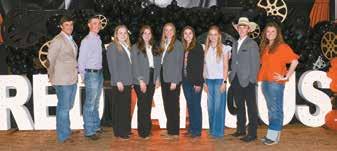
Website: juniors.redangus.org
Facebook: juniorredangus







April 9-12
2026
Desdemona, Texas
3 AWESOME EVENTS ENDLESS OPPORTUNITIES TO LEAD, LEARN, AND GROW.
SPARK –Premier Youth Leadership Event
Light your fire. Lead the way.
SPARK is where it all begins if you’re 16–21 and ready to grow your leadership skills and beef industry knowledge. Hands-on learning. Real mentors. Big impact.
June 21–26


2026
Madison, WI

July
2026 Oklahoma
Red Angus Youth Expo –2026 National Junior Shows Go Wild in Wisconsin!
Show off your hard work, compete at the highest level, and make memories that last a lifetime. RAYE is more than a show—it’s where the Red Angus youth family comes together.

Red Dirt Round UpRed Angus Round Up
Where Red Angus meets the red dirt.
Round Up is heading to Oklahoma for a one-of-a-kind experience packed with ag tours, leadership, fun, and friends. You don’t want to miss this Red Dirt takeover!

DON’T MISS A MOMENT—
Get event info, deadlines, and more at juniors.redangus.org
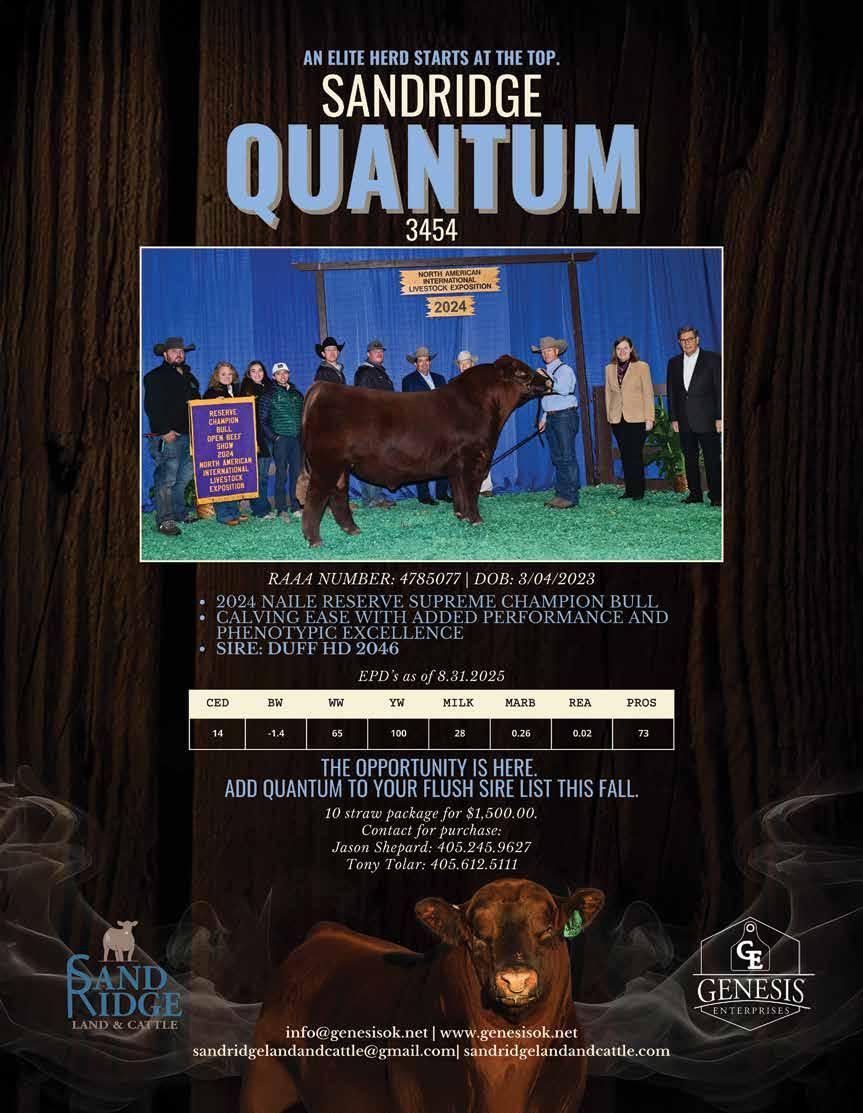
Member News
In Memory
Jason Schmidt
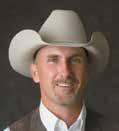
Jason Aaron Schmidt, 54, of Crystal Springs, North Dakota, was called home to his Heavenly Father on Aug. 8, 2025.
Born Aug. 4, 1971, in Jamestown, North Dakota, to Ivan and Mary Schmidt, Jason grew up active in FFA, 4-H, basketball and helping on the family farm.
He graduated from Tappen High School in 1989 and later earned a bachelor’s degree in animal science with a minor in agricultural economics from North Dakota State University, where he met his wife, Serena. The couple married in 1994 and raised four children: Paige, Austin, Madelyn and Ava.
Alongside his son and father, Jason operated a cow-calf and backgrounding operation. He was a passionate advocate for agriculture and his community, serving in leadership roles with the North Dakota Stockmen’s Association, North Dakota Beef Commission and National Cattlemen’s Beef Association.
Jason’s legacy is defined not only by his leadership but also by the lives he touched. He had a way of making everyone feel welcome, whether through a firm handshake, a quick-witted
remark or his genuine interest in others. Through his family, cattle and community involvement, Jason left a lasting impact that will live on through the next generation.
He is survived by his wife Serena; children Paige (Jayden), Austin, Madelyn and Ava; parents Ivan and Mary Schmidt; sister Cassie (Scott) Weness; brother Jeremy Schmidt; and many nieces, nephews and extended family.
He was preceded in death by his grandparents William and Anita Schmidt and Aaron and Bonnie Rolf, and his father-in-law, Leo Mock.
DeVoe
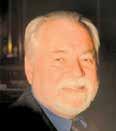
Frank James DeVoe, 76, of Lewisville, Texas, passed peacefully from this earth on the morning of Aug. 10, 2025.
Born Nov. 28, 1948, to Bill and Marie DeVoe, Frank grew up in Farmers Branch alongside his sister, Patricia Noska; brother, Mike DeVoe; and “baby sister,” Debra Caskey.
After graduating from R.L. Turner High School in 1966, he served in the U.S. Navy from 1966 to 1969.
On March 30, 1973, he married the love of his life, Debbie, and togeth-
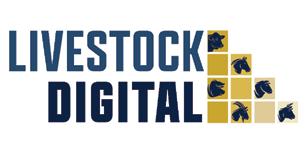



er they raised two children, Kyley Wayne DeVoe (Brenna) and Tiffanie Leigh Jackson (Tim). Frank’s greatest joy came from being “Pappy” to his grandchildren, Taylor Ashleigh, Karlee Kay Grisham (Cole), Kenedy Kay, and great-grandson, Wesley Wayne Grisham.
Frank retired from Southwestern Bell/AT&T after 30 years of service, followed by 10 years with Southwest Airlines.
He enjoyed hunting, fishing, rodeoing with his kids, cruising with friends and family, and cheering for the Cowboys, Stars and Rangers.
He was an Endowed Member of Grapevine Masonic Lodge #288 and served on the board of the North Texas High School Rodeo Association.
A memorial service was held Aug. 16, 2025, at Mulkey-Mason Funeral Home in Lewisville.
Frank will be remembered for his quiet strength, sharp wit and steadfast love for family and friends. His life was shaped not by grand gestures but by everyday moments that stitched together a legacy of integrity, generosity and love.
His legacy lives on in the stories we tell, the lessons he taught and the love he gave so freely.














Frank
Troy Thomas
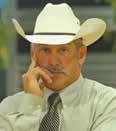
Troy Brent Thomas, 62, of Sully County, South Dakota, passed away Aug. 19, 2025.
He was born Dec. 13, 1962, in Brookings, South Dakota, to Harry and Kay (Ludwig) Thomas and spent his life working on the Thomas Ranch.
From an early age, he loved the outdoors, livestock and showing cattle. With the guidance of Nolan Flesner, his passion grew into a lifelong pursuit, highlighted by multiple wins at the American Royal and Ak-Sar-Ben.
After graduating from Sully Buttes High School in 1981, Troy attended South Dakota State University before returning home to the ranch.
In 1985, he married VeaBea Bourk, and together they celebrated 40 years of marriage. They raised two daughters, Taylor and Cally, and later Troy embraced his most treasured role as “Papa Troy” to grandchildren Tee and Tyler.
In 1990, the family moved to Cimarron, Kansas, where Troy led the Dewey Charolais program. Returning to
South Dakota in 1994, he continued shaping the Thomas Ranch legacy, working cattle, managing sales and hosting pheasant hunters.
Troy was named Charolais Herdsman of the Year, judged major shows across North America, and served on boards including the American International Charolais Association, South Dakota Angus Association and Black Hills Stock Show.
Beyond his achievements, Troy will be remembered as a mentor who poured his time, knowledge and heart into the next generation. His encouragement, kindness and belief in others left a lasting impact across the cattle industry and his community.
He is survived by his wife, VeaBea; daughter Cally (Clint) Kindred; grandchildren Tee and Tyler; parents Harry and Kay; sister Tracy (Pat) Wientjes; and extended family.
He was preceded in death by his daughter, Taylor; grandparents Clarence and Hazel Ludwig, and Alvin and Gebe Thomas; sister-in-law Val Bonnichsen; aunt Lila Ludwig; and several uncles.
In lieu of flowers, a memorial has been established in Troy’s name.
Travis Pembrook
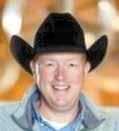
Travis Wayne Pembrook, 51, of Fairview, Oklahoma, passed away on Aug. 22, 2025.
Born Jan. 19, 1974, in Fairview to Lonnie and LaDonna Pembrook, Travis grew up with Angus cattle and was active in FFA, earning both the State and American FFA Degrees. He graduated from Fairview High School in 1992 and attended Oklahoma State University.
In 1995, while helping with show cattle in Kentucky, Travis met Beth Murphy. The two married in 1996 and built their lives together near Fairview, continuing Pembrook Cattle Company on land homesteaded by his family. Travis also established a custom fitting service that prepared cattle for shows and sales across the United States and Canada, producing numerous national champions.
As the cattle operation grew, Travis and Beth became known for the slogan “Putting Good Cattle into the Hands of Great People.” Their greatest blessings came with the births of their sons, Bret in 2008 and Bryson in 2014.
Travis enjoyed working with youth,
Anna and Roman Fortozo
Anna Miller and Roman Fortozo were married June 6 in Denver, Colorado.
Anna is the granddaughter of the late Roy and Nellie McPhee and the daughter of Mary McPhee Miller. She serves as managing editor of the Western Livestock Journal.
Roman works as an accountant.
The Red Angus community extends its warmest congratulations to the couple. //


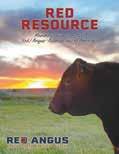



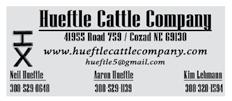

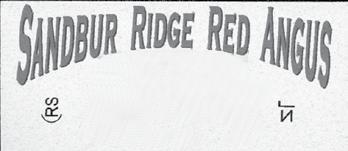









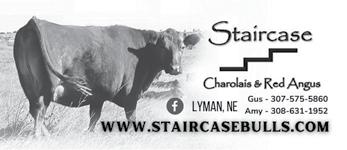
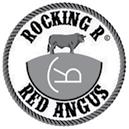
Member News
hosting cattle camps, and judging shows such as the National Western, Angus Junior Nationals, North American, American Royal and others.
He served as president of the Fairview School Board, was a member of the Fairview Mennonite Brethren Church, and sat on boards for the American Chianina Association and the Live Like Lily Foundation.
He also held a private pilot’s license and loved flying his Cessna 182.
Travis is survived by his wife Beth; sons Bret and Bryson; parents Lonnie and LaDonna; sister Jackie Sperling (Andy); grandmother Joyce Martens; and extended family. He was preceded in death by grandparents Jack and Lorene Pembrook and Don Martens, and mother-in-law Linda Murphy.
James Henry Whitley
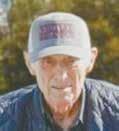
James Henry Whitley, 94, of Horton, Alabama, passed away on Sept. 2, 2025.
Born June 2, 1931, to Henry Grady and Mavis Gunter Whitley, Henry grew up in the Pleasant Grove Methodist Church, where he later married Sidney Jane Eller, the love of his life.
The couple shared 75 years of marriage and built a family centered on faith, farming and service.
Henry graduated from Susan Moore High School in 1950 and devoted his life to farming, producing a wide range of commodities throughout his
career. Farming was not only his chosen livelihood but also his calling, and he embraced it with dedication.
He was known as a devoted family man who faithfully supported his church, community and neighbors.
Over the years, Henry served in many leadership roles, including Chairman of the Board of Stewards at Pleasant Grove Methodist Church, director for the Red Angus Association of America and member of the Federal Land Bank Board, Blount County Farmers Federation Board, Blount County Cattlemen Association Board and the Soil Conservation Service Committee.
His commitment to service reflected his belief in giving back to the industry and community that shaped his life.
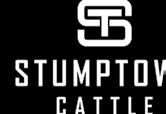



WI 53569 (608) 778-7214 • dbuckhaus4b@gmail.com







Henry will be remembered for his kind
His
He is survived by his wife Jane; sons Jimmy (Kathy) Whitley and Timothy Whitley; grandson James Ray (Natalie) Whitley; and great-grandchildren Jackson Henry, Rayna and Max Whitley. He is also survived by his sister-inlaw Rebecca Whitley.
He was preceded in death by his parents and his brother Johnny. //

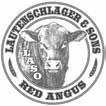




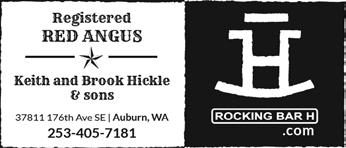
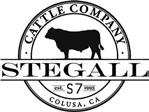
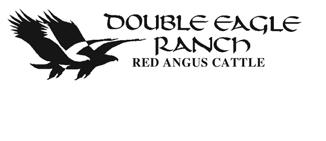



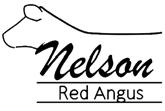
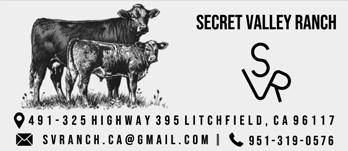
Welcome to our Newest RAAA Members!
Area 1 –West
Director – George Murdock
BROOKE CHANDLER
8521 BIRCH CREST CT ELK GROVE, CA 95624
ANNE MARIE PARKHURST 16178 DIXONVILLE RD. ROSEBURG, OR 97470
Area 2 – Montana
Director – Kay Klompien
BROMENSHENK FARMS INC
BRENDA BROMENSHENK 4715 GRAND AVE BILLINGS, MT 59106
Area 3 – Rocky Mountain
Director – Aaron Kravig
ROCKING G RED ANGUS
TESSIE GERINGER
380 E FAIRVIEW WHEATLAND, WY 82201
Area 4 – Southwest
Director – Tony Ballinger
ADELINA BELL 188 COUNTY ROAD 441 ALICE, TX 78332
CORD OF THREE ENTERPRISES, LLC
JASON BORCHARDT 171 MONARCH RANCH RD BLANCO, TX 78606
MASON COOPER
4224 VZ CR 2112 WILLS POINT, TX 75168
BAR E LIVESTOCK
RYAN EATHER 205 COUNTY ROAD 13300 PARIS, TX 75462
7F RANCH
JESSE FLOYD PO BOX568 BOOKER, TX 79005
JH ANGUS
JEFF HOWARD 1422 STANLEY ST SWEETWATER, TX 79556
JAKE LOCK 1001 W BOIS D ARC ST HENRIETTA, TX 76365
RED RIVER FARMS
BOB MULLION 602 FM 1652 GRAND SALINE, TX 75140
RED CANYON CATTLE, LLC
KHAKI SCRIVNER 1392 FM 657 TURKEY, TX 79261
KEEDON SMITH FARMS
KEEDON SMITH 101 W 20TH ST WELLINGTON, TX 79095
ADDY STUTTS
1408 NE 23RD STREET MINERAL WELLS, TX 76067
HUDSON WEDEKING 1393 CR 2330 MINEOLA, TX 75773
Area 5 – Northern Plains
Director – Stephanie Jung DEER CREEK CATTLE CO.
JAMES WENCL 21681 710TH AVE DEXTER, MN 55925
JACKSON BROSSART
6950 HWY 3 N RUGBY, ND 58368
SAWYER BROSSART
6950 HWY 3 N RUGBY, ND 58368
GRAYSEN DAWS
4549 HWY 35 MICHIGAN, ND 58259
LEIGHTYN DAWS
4549 HWY 35 MICHIGAN, ND 58259
TRAYSEN DAWS
4549 HWY 35 MICHIGAN, ND 58259
TRISTYN DAWS
4549 HWY 35 MICHIGAN, ND 58259
HAILEY KLYM 9981 11ST SW DUNN CENTER, ND 58626
ISAIAH RESSLER 803 1ST ST NW COOPERSTOWN, ND 58425
AMY WANOUS
22701 338TH ST SW MAKOTI, ND 58756
DICKSON RANCH NOAH DICKSON
40615 218TH ST CAVOUR, SD 57324
JACOB LUVAAS-JUNG
36813 131ST ST MINA, SD 57451
BRICELYN PEDERSON
12533 245TH AVE FIRESTEEL, SD 57633
Area 6 – Great Plains
Director – Jason Anderson
BRAXTON SCHWEITZER 2325 A ST ROAD MILFORD, NE 68405
BELLA MANOUS 837 E 2080 RD BOSWELL, OK 74727
STERLING LIVESTOCK
JENNA STERLING 2606 EAST HIGHLAND TECUMSEH, OK 74873
Area 7 – Northeast
Director – Rob Hess
JACQUELINE BANKERT 3337 BAKER SCHOOLHOUSE ROAD FREELAND, MD 21053
COUNTRY ACRES FARM
BRYCE ZEPP 2700 ROWE ROAD NEW WINDSOR, MD 21776
STONE VALLEY FARMS
DANA DREW 1062 HENRY HUFF RD OXFORD, NC 27565
FINN CARTER STEMPER 617 CANAAN ST CANAAN, NH 3741
AARON DENNIS
2436 COON ROAD JASPER, NY 14855
DENNIS FARM
STEPHEN DENNIS 3377 STATE ROUTE 417 JASPER, NY 14855
KARLIK FARMS GP TIM KARLIK 1341 HEIFER RD SKANEATELES, NY 13152
TUCKER POMEROY
AUSTIN POMEROY 11198 LAPP RD FILLMORE, NY 14735
SISTERS CATTLE CO.
EMMA PITSTICK
14380 PRAIRIE PIKE SOUTH SOLON, OH 43153
EPPINGER FARMS LLC
JACOB EPPINGER
587 PLAIN GROVE RD SLIPPERY ROCK, PA 16057
ZEKE FROCK
325 LITTLESTOWN RD LITTLESTOWN, PA 17340
RUBY PERKINS 583 AMITY RI ROAD AMITY, PA 15311
TUSCARORA RED ANGUS
DAVE WENRICH 104 EQUINE ACRES LANE MIFFLINTOWN, PA 17059
Area 8 – Southeast
Director – Jim Yance
CHILDERS RED ANGUS MASON CHILDERS 2364 COUNTY ROAD 57 SKIPPERVILLE, AL 36374
RED BUD FARMS
JOSHUA WALKER P.O BOX 126
BEN LOMOND, AR 71823
KEN BRAY 15 MT. VIEW DR JEFFERSON, GA 30549
JPS FARMS
J. BEN SMITH 101 HARTS MILL RD. PAVO, GA 31778
CALEB HORST
457 JAKE FAW RD. WAYNESBURG, KY 40489
HEINSOHN FARM
TERRY HEINSOHN 930 WHITE SPRINGS RD FRIERSON, LA 71027
HUGHES ANGUS CHAROLAIS
CHEYENNE HUGHES 5 COUNTY ROAD 9 GOLDEN, MS 38847
MANSOUR FAMILY FARMS LLC.
LOUIS MANSOUR 293 COUNTY ROAD 164 VAIDEN, MS 39176
RILEY PURVIS 3001 PURVIS RD HERMANVILLE, MS 39086
JOHNSON RED ANGUS SMITHFIELD N.C. DAVID JOHNSON 419 E. TATUM AVE MCCOLL, SC 29570
EVA HEARN P.O. BOX 117 HICKMAN, TN 38567
IVY FARMS CATTLE CO., LLC
DIXIE IVY 1110 WILLIS RD ENVILLE, TN 38332
ZWT RANCH
TONY MAYES 1253 MCCLANAHAN DR. CROSSVILLE, TN 38571
Area 9 – Midwest Director – Will Andras
ELIASON DEWALL 27446 560TH STREET PALMER, IA 50571
JULIAN KILBURG 15109 328TH AVE BELLEVUE, IA 52031
SP FARMS AURORA SCHLICHTE 2804 INGRAM AVE MELBOURNE, IA 50162
KEALIE VOIGHT 60152 260TH ST. NEVADA, IA 50201
COLLYNS WOOD 1671 S. MILNER OTTUMWA, IA 52501
COLTON BOITNOTT 6553 E 1550N RD DANVERS, IL 61732
KOEHLER FARMS RED ANGUS WYATT KOEHLER 13821 UNION DR. FALCON, MO 65470
4LIFE FARMS TOM WOZNEY W685 SUTTER LANE FOUNTAIN CITY, WI 54629
International
HEARTLAND RED ANGUSMOSSVALE
TRINA REDGWELL 1610 OXLEY HIGHWAY WALLAMORE, NSW 2340 AUSTRALIA
DEEP LAKE LAND & LIVESTOCK
ASHLEY KATTLER BOX 81
INDIAN HEAD, SK S0G 2K0 CANADA //
Registered Red Angus Cattle since 1978
32237 Hwy 58 • Ten Mile, TN 37880 Sales: Steve Burnette – 865 804-8156 mercerfarms@gmail.com
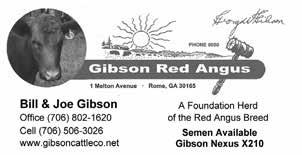

(864) 981-2080


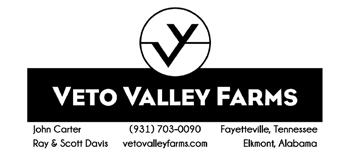
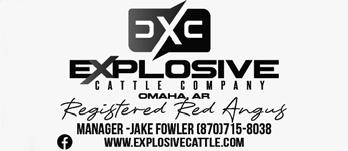
OFFICERS
Andy Camp - President 770-601-3308 • redangus@bellsouth.net
Josh Pierce - Vice President 601-385-7575 • jbarsredangus@gmail.com
Jessica Yance – Secretary/Treasurer 334-790-4953 • jessica@jyjredangus.com
DIRECTORS
Jed Dixon • Jim Yance Danny Winchester • Tiffany Watkins Johnnie Cundiff • Brian Lance
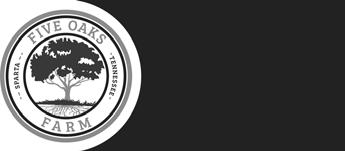
1408 Co. Rd. 35 Horton, AL 35980
Breeding Red Angus since 1965! Henry, Jane, Jim, Kathy, Tim, James Ray & Natalie (205) 466-7612 • Tim Cell (205) 446-5090 tim@whitleyredangus.com


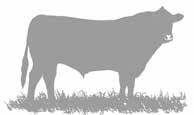







7633 Old Coffee Rd.
Building Better Beef

Ken & Cheri Graves (307) 738-2247
2384 Barnum Rd. • Kaycee, WY 82639
Email: gravesredfork@rtconnect.net
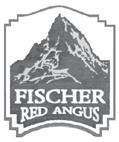



Luke Larson: (406) 207-6776
Amie & Teri Angelo: (406) 207-4046 angelocattleco@blackfoot.net
Angelo Lane
PO Box 361 • Drummond, MT 59832
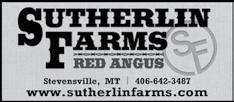


Raising Reg. & Comm. Red Angus Cattle Since 1990 Powderville, MT
406-554-3484 • 406-554-3152 • C: 406-853-0502
Tom: 406-951-2772 • Aaron: 406-853-2885 tlostendorf@rangeweb.net
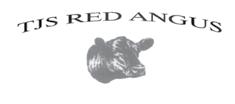


Glacier Red Angus



Knebel Gallatin Gateway, MT • (406) 223-4964 www.harmonyhillredangus.com
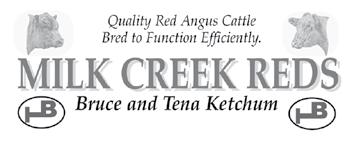
Sky Country!

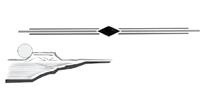






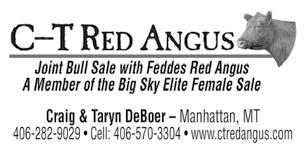

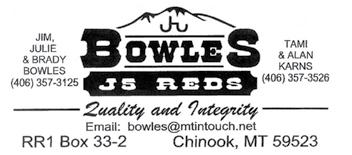
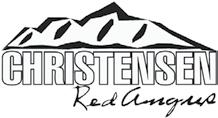





Madri Blom – blom.anebell@gmail.com
Lacey Sutherlin – threeccattle@yahoo.com
Tom Morton – tommorton438@yahoo.com
AREA 1 - West
Alaska • California • Hawaii • Idaho • Nevada • Oregon Washington
George Murdock, Director • Keith Hickle, Region A Director
Western States Breeders are on page 76
AREA 3 - Rocky Mountain
Utah • Colorado • Wyoming – Aaron Kravig, Director
& Katy Johnson 5822 CR 23 • Veteran, WY 82243
Cory 307-575-0169 • Katy 307-575-2677
AXTELL CATTLE COMPANY
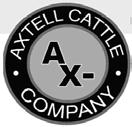
Brian and Jamie Jo Axtell PO Box 21 – Anton, CO 80801 970.383.2332 or 970.554.1132 www.axtellcattlecompany.com Follow us on Facebook!
AREA 2 - Montana Kay
KRAVIG RED ANGUS
“Cattle Working for You”
Sound Udders – Great Dispositions
Moderate Frames – Calving Ease – Excellent Growth www.kravigredangus.com h1: 719-446-5355 • h2: 719-446-5391
Karval, Colorado
Recently p chased Crump Red Angus H d

Bull Sale - Feb. 27, 2025 Lewiston, Idaho www.mccannredangus.com
Lori McCann • 208-743-5517
AREA 5 - Northern Plains
Minnesota • North Dakota • South Dakota
Craig Bieber, Region B Director Stephanie Jung, Director








Forster Red Angus





12523 245th Ave Firesteel, SD 57633 (605) 850-9878 or (605) 865-3190 bhrredangus@lakotanetwork.com www.pedersonredangus.com
Robert and Kara • Robby 5096 Campbell Rd • McIntosh, SD 57641 701-422-3721 www.campbellredangus.com

Producing Cattle That Perform For The Cattleman
Diamond C North Dakota
RED ANGUS
The Olsons
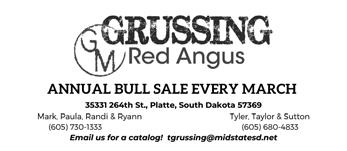
Annual Sale in March

Chase and Tiffany Furstenau Cavalier, ND 701-520-0671 chasefurstenau@gmail.com www.diamondcnd.com
RED ANGUS
Scott & Connie Kueffler
Michala & Kirsti • Bonnie Kueffler Box 187 • Grenora, ND 58845 701-694-3620 (h) • 701-641-0519 (c) redangus@nccray.com • www.dkredangus.net
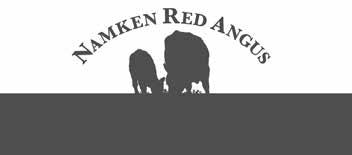
Kansas
Kansas


info@hergredangus.com



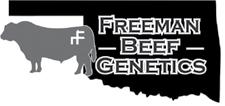
Dan
AREA 7 - Northeast

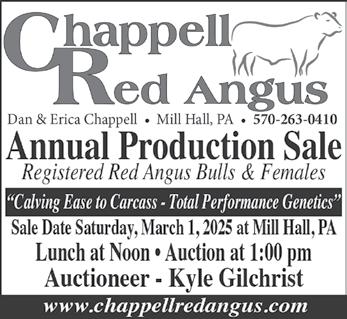





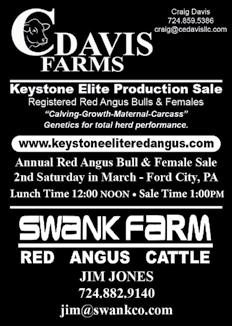
AREA 8 - Southeast
AREA 9 - Midwest
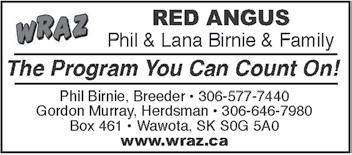


ROUSE RED ANGUS
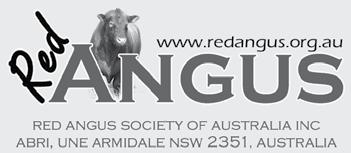

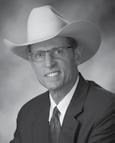
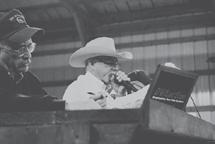
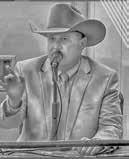



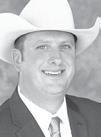
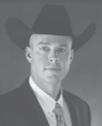
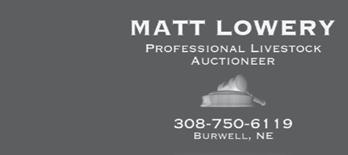










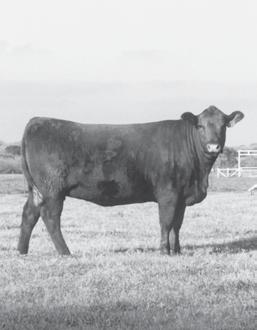
ANGUS RANCH
Texas Red Angus Champion Genetics
313 FM 2488
Covington, TX 76636 (254) 874-5868 • (817) 774-7204 cell www.peacockredangus.com
Where Quality Cattle are the Rule, Not the Exception!
Kansas Red Angus Breeders
TANNER RED ANGUS
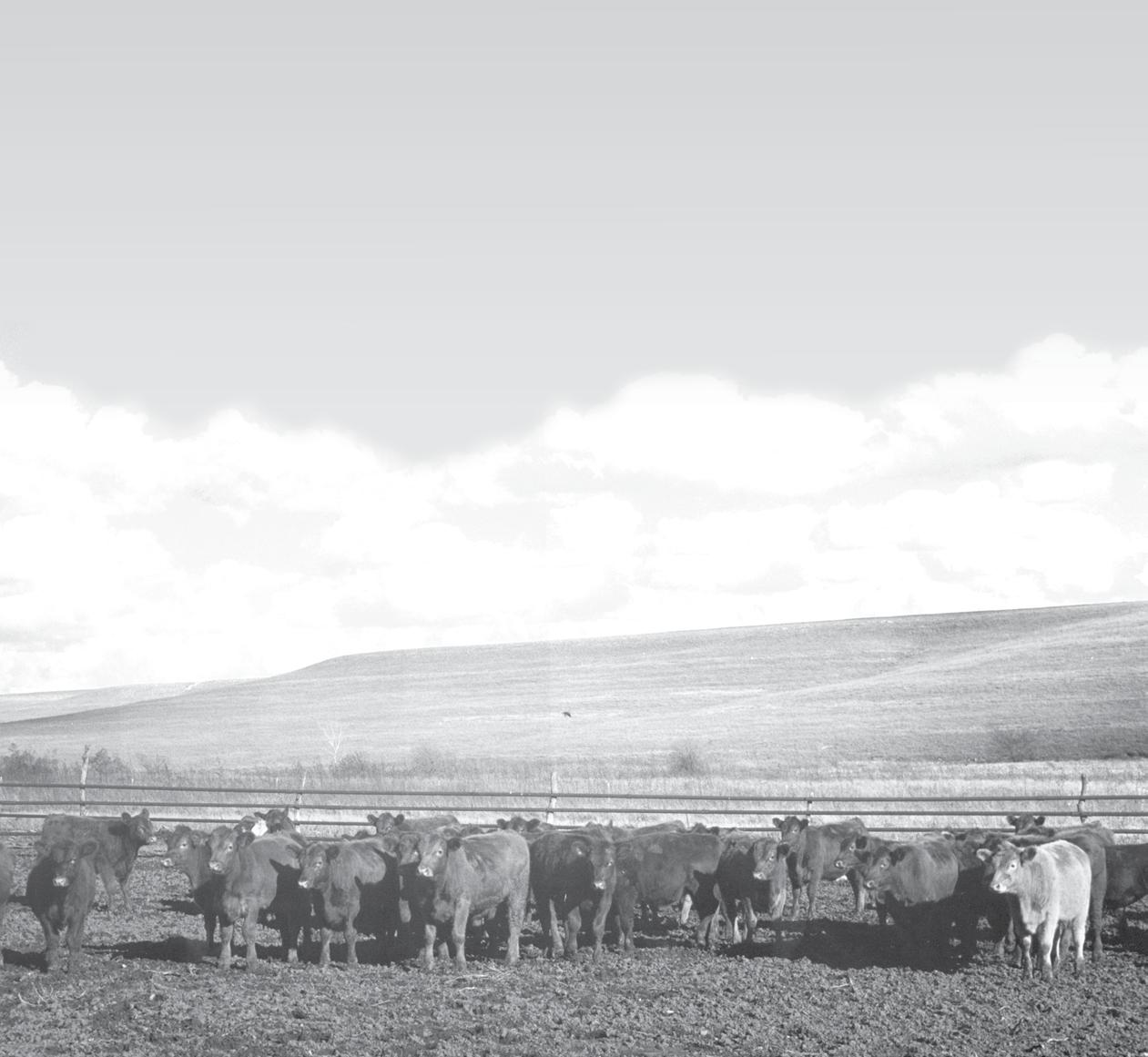
In the Flint Hills of Kansas
“Functional Cattle from the Heartland” 3627 NW 94th Rd Topeka, KS 66618 rtannerdvm@sbcglobal.net
Rick Tanner Family 785-640-2941
Bulls and heifers for sale by private treaty.

Leoti, KS • 620-874-1437 • fswedel@wbsnet.org WedelRedAngus.com • WedelBeefGenetics.com Annual Bull & Comm. Sale – 2nd Tues. of March
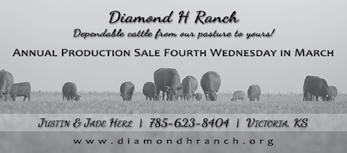

Pelton
Simmental • SimAngus
Red Angus Private Treaty Bulls
Dustin Pelton 620-285-5465
Lynn Pelton 620-285-9934 Burdett, KS

2346B N Road • Strong City, KS 66869 Joe Mushrush (620) 340-7461 • Daniel Mushrush (620) 340-9774
Annual Sale Third Friday in March
Tim Flaming Ryan Flaming 620-382-4894 620-382-5107
FLC
FLAMING LIVESTOCK CO.
REGISTERED RED ANGUS
465 170th • Hillsboro, KS 67063 620-367-8350 hm
HARMS PLAINVIEW RANCH
Mark and Kim Harms
2528 250th St. • Lincolnville, KS 66858 (620) 924-5544 • hprbulls@tctelco.net Red Angus - Angus - Charolais
“Your Partner in Progress” Bulls, Females and Embryos by Private Treaty
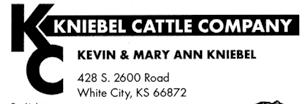
KEVIN & MARY ANN KNIEBEL

428 S. 2600 Road • White City, KS 66872 (785) 349-2821 • Fax (785) 349-2822 Email: kniebel@tctelco.net www.Kcattle.com

HOFT RED ANGUS
18 mo.& 2 yr. old Registered Bulls No feed ration, range tested, hard ‘n ready Commercial Bred Heifers in the fall
Rick Pflughoeft • Ellsworth, KS 785-472-3734 • 785-472-1033
Ramsdale Reds
“Red Angus since 1964” John & Dan Ramsdale 780 S.E. 130 Ave. • Murdock, KS 67111 (316) 542-3297 • (620) 532-6060
Private Treaty Bred Females and Bu s For Sale
Enhancing GridMaster Potential
Calendar of Events
West Wind’s 2024 calf crop demonstrates substantial gains in GridMaster index value. Our program follows a focused genetic plan, creating high-value animals for terminal markets and setting the foundation for premium-quality beef production. October

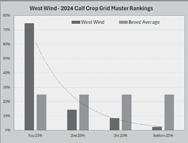
Ryan & Jenny Hoksbergen
CREEK RANCH

1 Final Ad Reservation/Editorial Deadline for November Red Angus Magazine 1 Halfmann Red Angus Sale, Miles, TX 2 Bayou Creek Ranch, Lone Grove, OK 4 Buffalo Creek Red Angus, Wichita Falls, TX
4 Fall Colors - Bradley Cattle Co./Hankins Farms, Republic, MO
4 Red Dirt Round Up, Canton, OK
6 McEntire Red Angus Fall Production Sale, Sweetwater, OK 7-8 R. A. Brown Ranch, Throckmorton, TX 10 Watkins Cattle Co., Harrison, AR 11 Niobrara Red Angus Redefined Female Sale, Niobrara, NE
11 Star G Ranch & Friends, Douds, IA 13 Nixon Family Farms “Crimson & Coal” Sale, Floydada, TX
Sandridge Select 2025, SCOnlineSales.com 16 Bieber Fever in the Southeast, Swainsboro, GA 17 Mushrush Red Angus Fall Female Sale, Elmdale, KS
NILE Red Angus Sale, Billings, MT
Ranch Online Fall Female Sale, DVAuction.com
L83 Ranch Online Female Sale, SCOnlineSales.com
Lacy’s Red Angus & MC Livestock, Drexel, MO
Female Dispersal, Paradise, KS
Beckton Red Angus Online Fall Production Sale, DVAuction.com
Bieber Fever Fall Sale, Leola, SD
McCann Red Angus Online Fall Female Sale, DVAuction.com
Minnesota Red Angus Annual Banquet, Brookings, SD
Reds on the Prairie, Brookings, SD
K2 Red Angus Fall Female Sale, Wheatland, WY
Leachman Cattle of Colorado Female Sale
Chiefline Red Angus, Abernathy, TX
Ludvigson Fall Herdbuilder Sale, Shepherd, MT
RAAA Office Closed
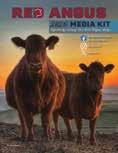

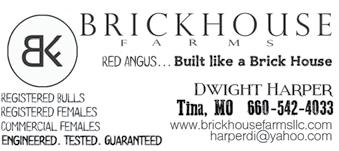

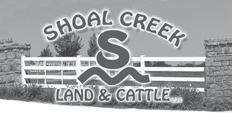

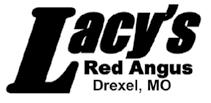
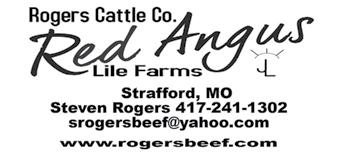
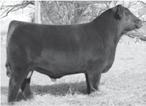




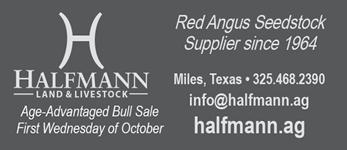




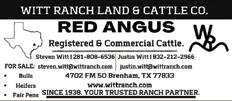
Advertiser Index
3K Land & Cattle Co. 95
4B Red Angus LLC 84
5L Red Angus 89
Aberdeen Angus World 92
ABS 57
Adams, Arnold & Alicia 84
Andras Stock Farm 41, 96
Angelo Cattle Co. 88
Axtell Cattle Co. 90
Bar S Ranch 67
Barenthsen-Bullinger Red Angus 90
Beckton Red Angus IFC, 1, 88
Beitia Livestock 86
Bet On Red 45
Bieber Red Angus 5
Big Sky Elite Female Sale 29
BIM Red Angus 91
Bola Red Angus 81, 95
Bow Creek Farm & Cattle 91
Bowles J5 Reds 89
Brickhouse Farms 95
Buffalo Creek Red Angus 43
Bull Hill Ranch 87
Bullis Creek Ranch 83, 94
C & J Red Angus Ranch 87
C-T Red Angus 89
Calvo Family Red Angus 3
Campbell Red Angus 90
Cattle Visions 34
Cedar Hill Farm 69, 91
Chappell Red Angus 91
Chiefline Red Angus 95
Choat Cattle Co. 83
Christensen Red Angus 89
Crockett Ranch 91
Cross Diamond Cattle Co. IBC, 83
Dahlke Red Angus 90
Daigger-Orr Red Angus 83
Darrel Holliday Ranch 86
Deichmann Livestock Brokerage 92
Diamond C North Dakota 90
Diamond H Ranch 93
Diamond P Cattle 87
DK Red Angus 90
Drees, Eric 92
Emerald Earth 84
Explosive Cattle Co. 87
Feddes Red Angus/ C-T Red Angus 33
Females of Fall 30
Finger Lakes Cattle Co. 91
Fischer Red Angus 88
Five Oaks Farm 87
Flaming Livestock Co. 93
Lautenschlager & Sons 30, 86
Lazy D Red Angus 60
Lazy J Bar Ranch 90
Leachman Cattle of Colorado 39
Leland Red Angus 7, 88
Livestock Digital 81
Loonan Stock Farm 92
Loosli Red Angus 86
Lost Creek Red Angus 89
Lowderman, Cody 92
Lowery, Matt 92
Lucht Red Angus 89
Ludvigson Stock Farms 21, 23
Maple Oaks Red Angus 95
Mathias Ranch 92
McCann Red Angus 37, 86, 88, 90
McLean Red Angus 87
McMurphy Farms 65, 91
McPhee Red Angus 86
Mercer Farms 87
Merck Animal Health 18, 19
Milk Creek Reds 89
Miller Chiefline 73
Minnesota Red Angus Assn. 90
Moose Creek Red Angus 15
MS Red Angus Fall Classic and Autumn
Extravaganza 77
Mushrush Red Angus 35, 93
Namken Red Angus 90
Nelson Red Angus 86
NILE Red Angus Sale 32
Niobrara Red Angus 24, 25
Nixon Family Farms 51
Northern Lites Ranch 89
OHR Red Angus 90
Orton Ranch Red Angus 63
Ory’s 07 Red Angus 95
Osborn Red Angus 87
Ostendorf Red Angus 88
Peacock Angus Ranch 93
Pederson’s Broken Heart Ranch 38, 90
Pelton’s Red Angus 93
Pieper Red Angus 13, 83
Plain Jan’s 93
Pleasant View Farms 91
Polivka Farms Red Angus 83
Private Treaty Sales 83
Quality Genetics Red Angus 95
Quartz Valley Red Angus 86
R.A. Brown Ranch 10, 11
Ramdsale Reds 93
Red Angus Society of Australia Inc. 92
Red Fork Red Angus 88
Red Hill Farms 87, BC Red Tie Event 75
Redland Red Angus 46, 88 Reds on the Prairie 54
Rocking Bar H Ranch 86
Rocking R Red Angus 83 Rogers Cattle Co.
Land & Cattle
Red Angus
Schweitzer Red Angus 83
Valley Ranch
Seeger & Rusch Red Angus 22 Select Sires 61 Shamrock Nook 84 Shepherd Red Angus 89 Shoal Creek Land & Cattle 95 Shoco Ranch 89 Solid Rock Red Angus 90
Sonstegard Cattle Co. LLC 76, 90
Spreutels Farm Red Angus 95
Staircase Charolais & Red Angus 83
Star G & Friends 55
Stegall Cattle Co. 86
Sumptown Cattle 84 Sun River Red Angus 89 Sutherlin Farms 88 Tanner Red Angus 93 TJS Red Angus 88
Traylor’s Red Angus 87 Triple Creek Ranch 95 UW-Platteville Pioneer Farm 84
Valnes Ranch Red Angus 90
Veto Valley Farms 87
Walking K Livestock Services 92
Wasem Red Angus 56
Watkins Cattle Co. 16, 17
Wedel Beef Genetics 93
West Wind Red Angus 94
Westphal Red Angus 89
Whitley Red Angus 87
Windrush Farm 95
Wisconsin Beef Improvement Assn 84
Witt Ranch Land & Cattle Co. 95
Woods V Bar X Ranch 86
WRAZ Red Angus 92
Wrights Mill Farm Red Angus 91

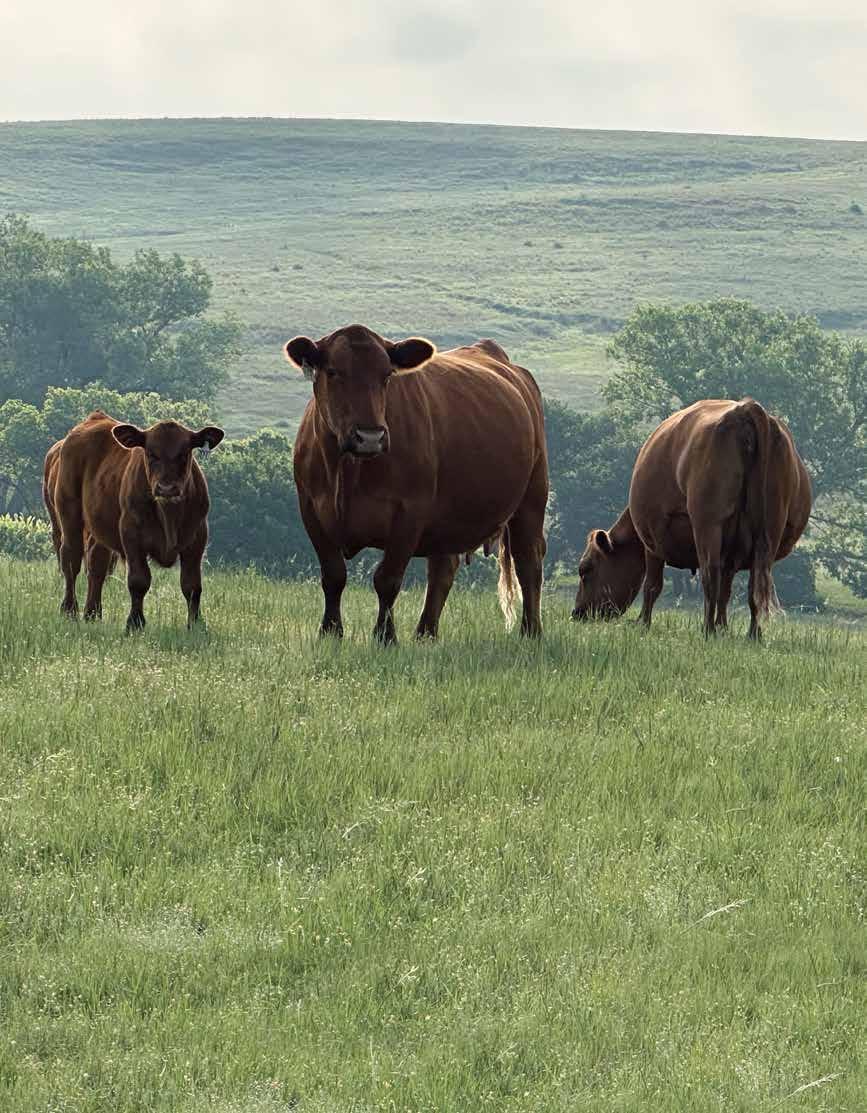

Annual Production Sale
A nnual Produc tion S ale
Monday, December 8, 2025
Monday, December 8, 2025
At the Ranch, Bertrand, NE
A t the Ranch, Ber trand, NE
250 Red Angus coming 2-year-old bulls and
250 Red A ngus coming 2-year- old bulls and

450 commercial bred females
450 commerc ial bred females
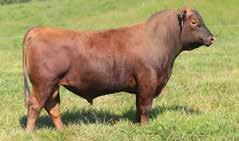

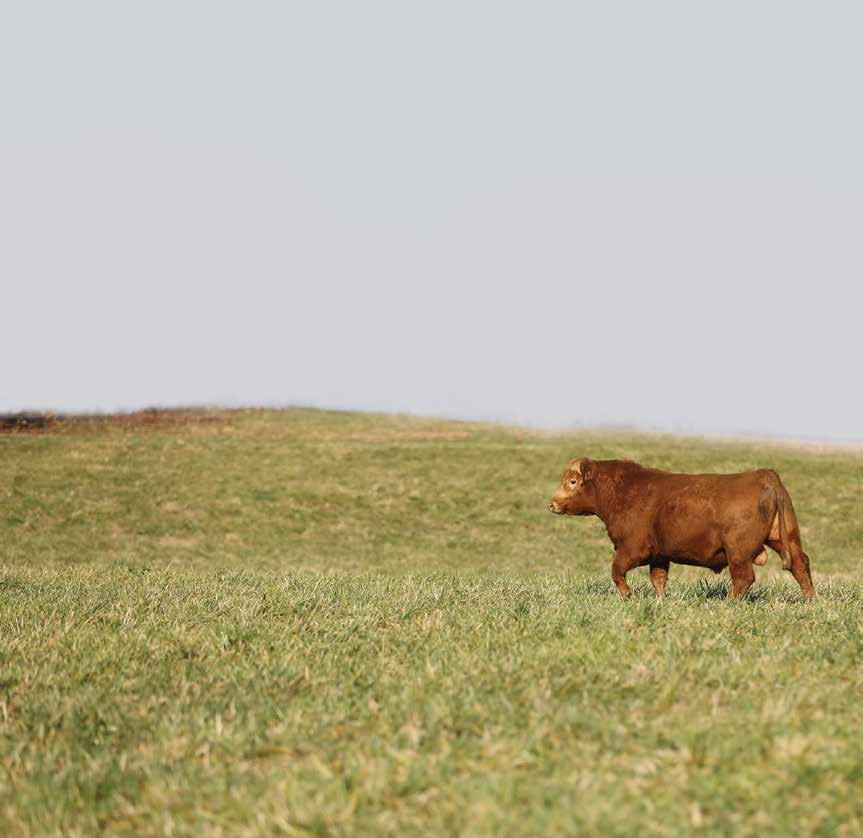

At Red Hill Farms, we focus on cows with: Longevity | Early Breed-ups | Calving Ease Good Udders | Quiet Dispositions Heavy-Weaning Calves Without Creep Feed Sound Feet and Legs | Fertility | Moderate Cow Size Forage Adaptability
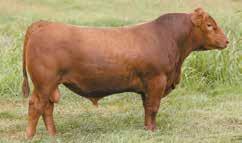


This fall, we are offering age-advantaged bulls from the top of our spring 2023 crop.
We also offer a comprehensive data set in the catalog on each sale lot: Growth Traits | Carcass Ultrasound | GE EPDs | Disposition Scores | Foot Scores | Cow Weights and BCS Hair Scores | $Profit Indexes









